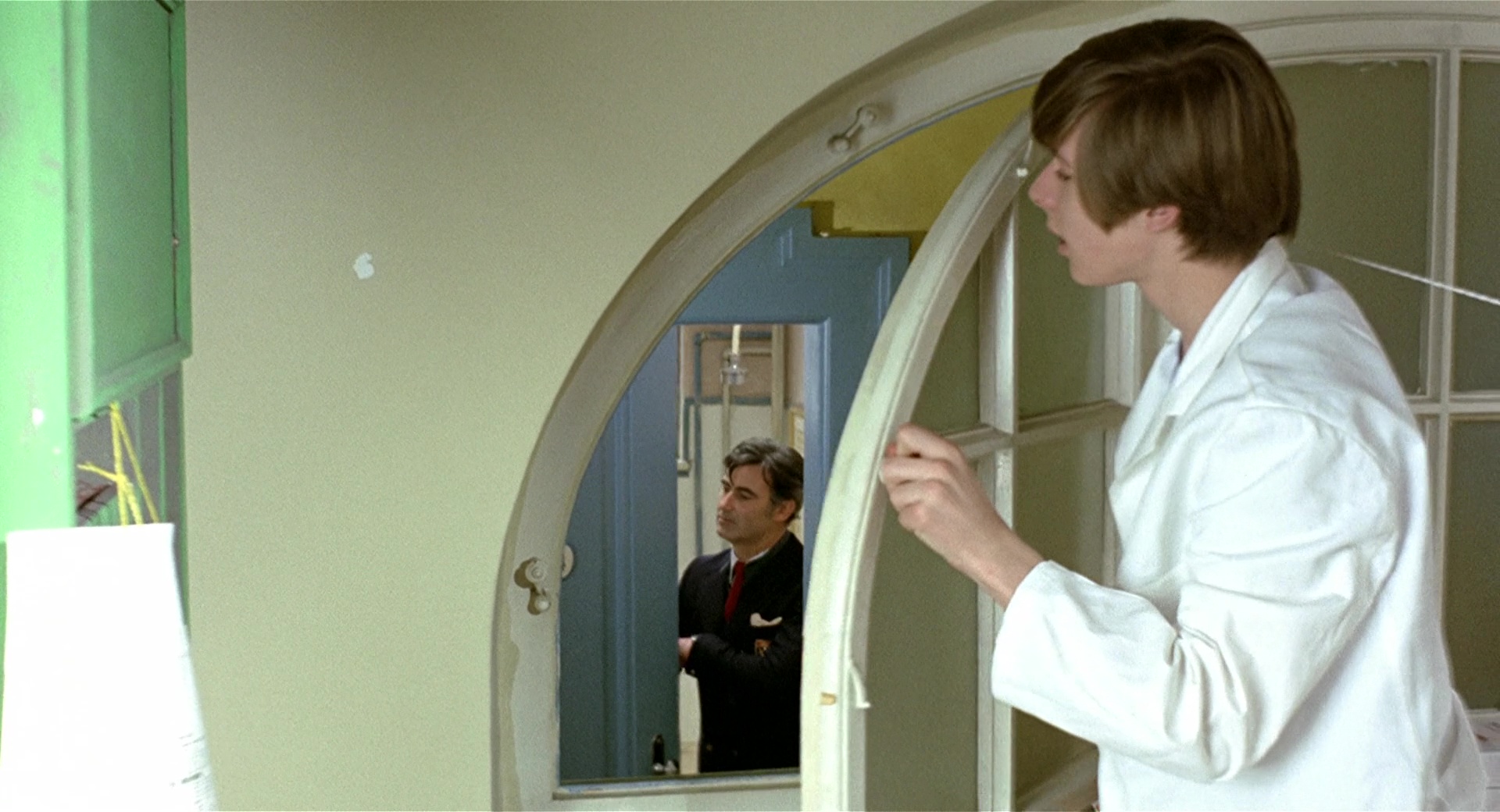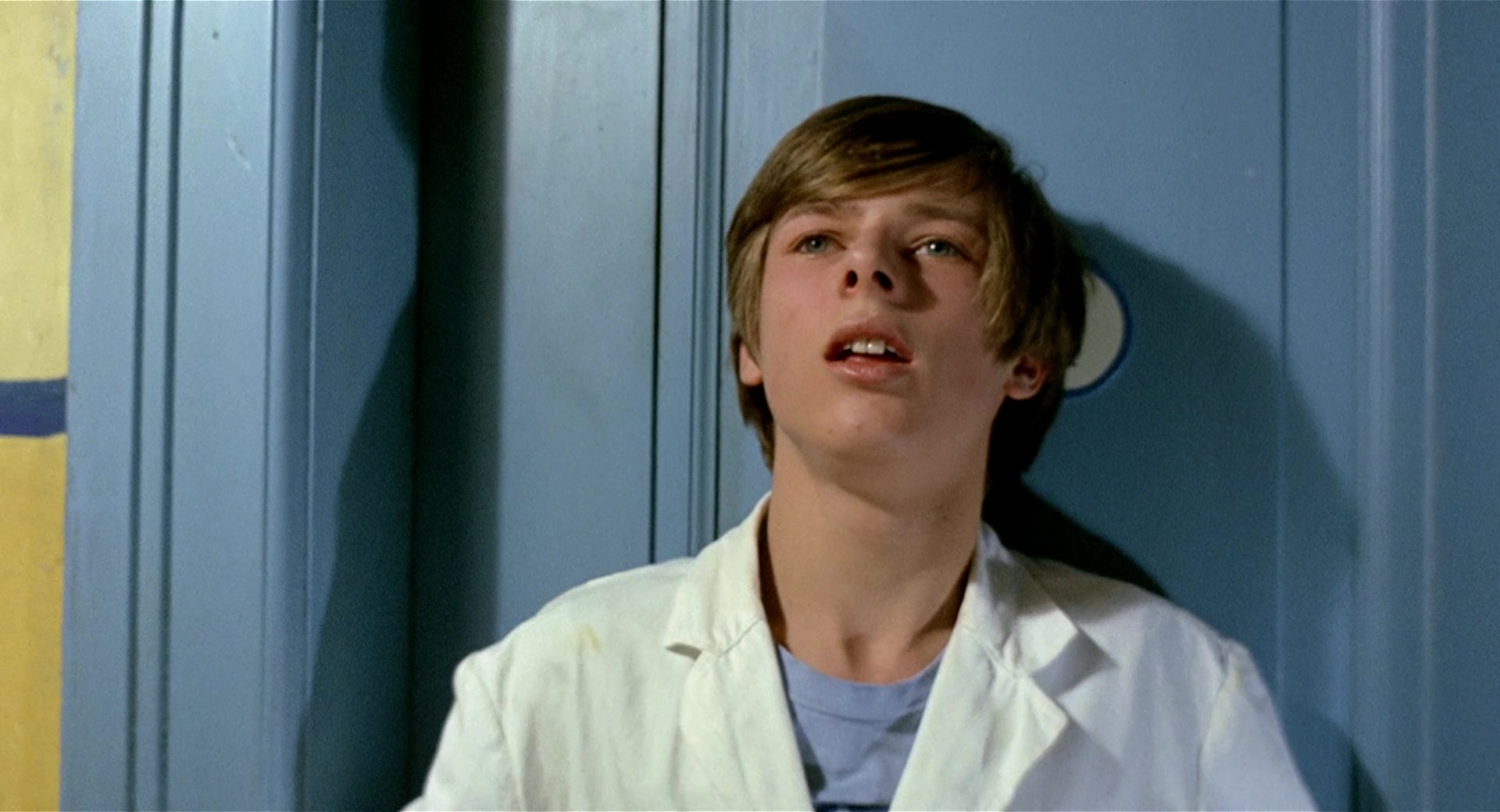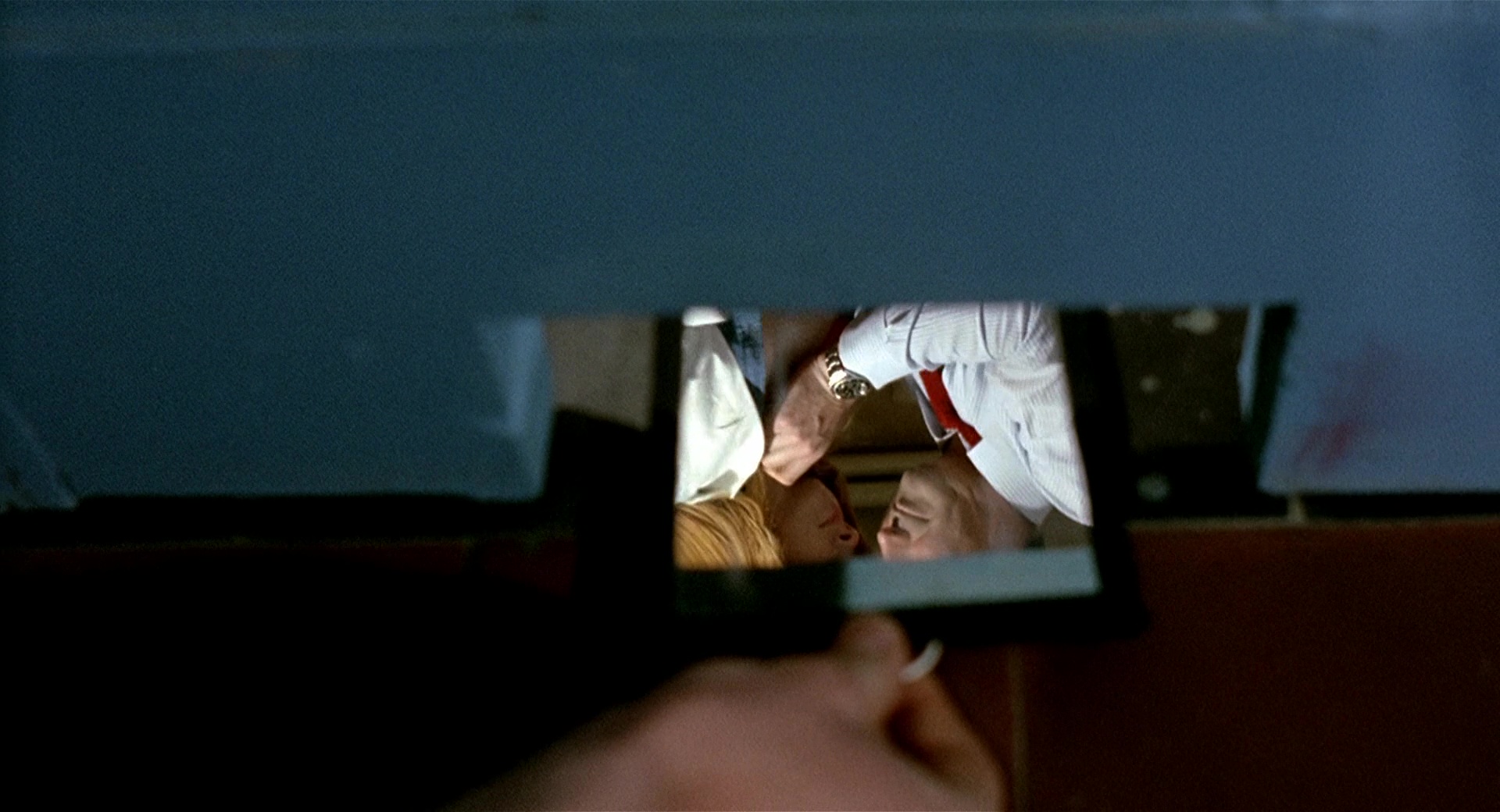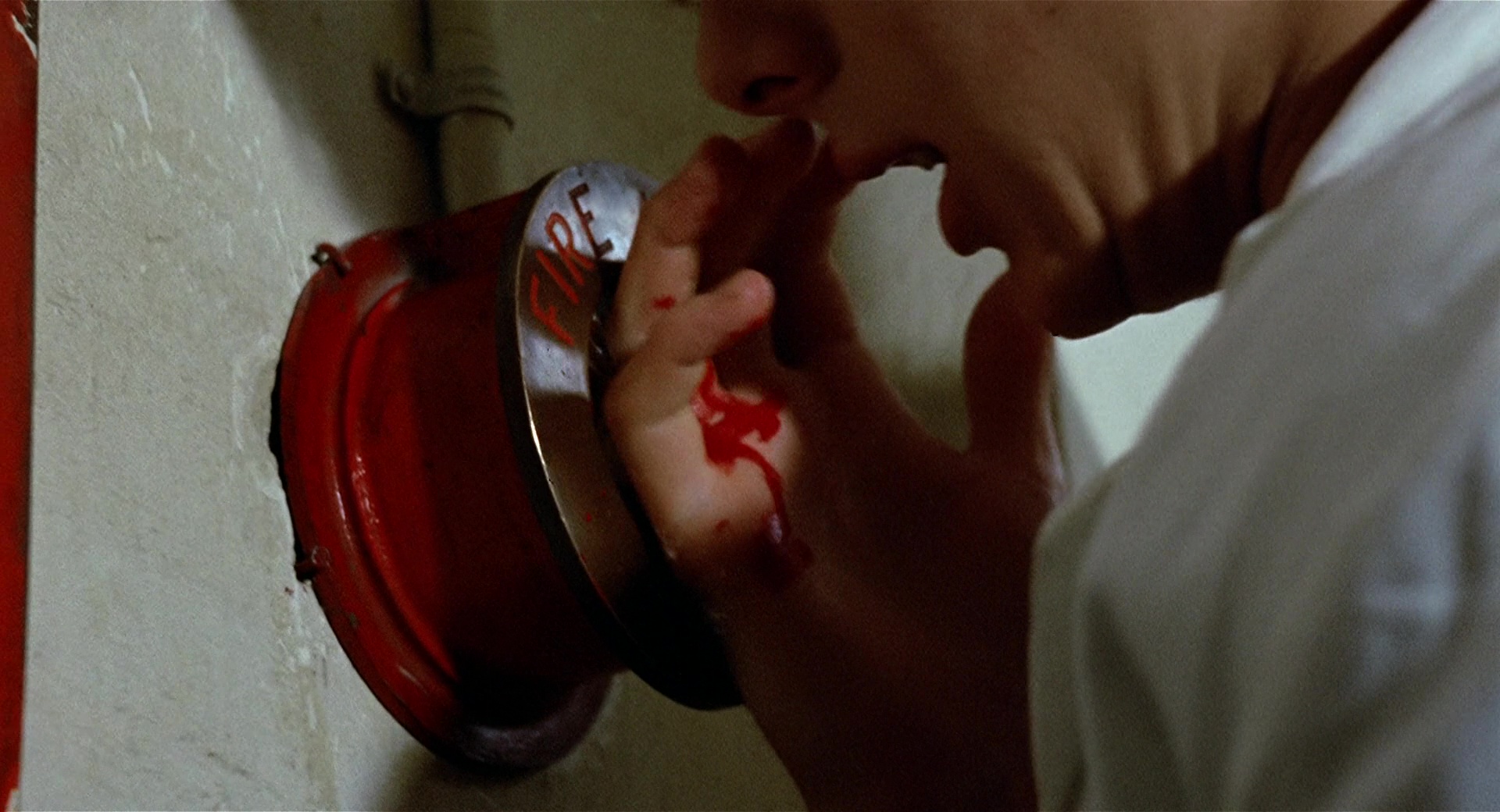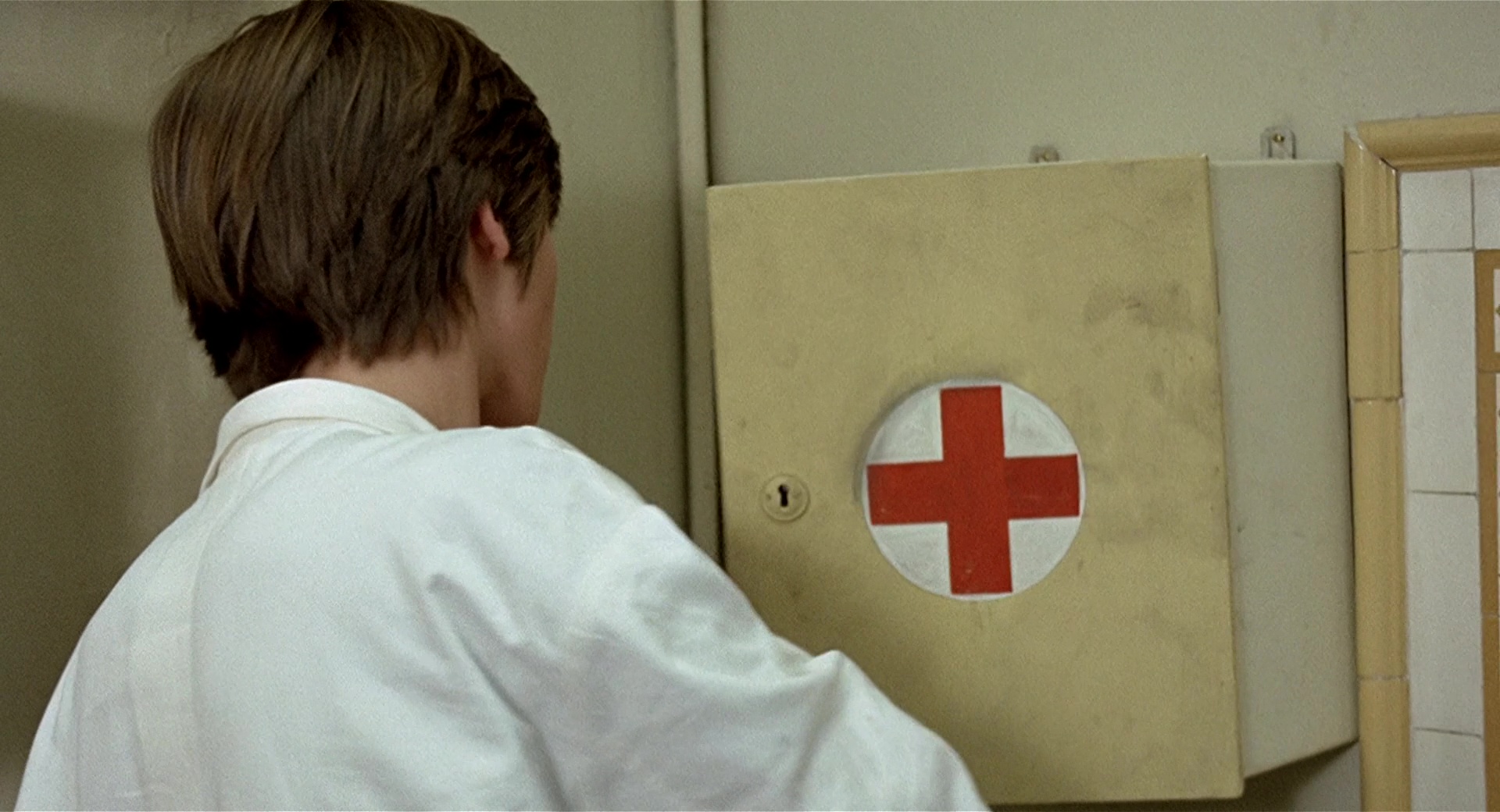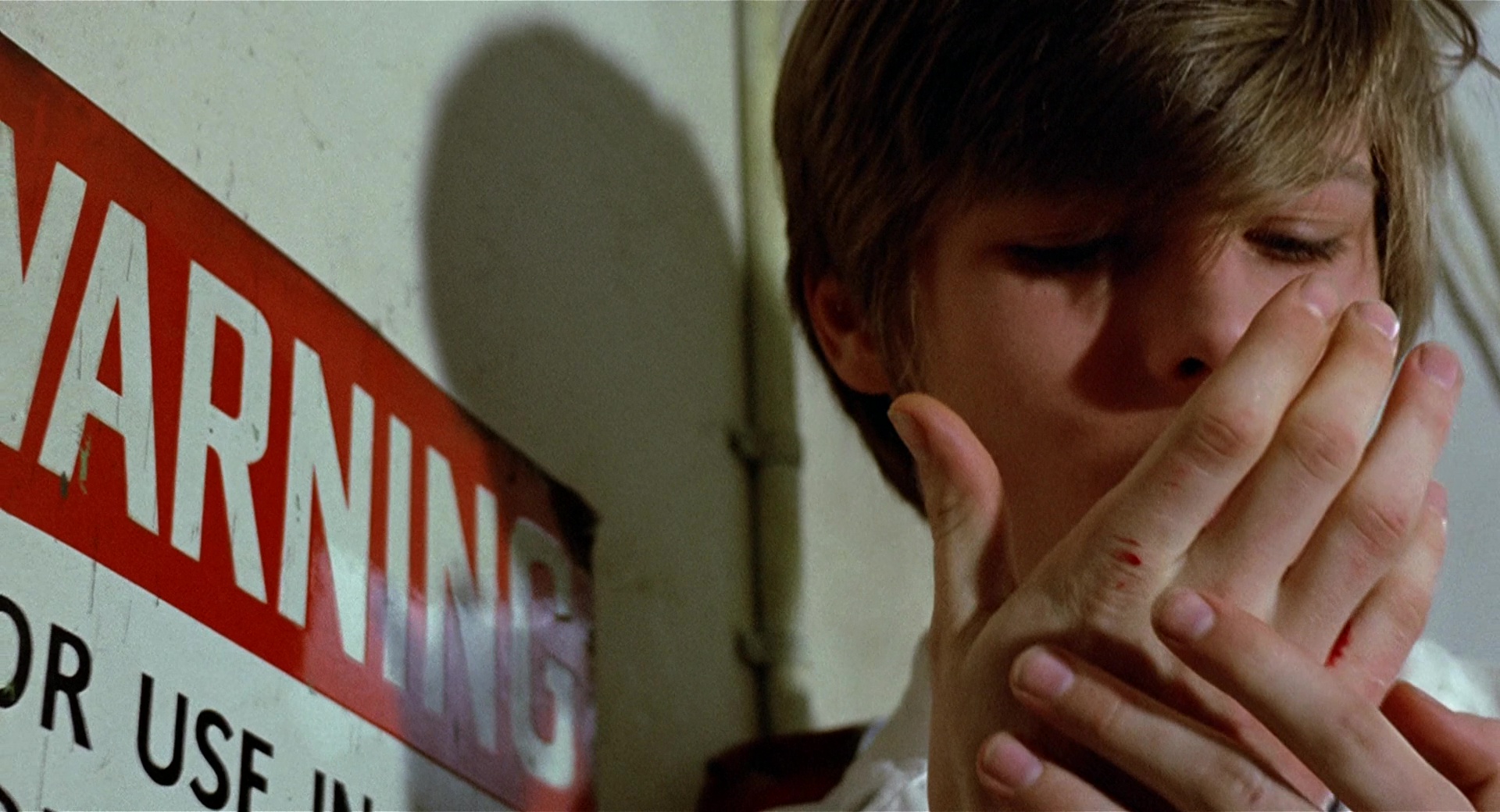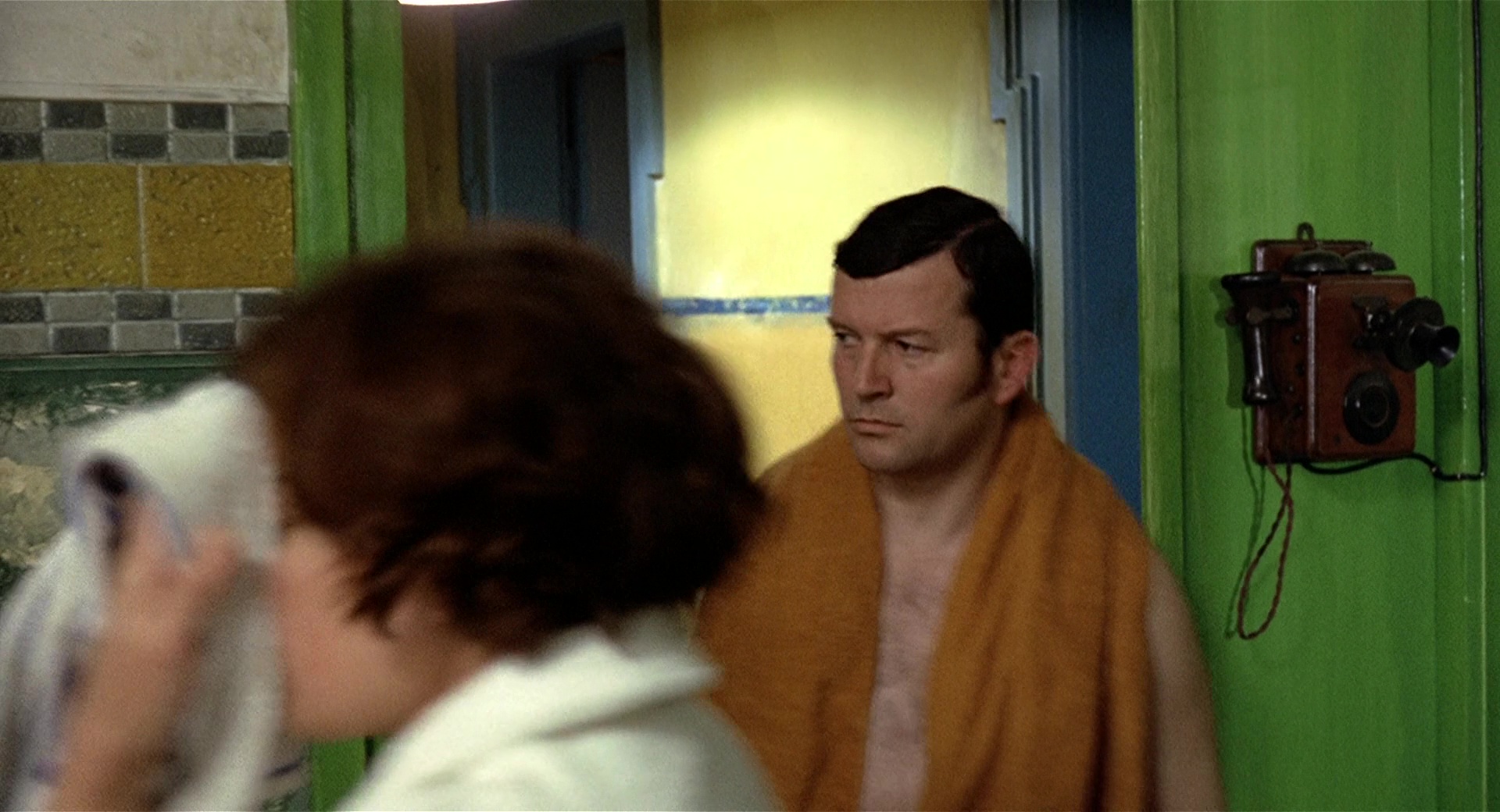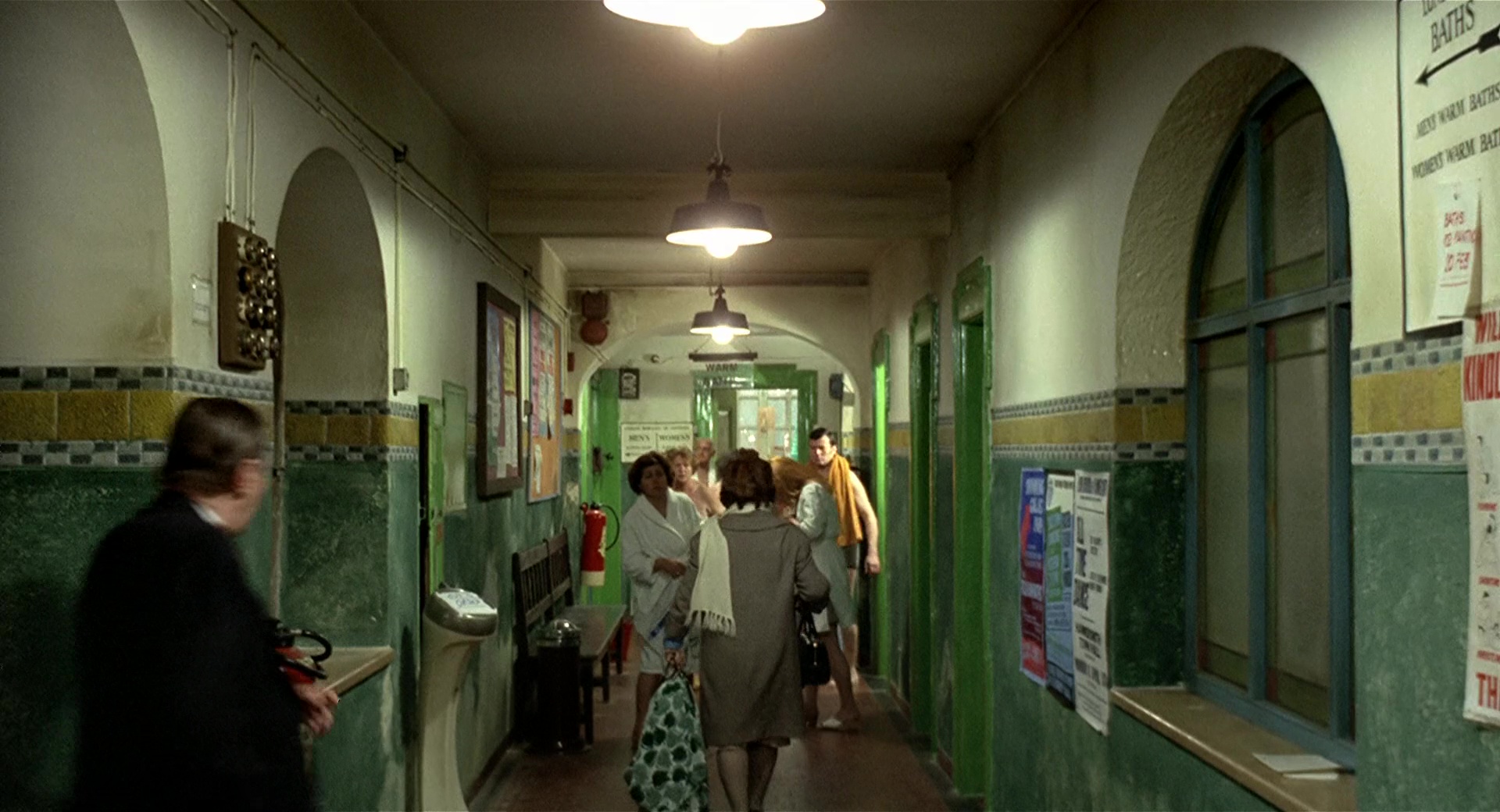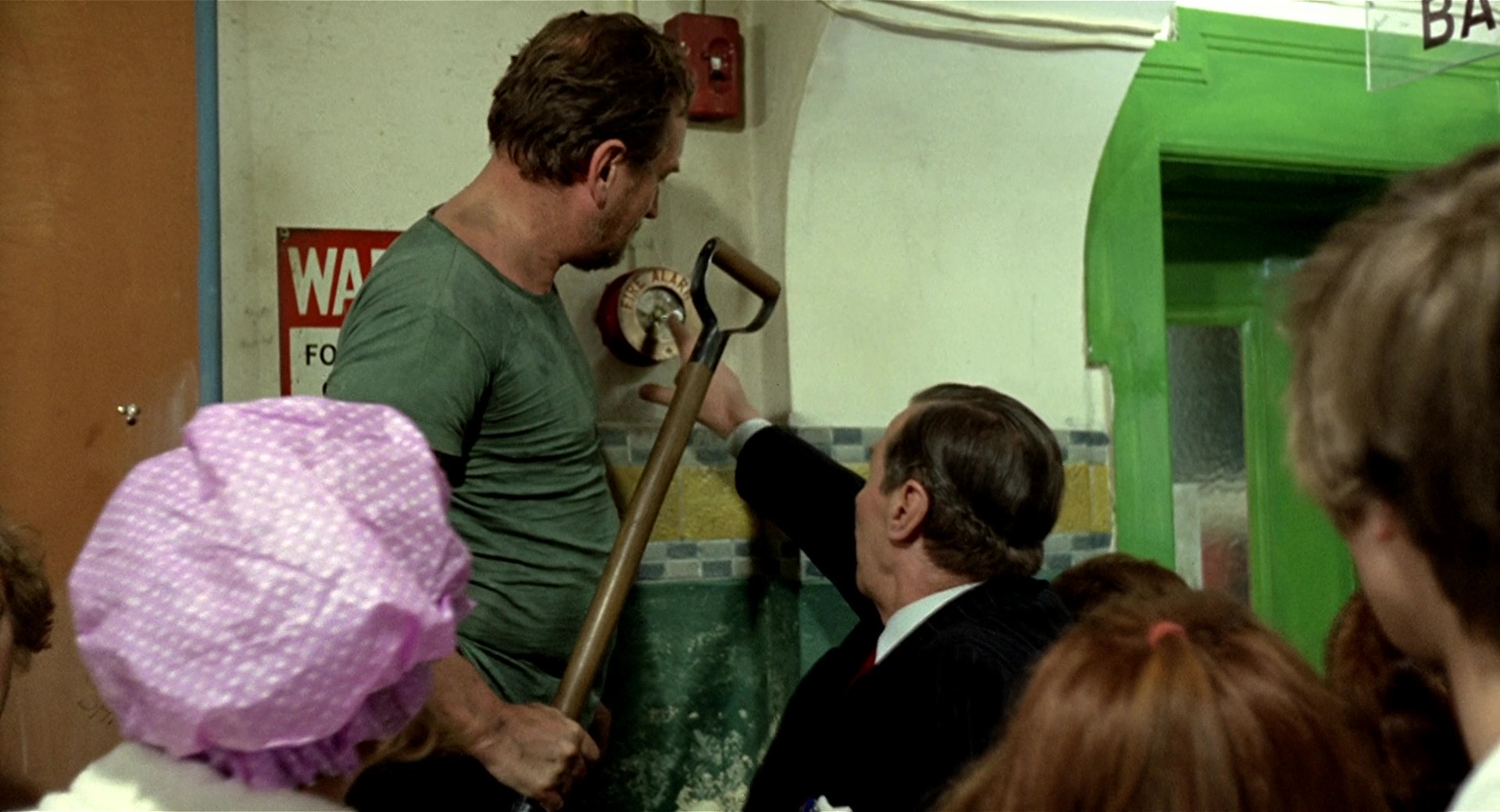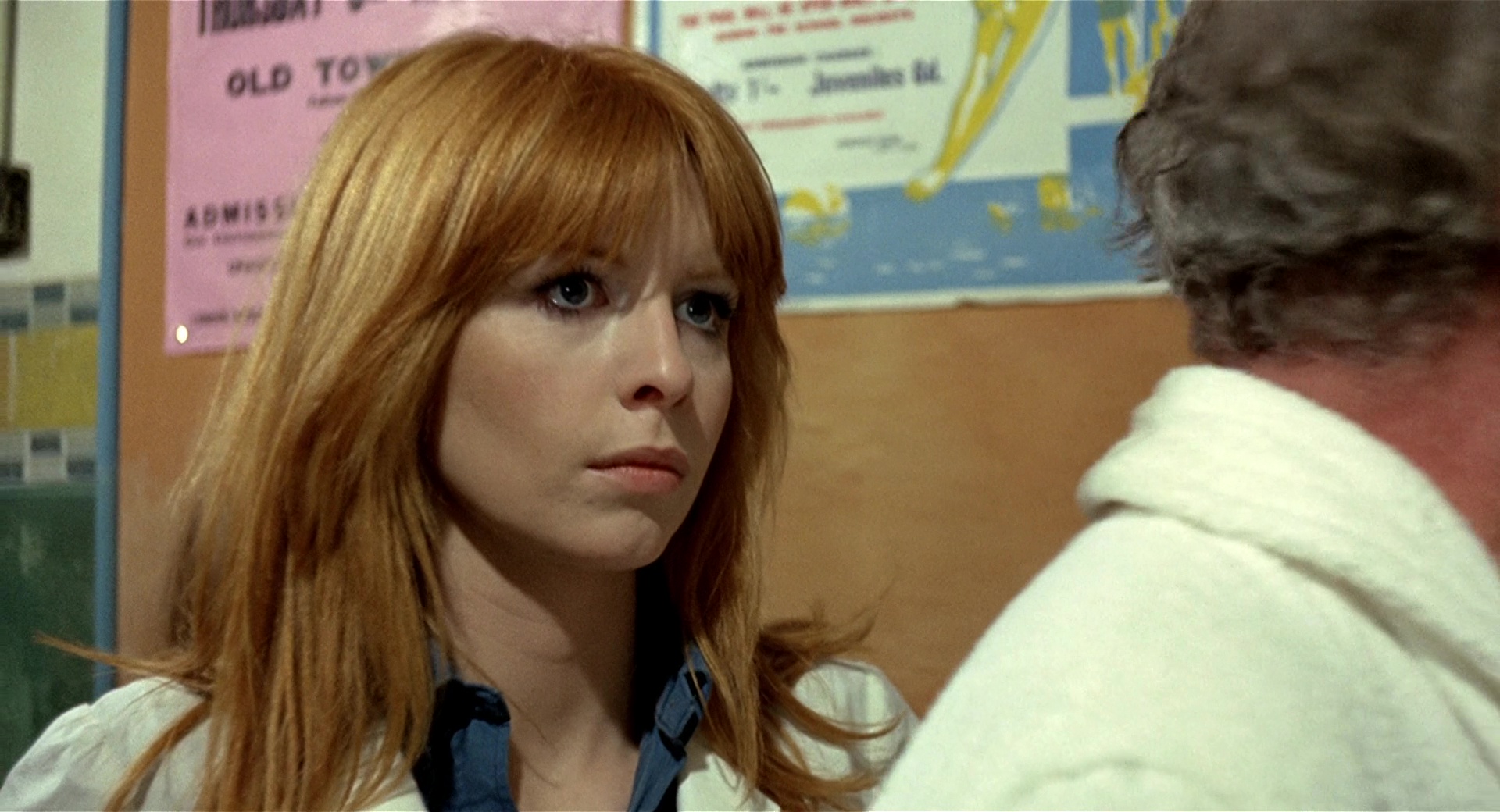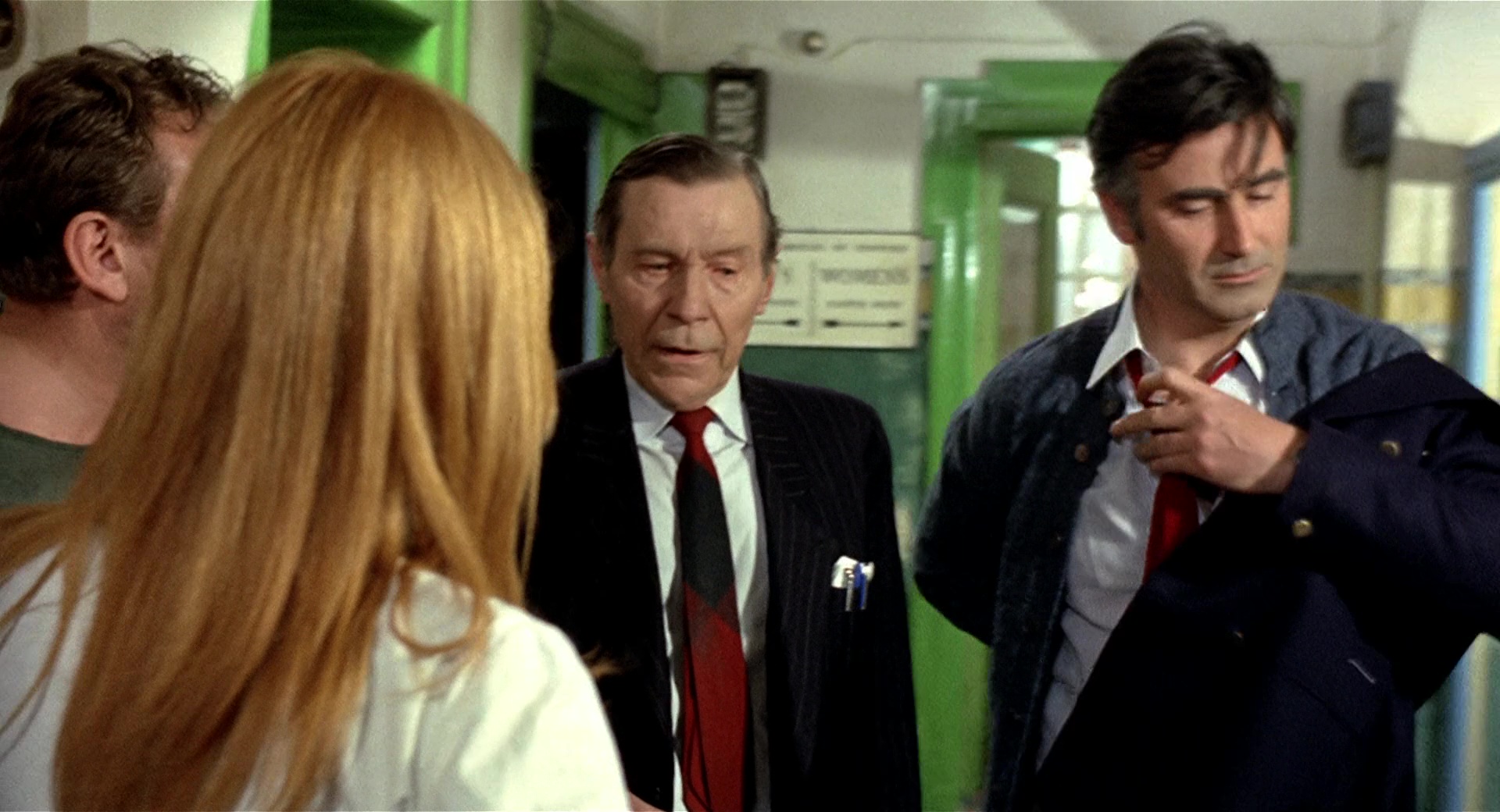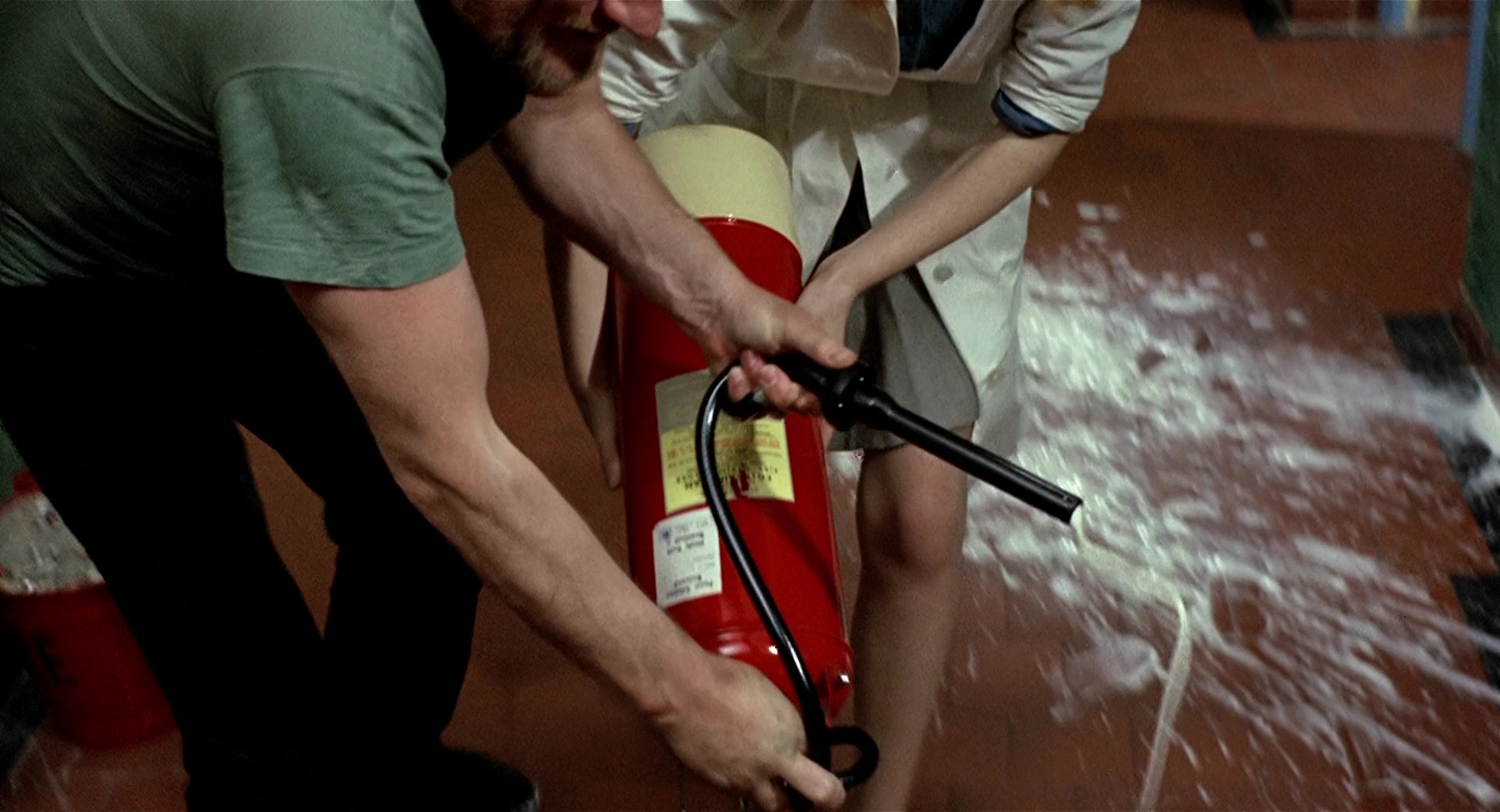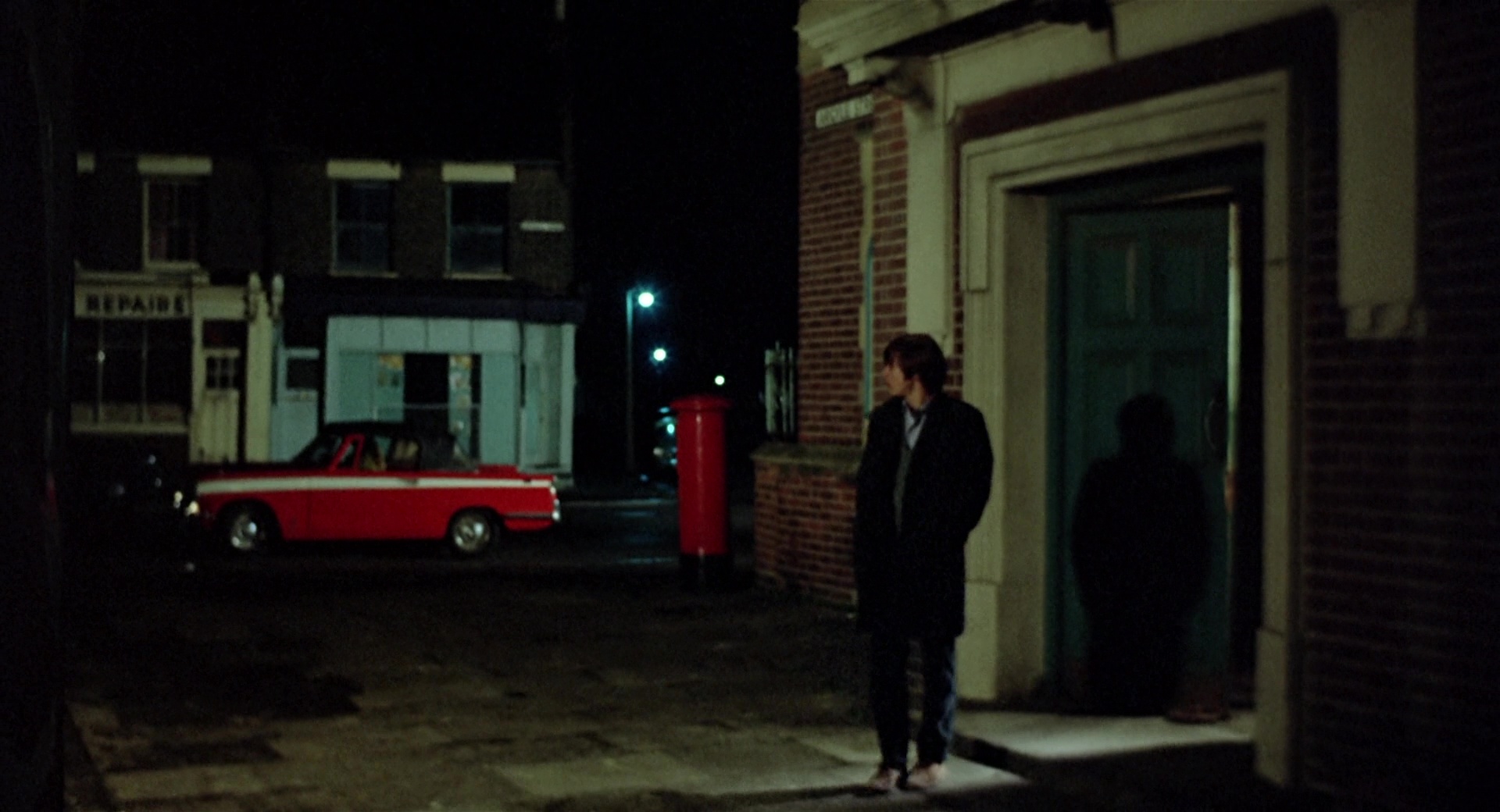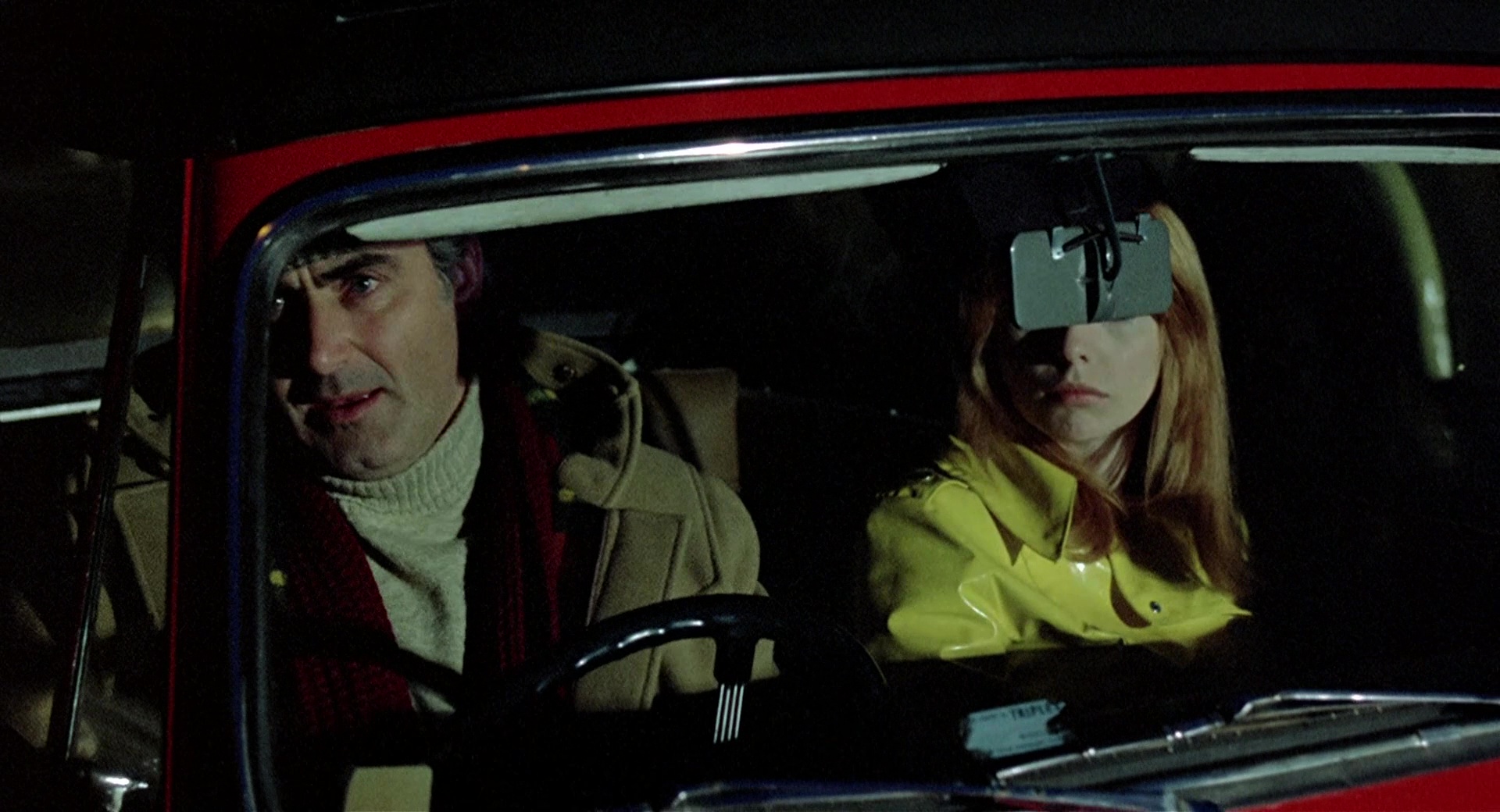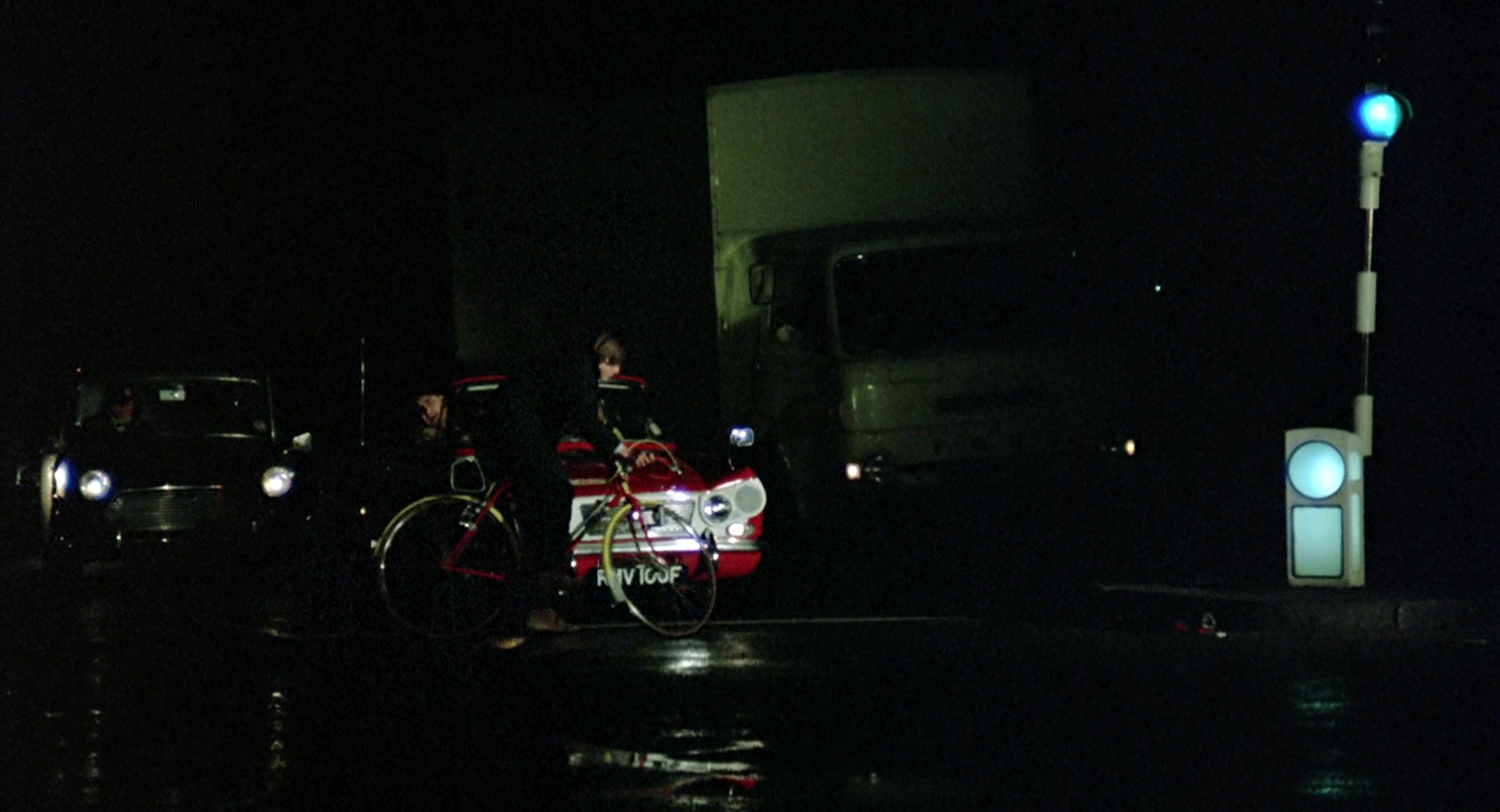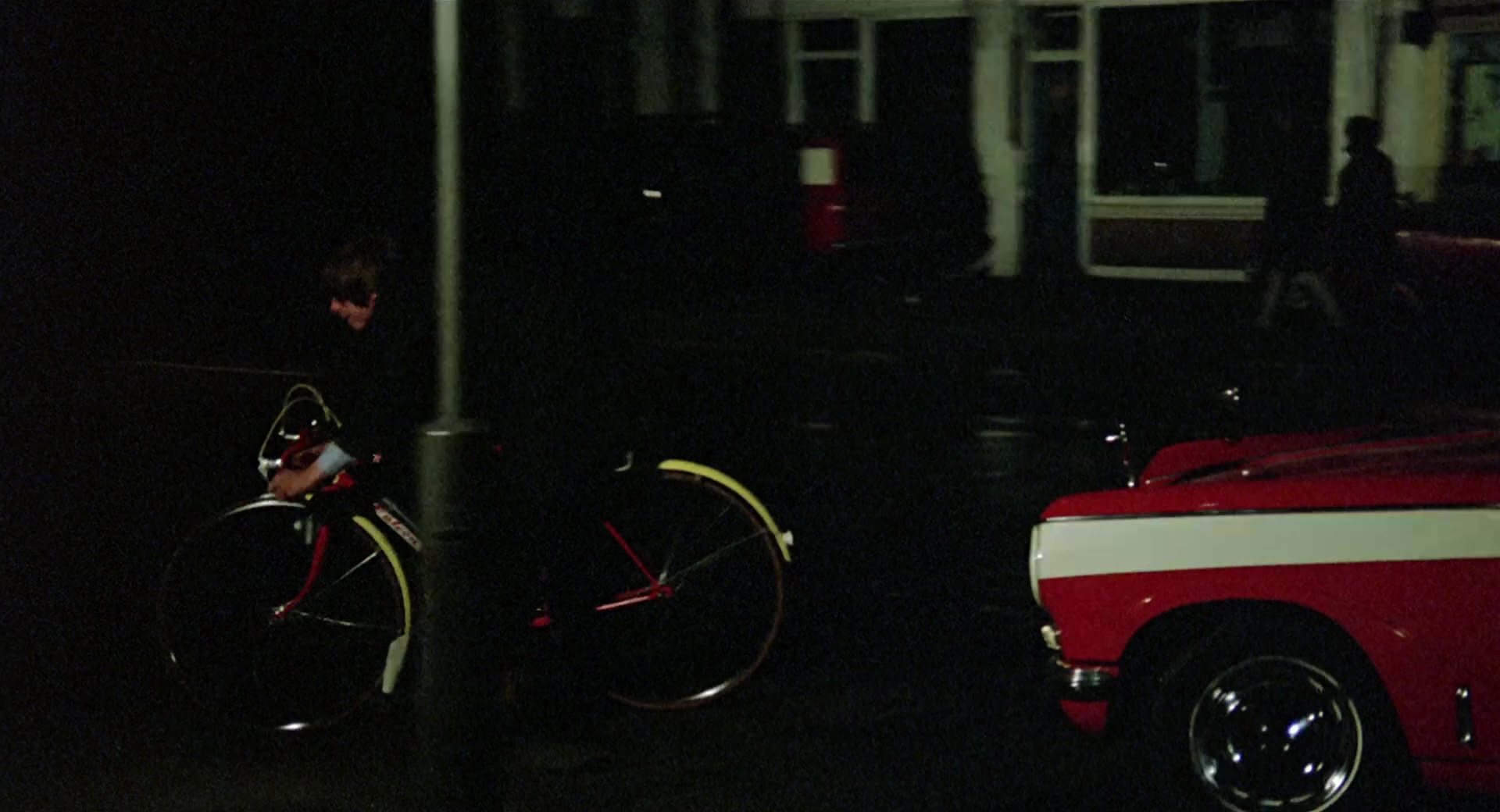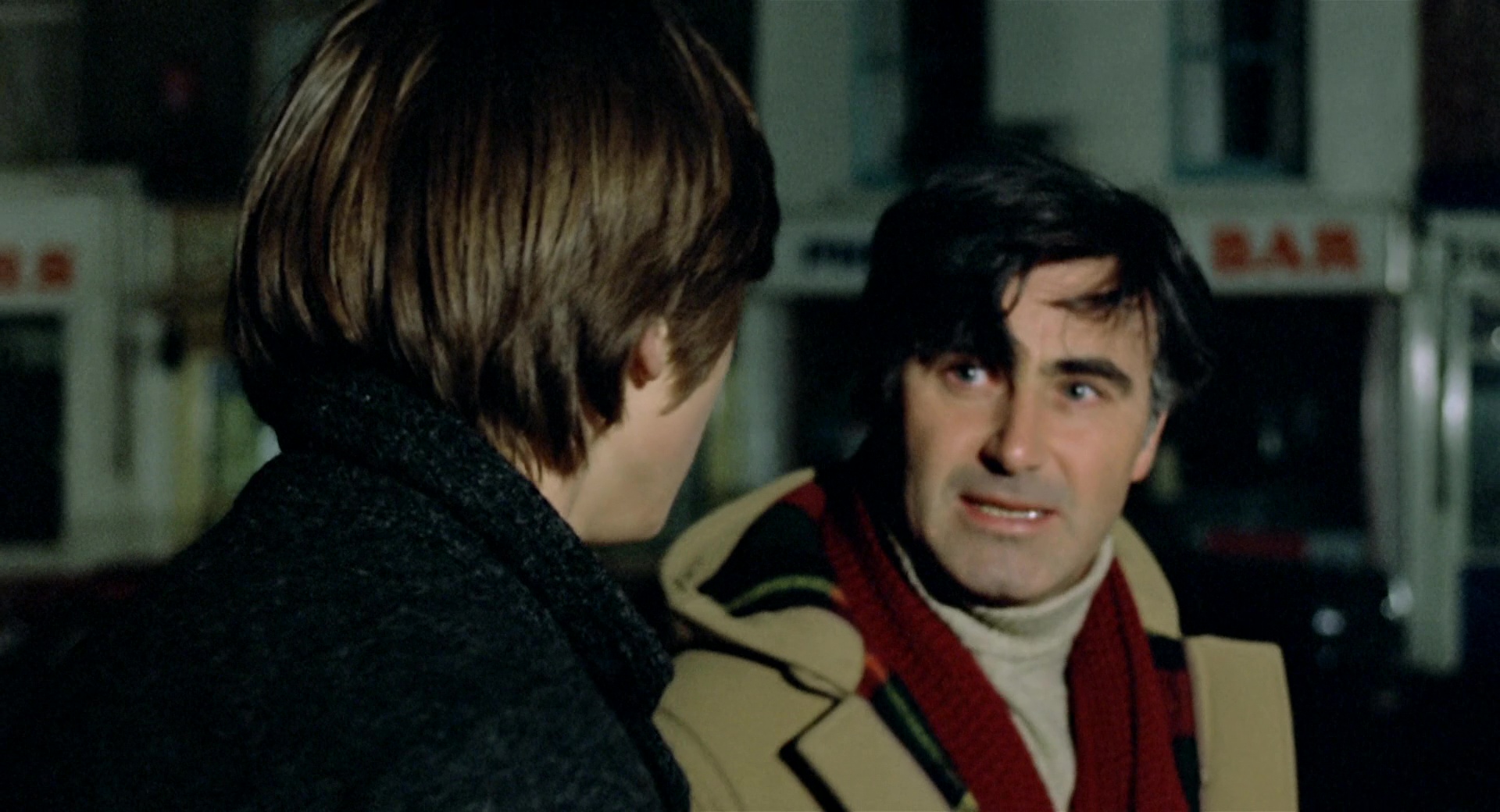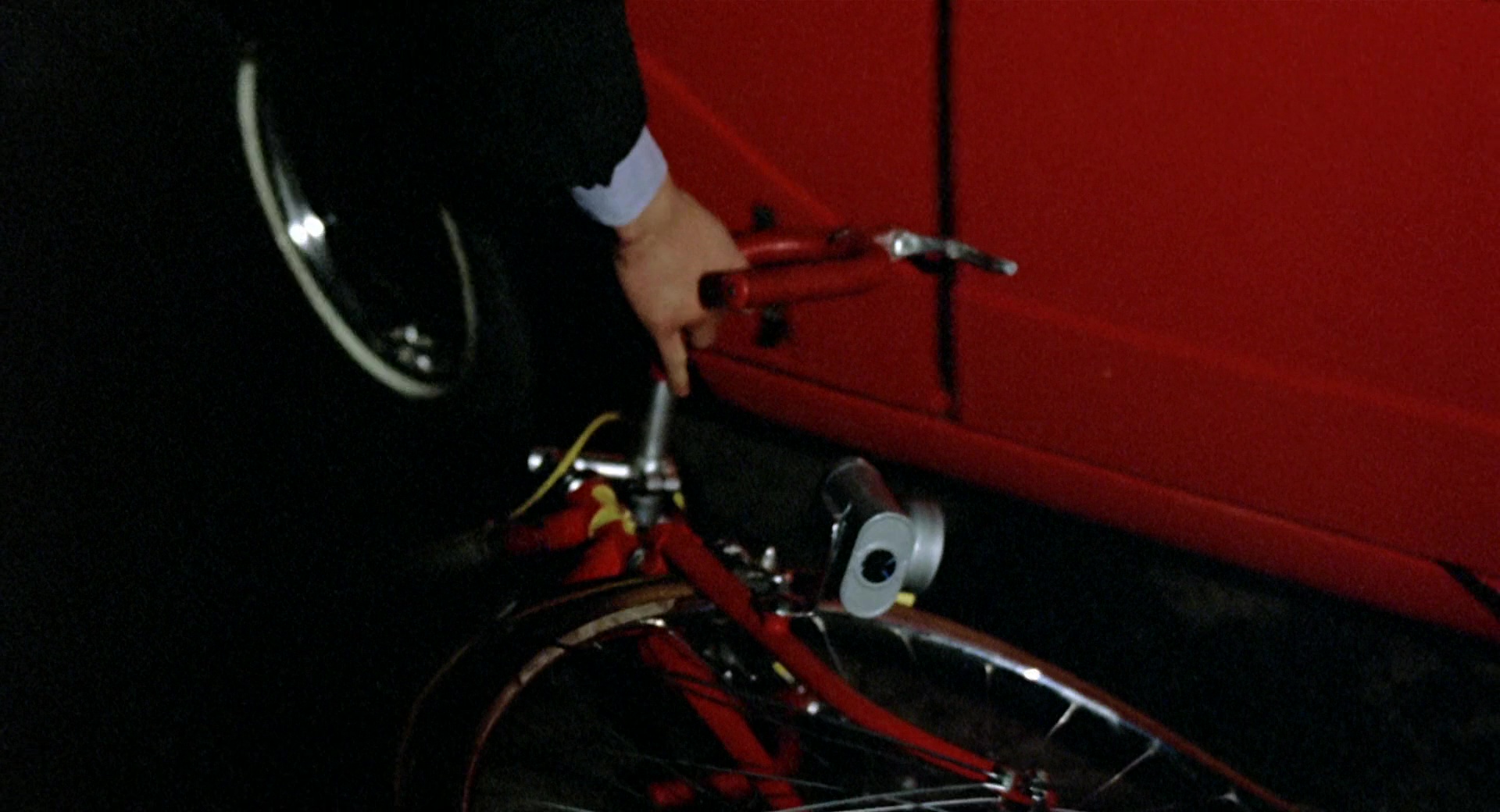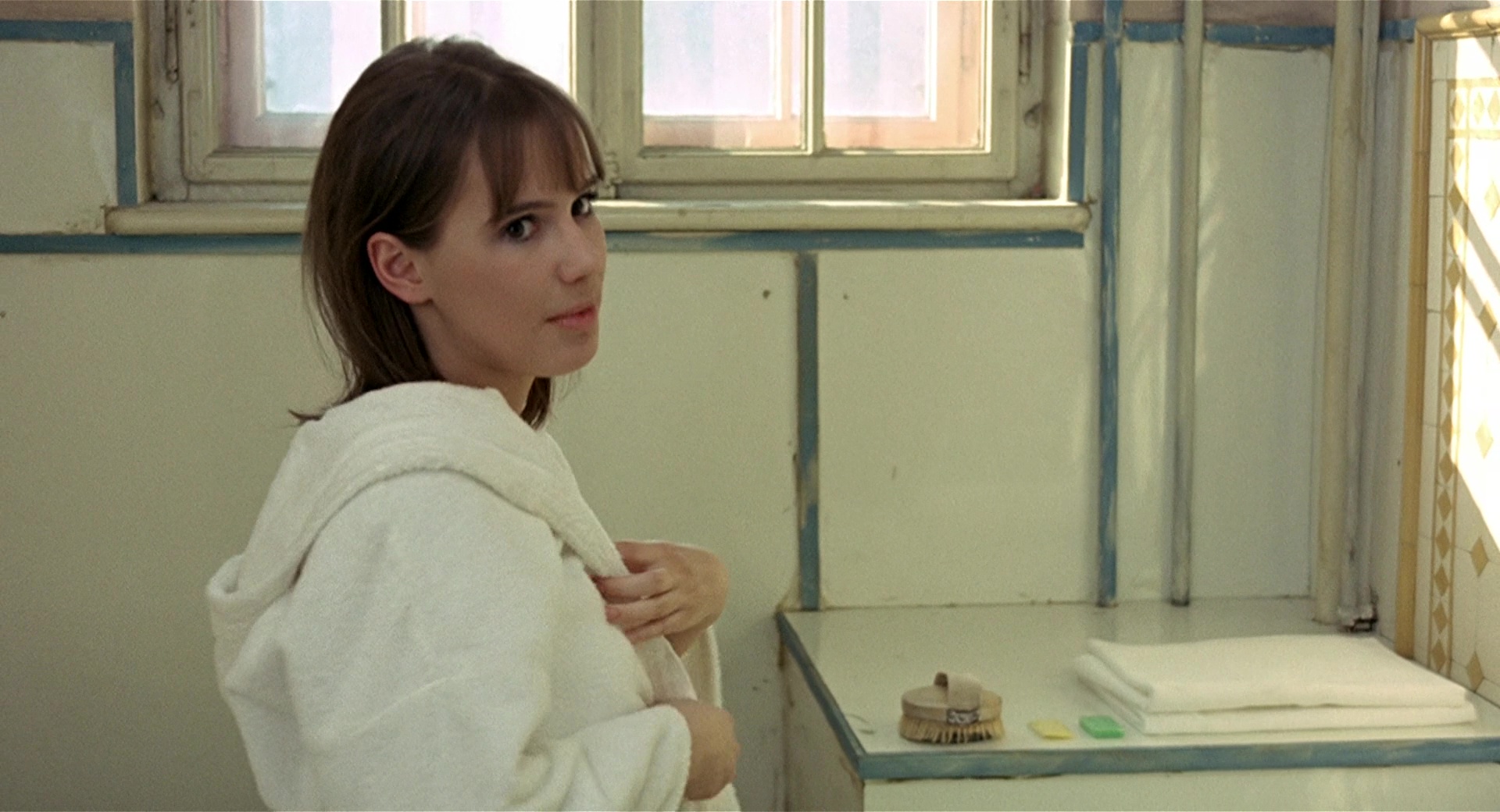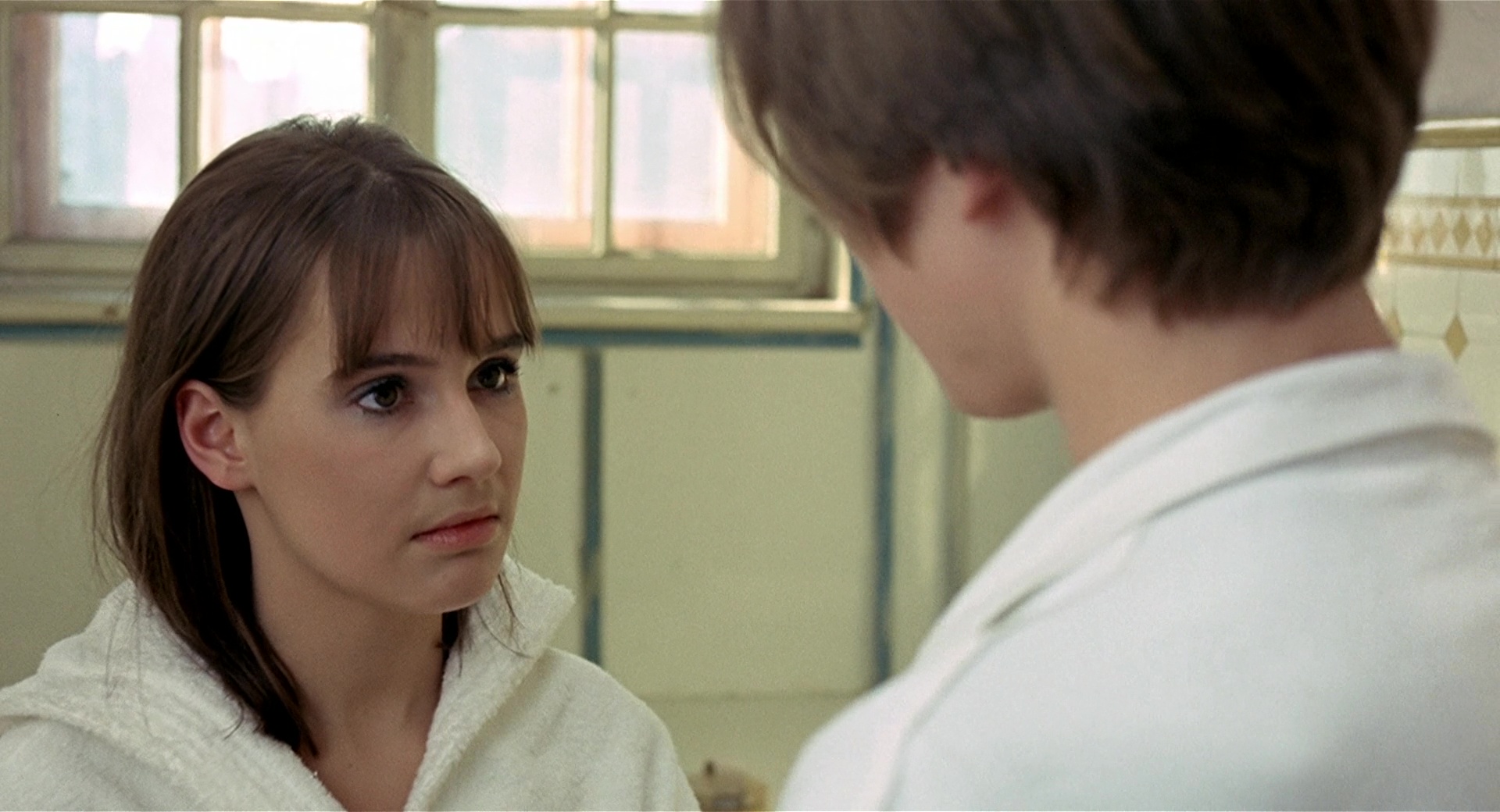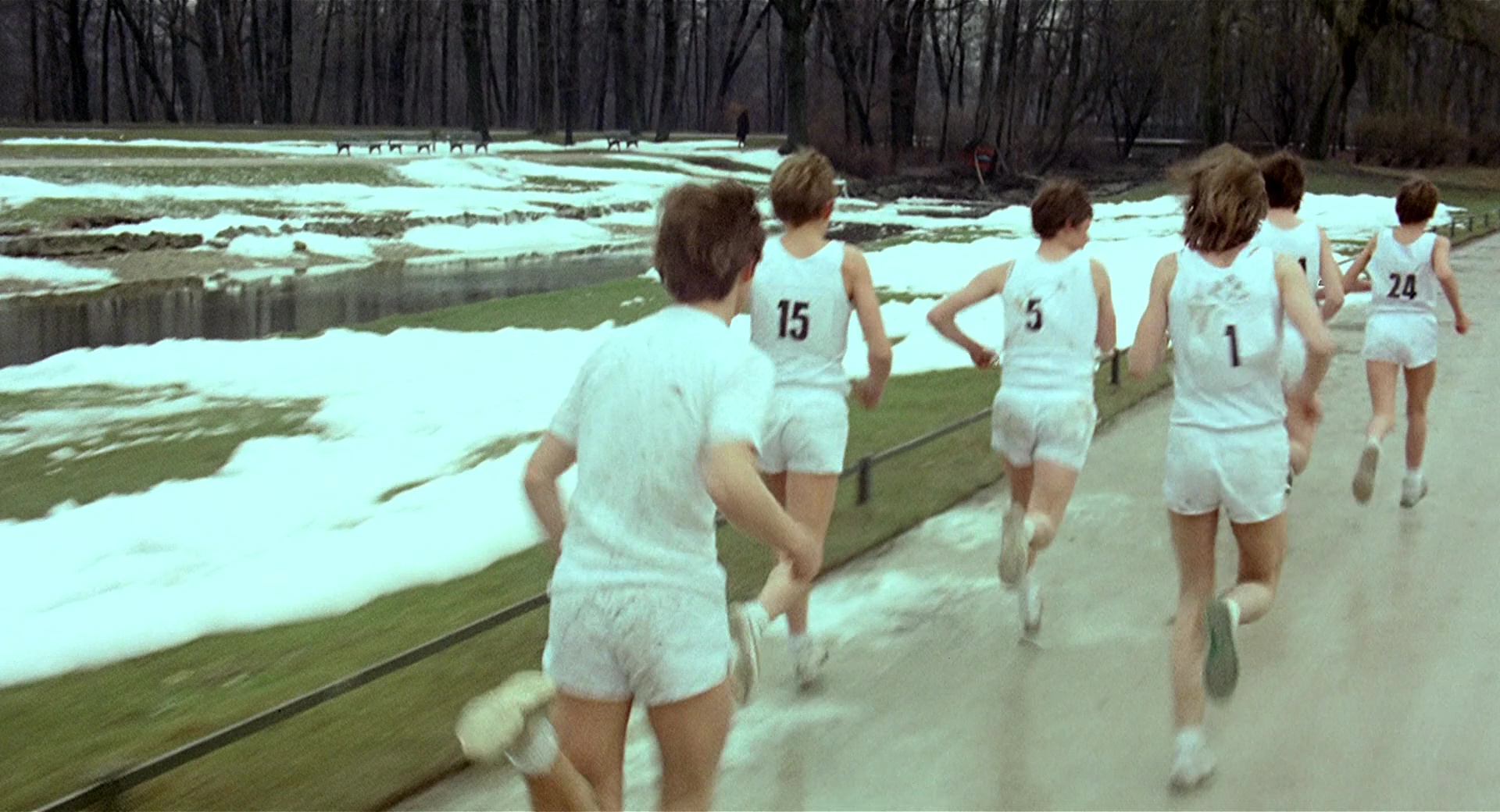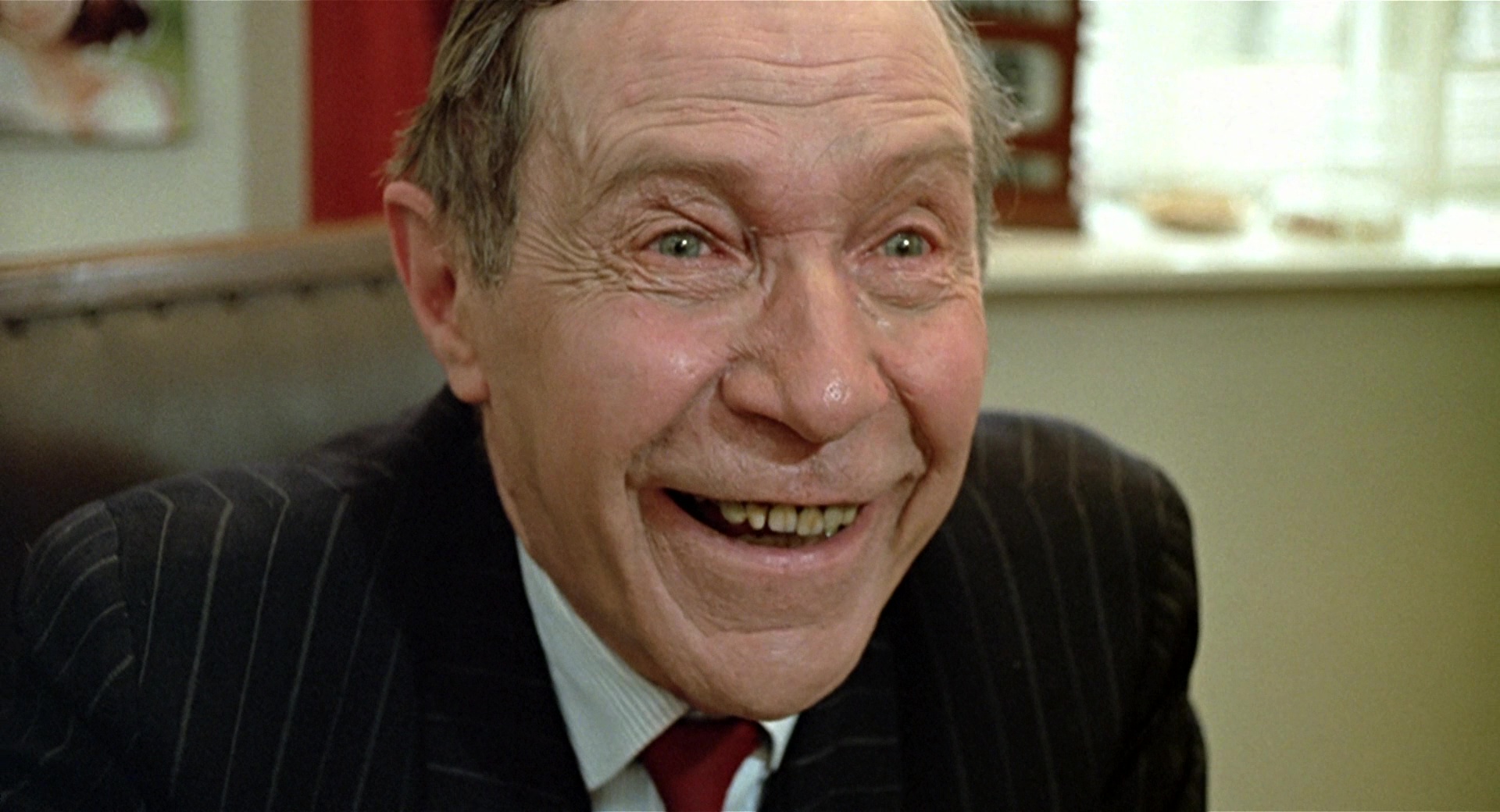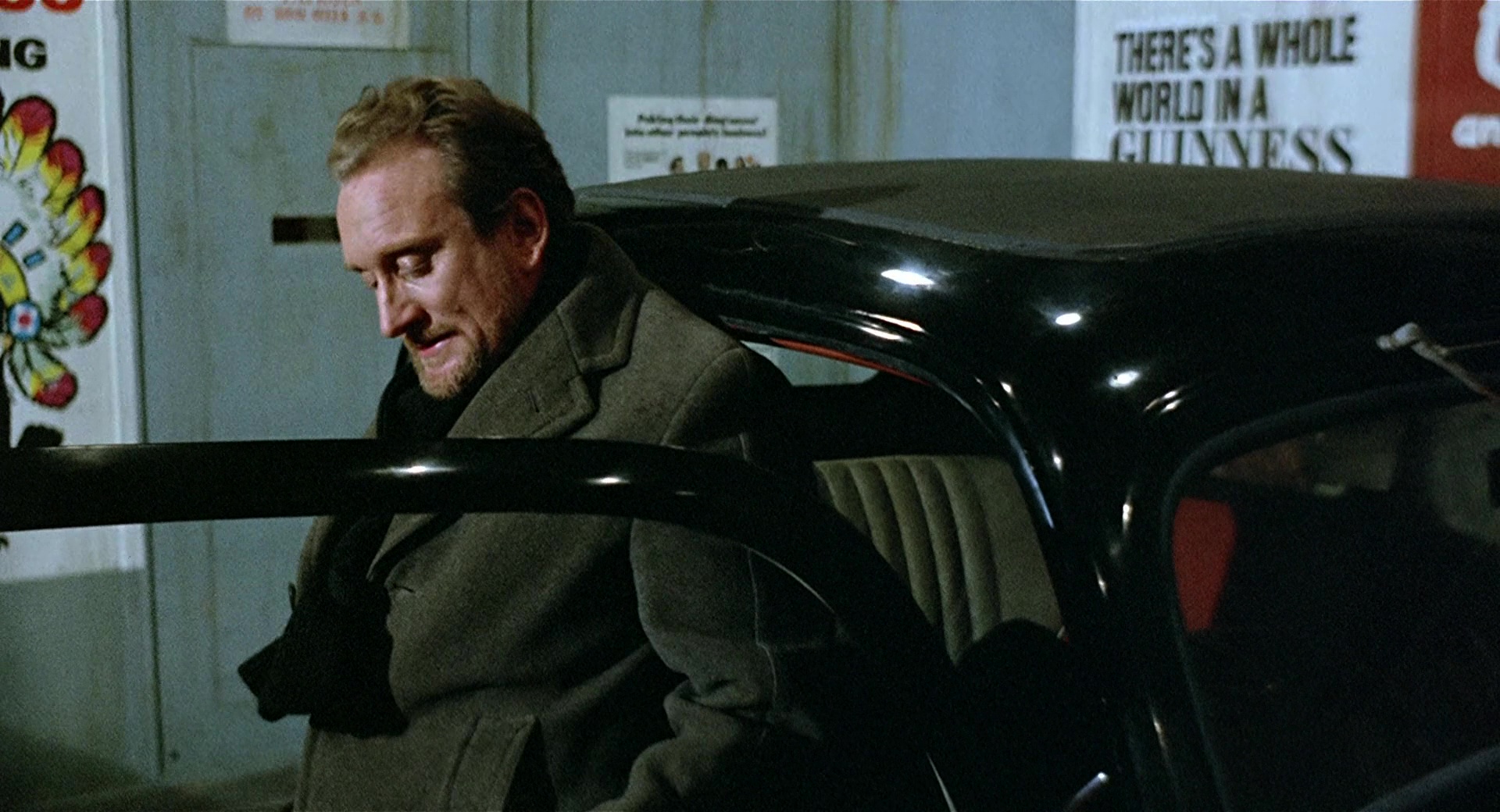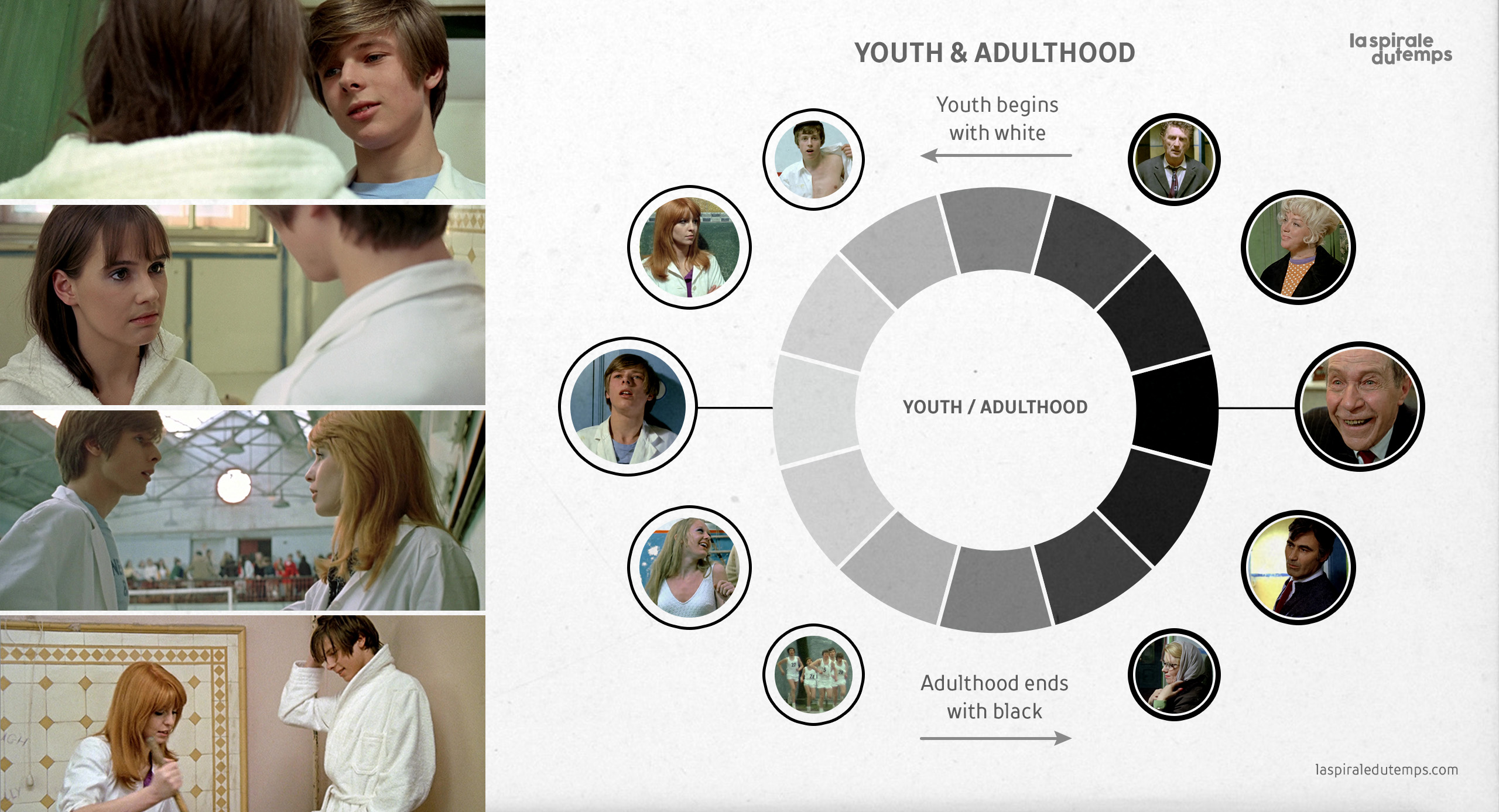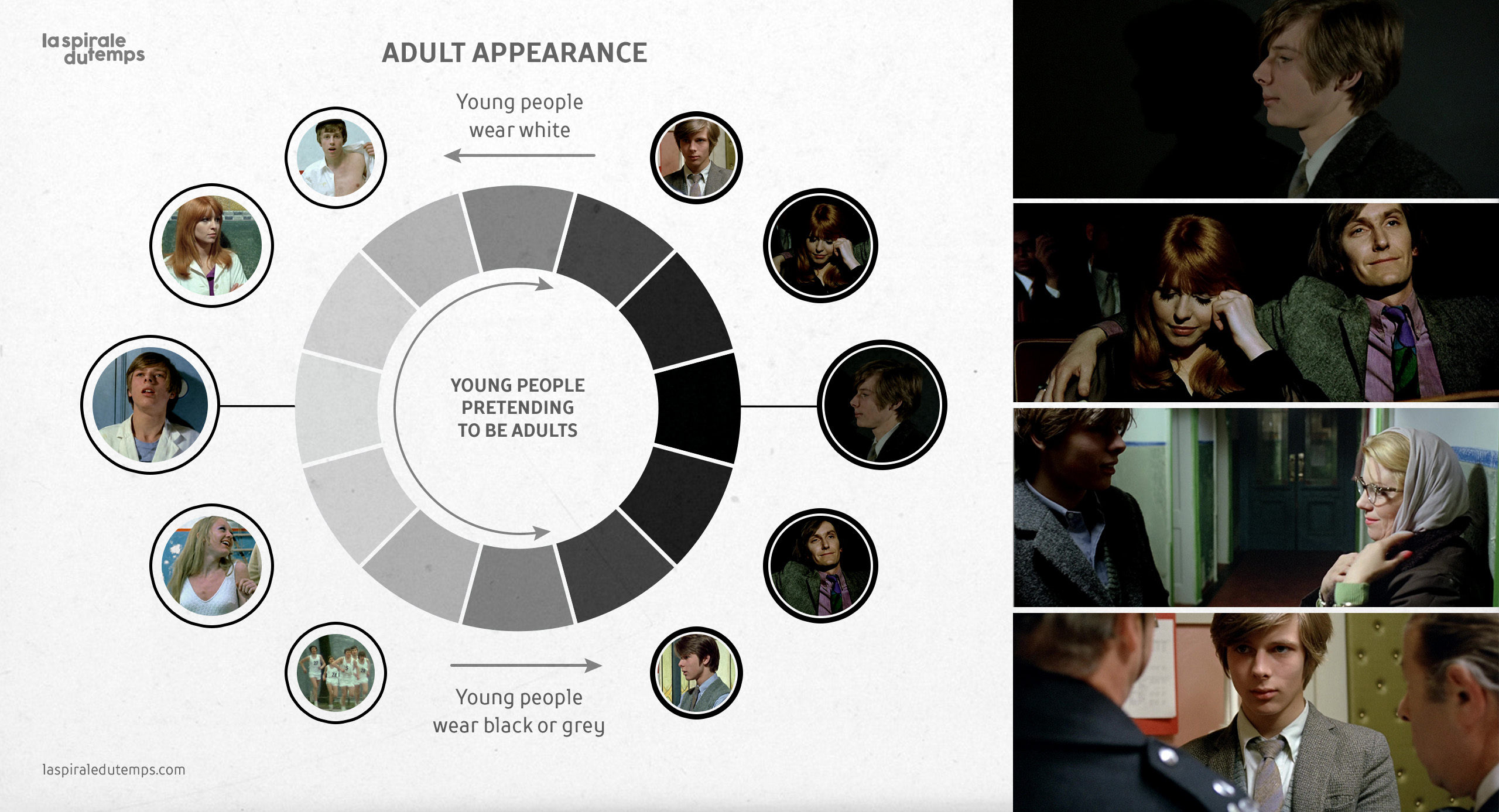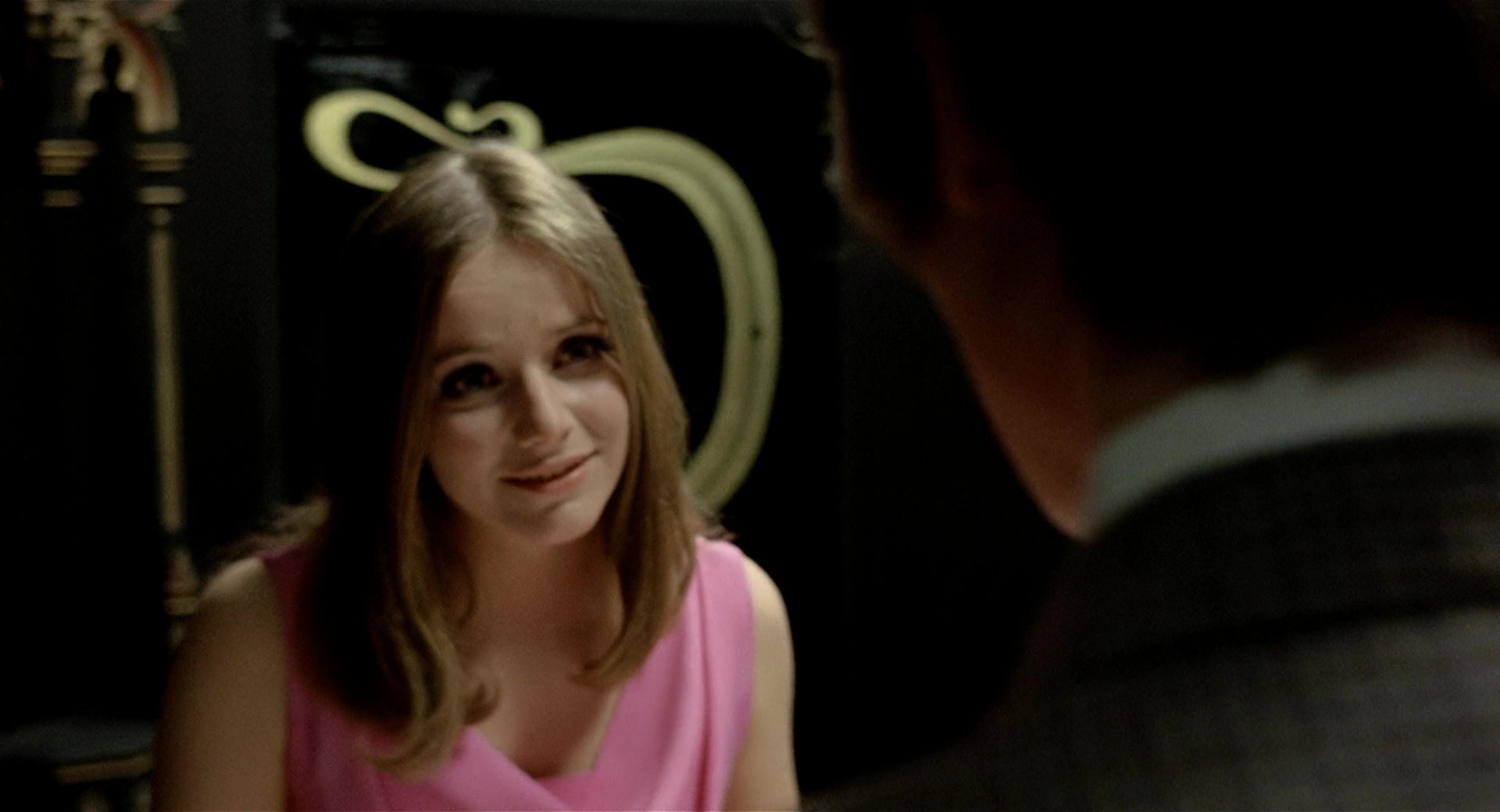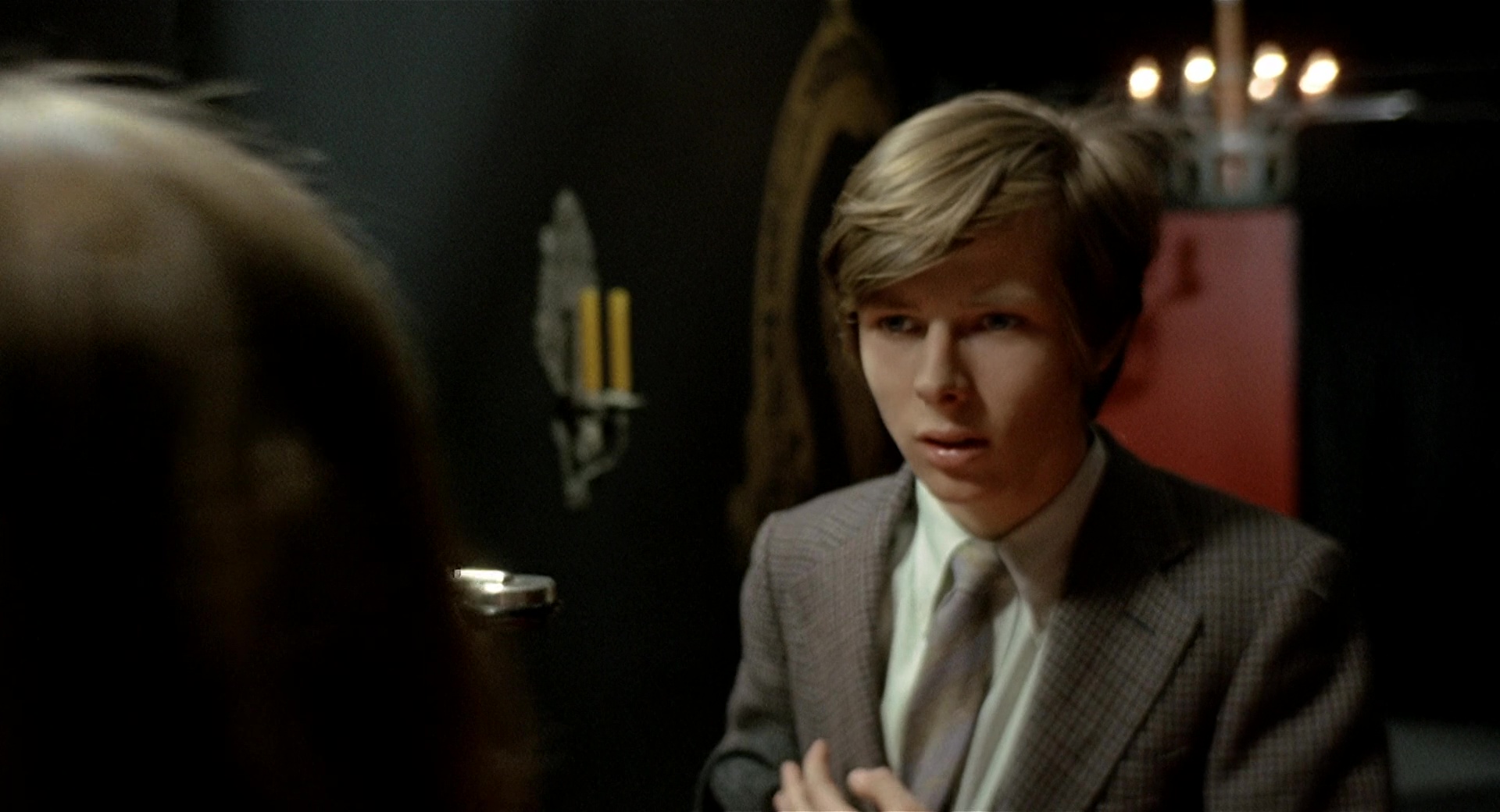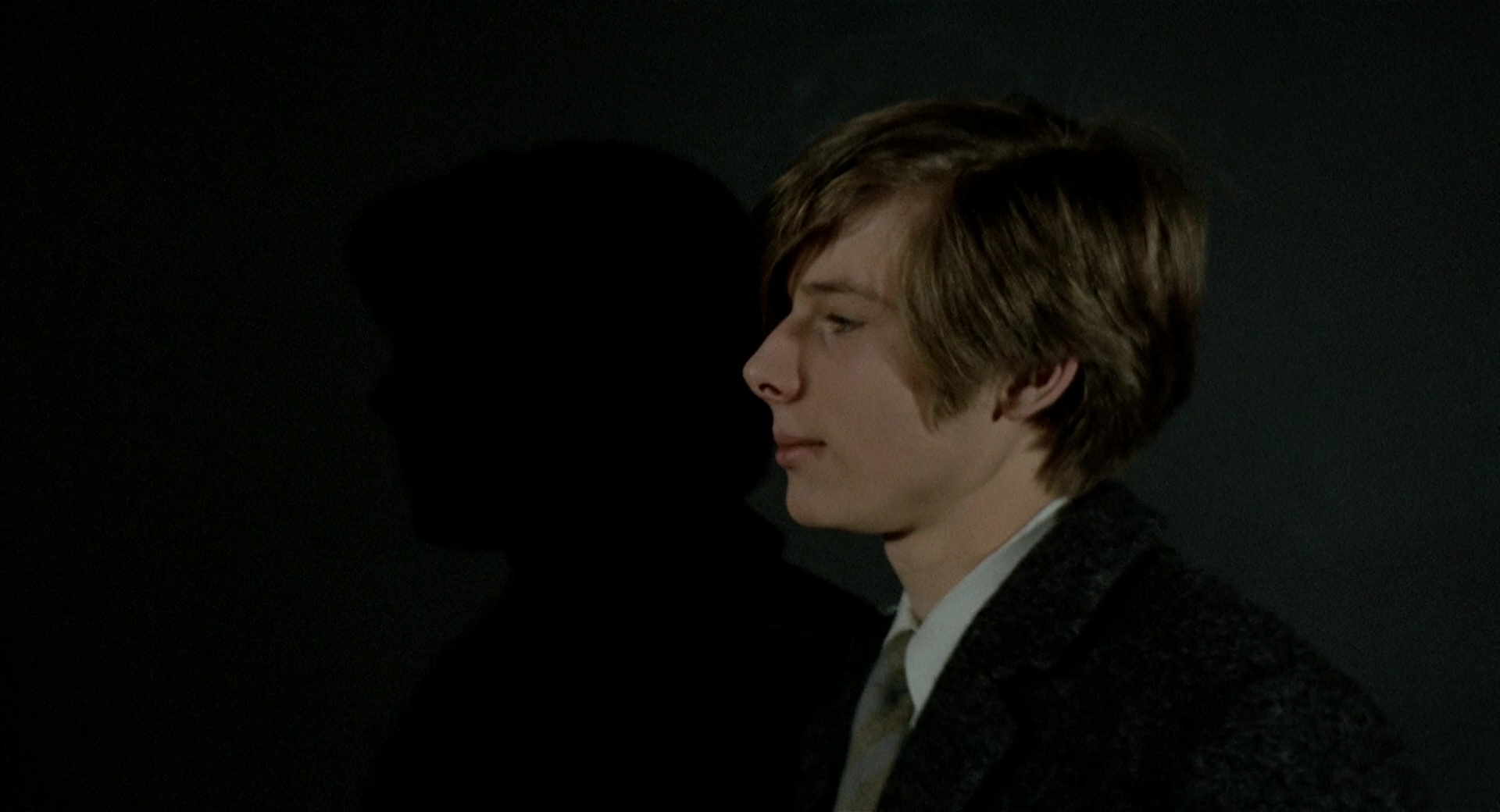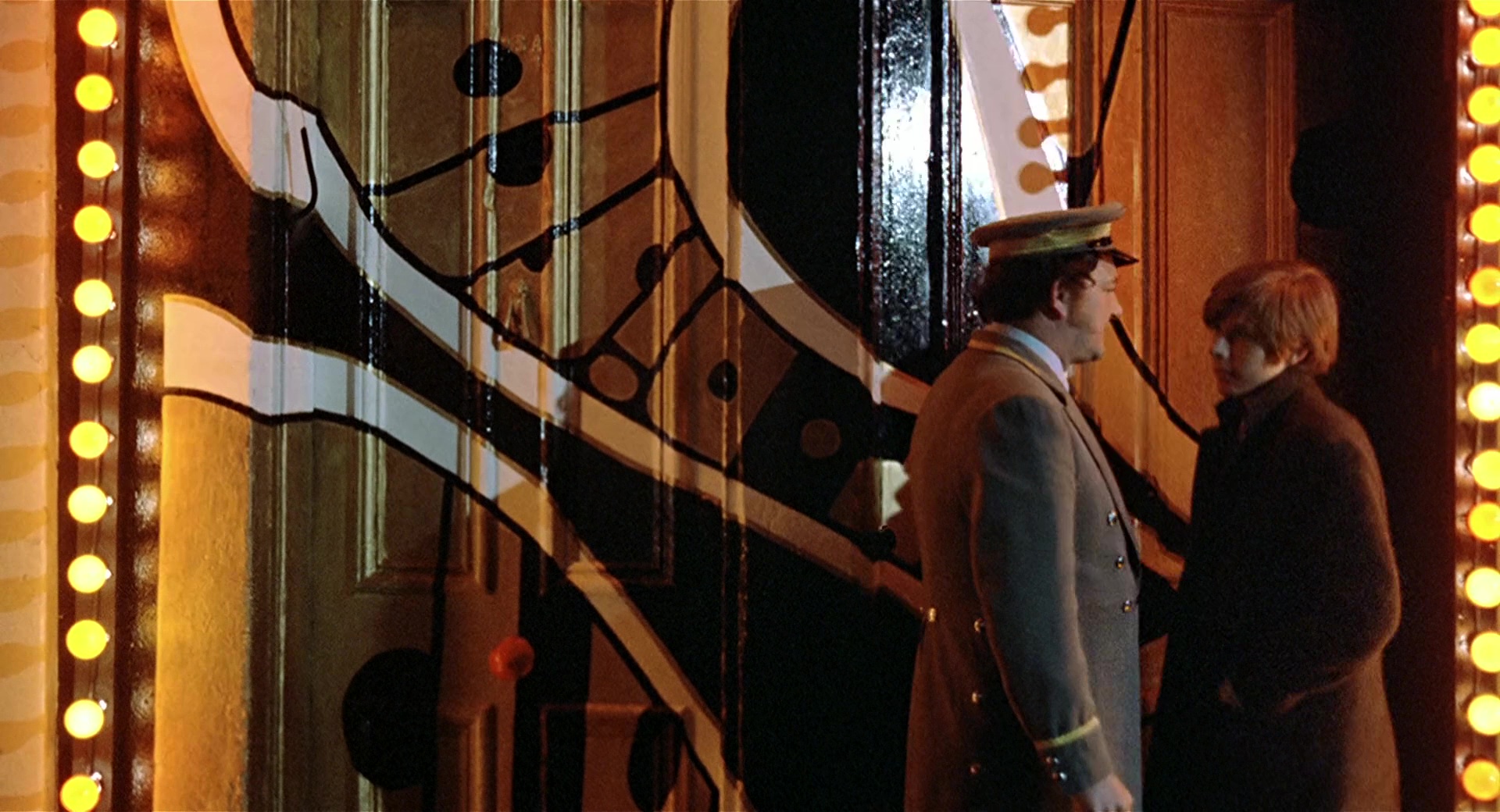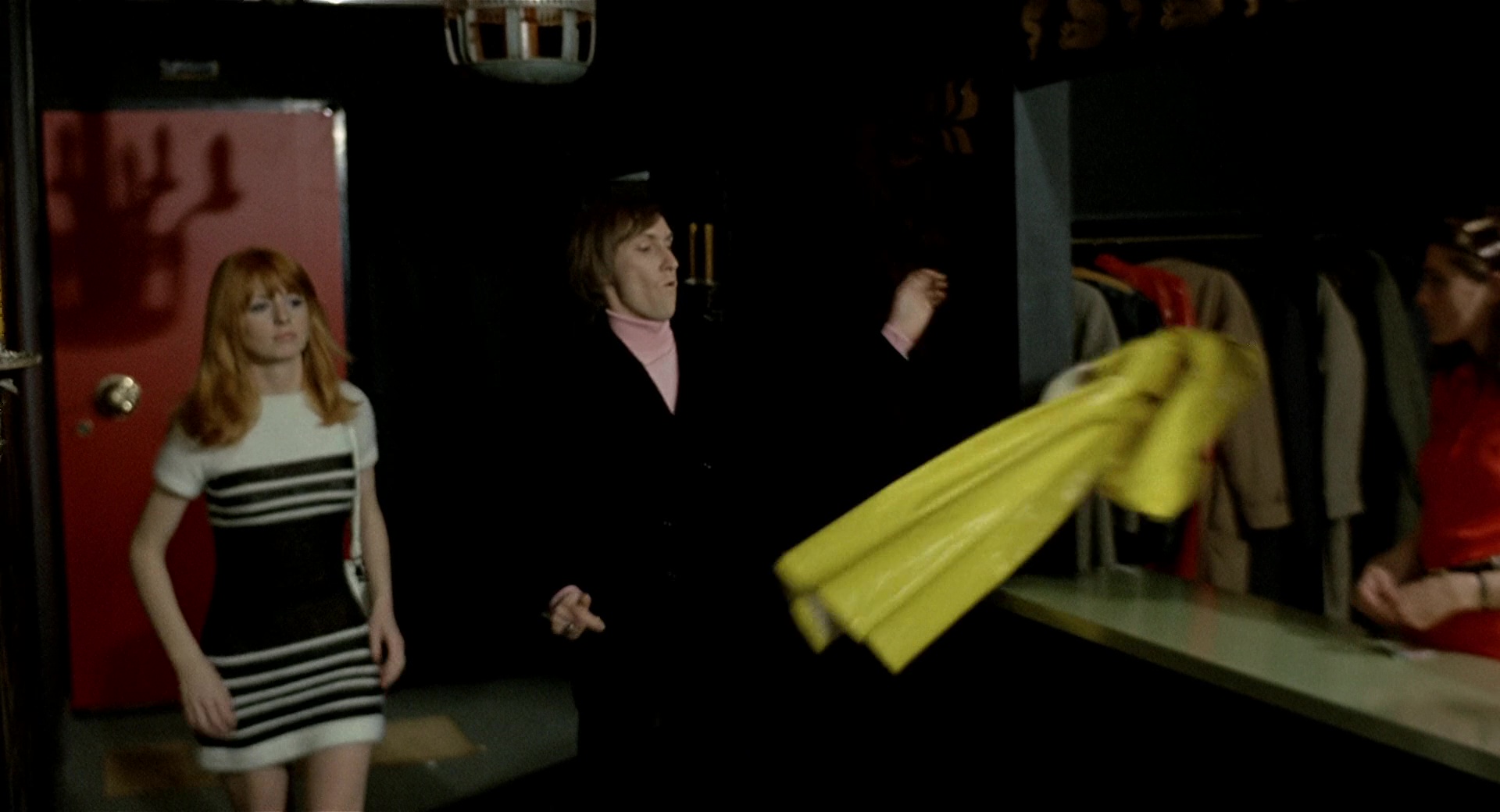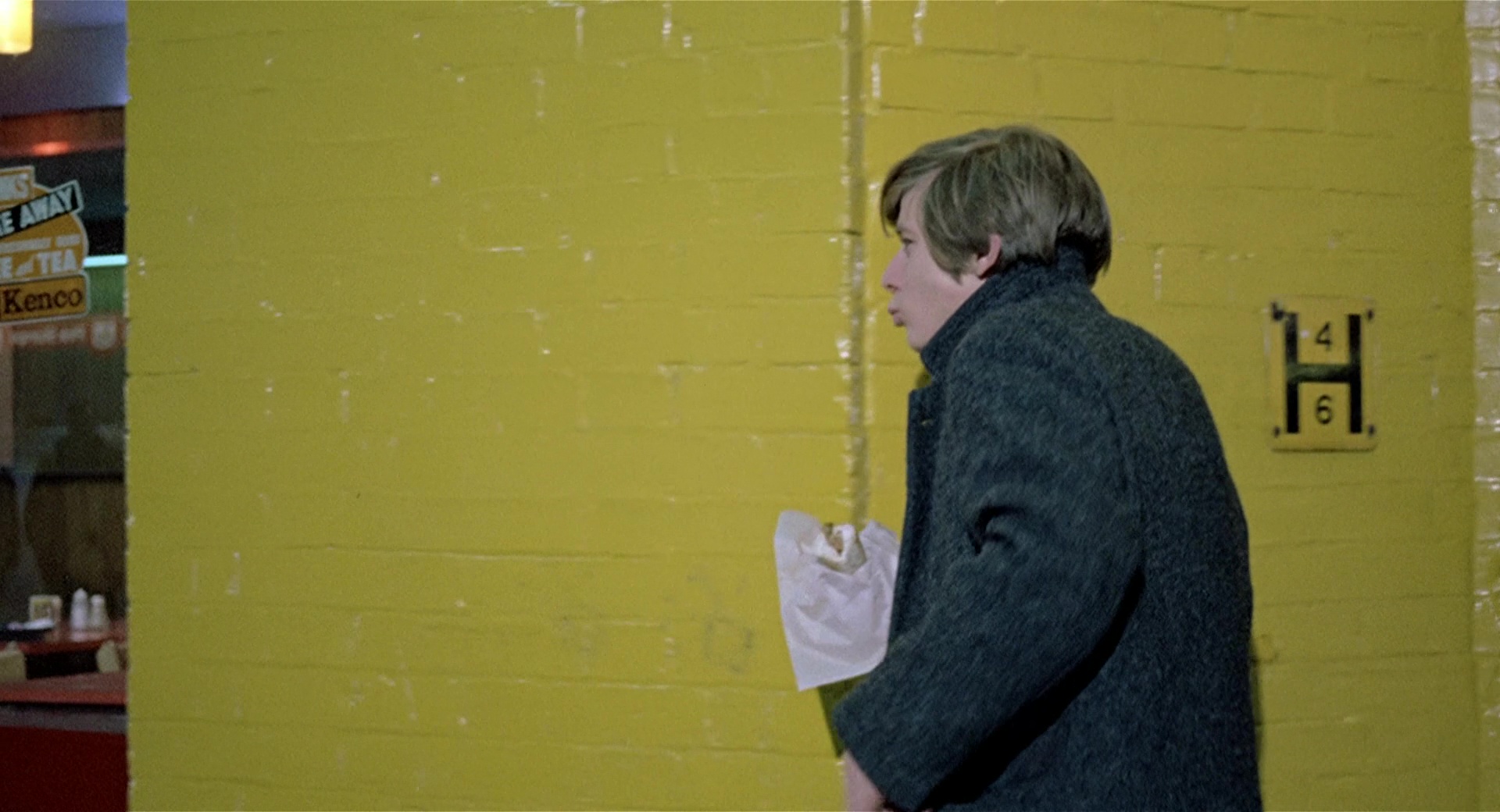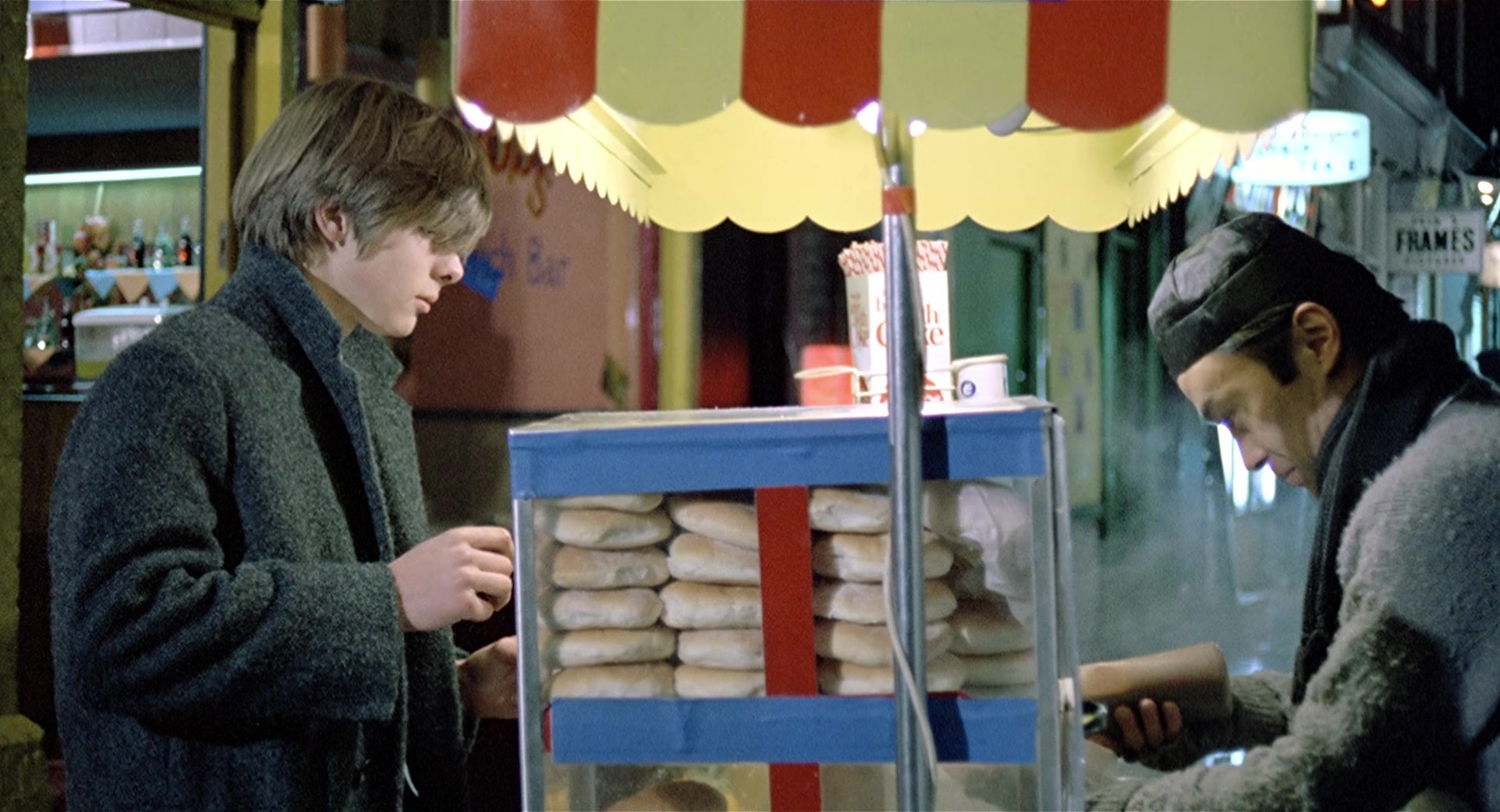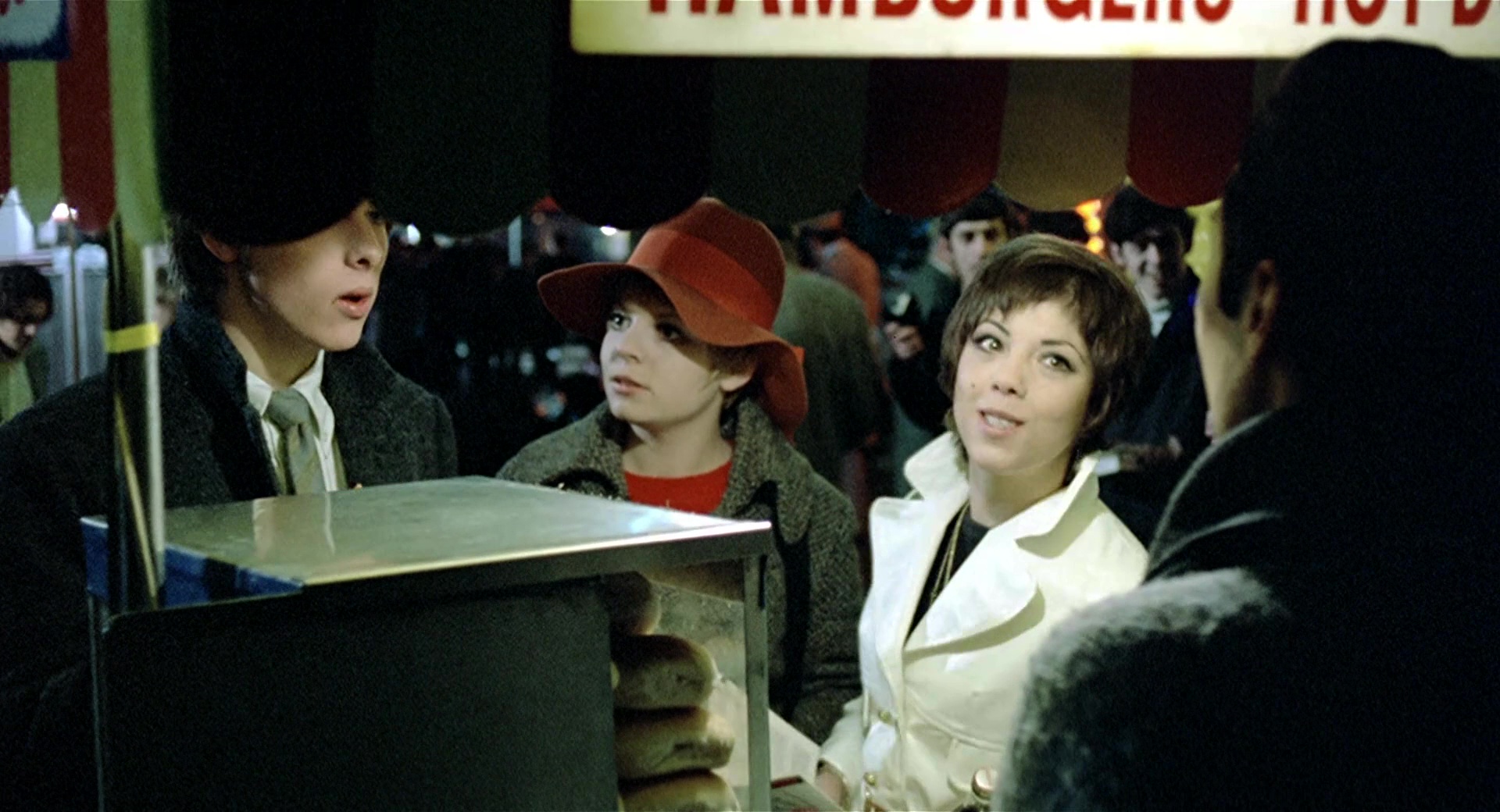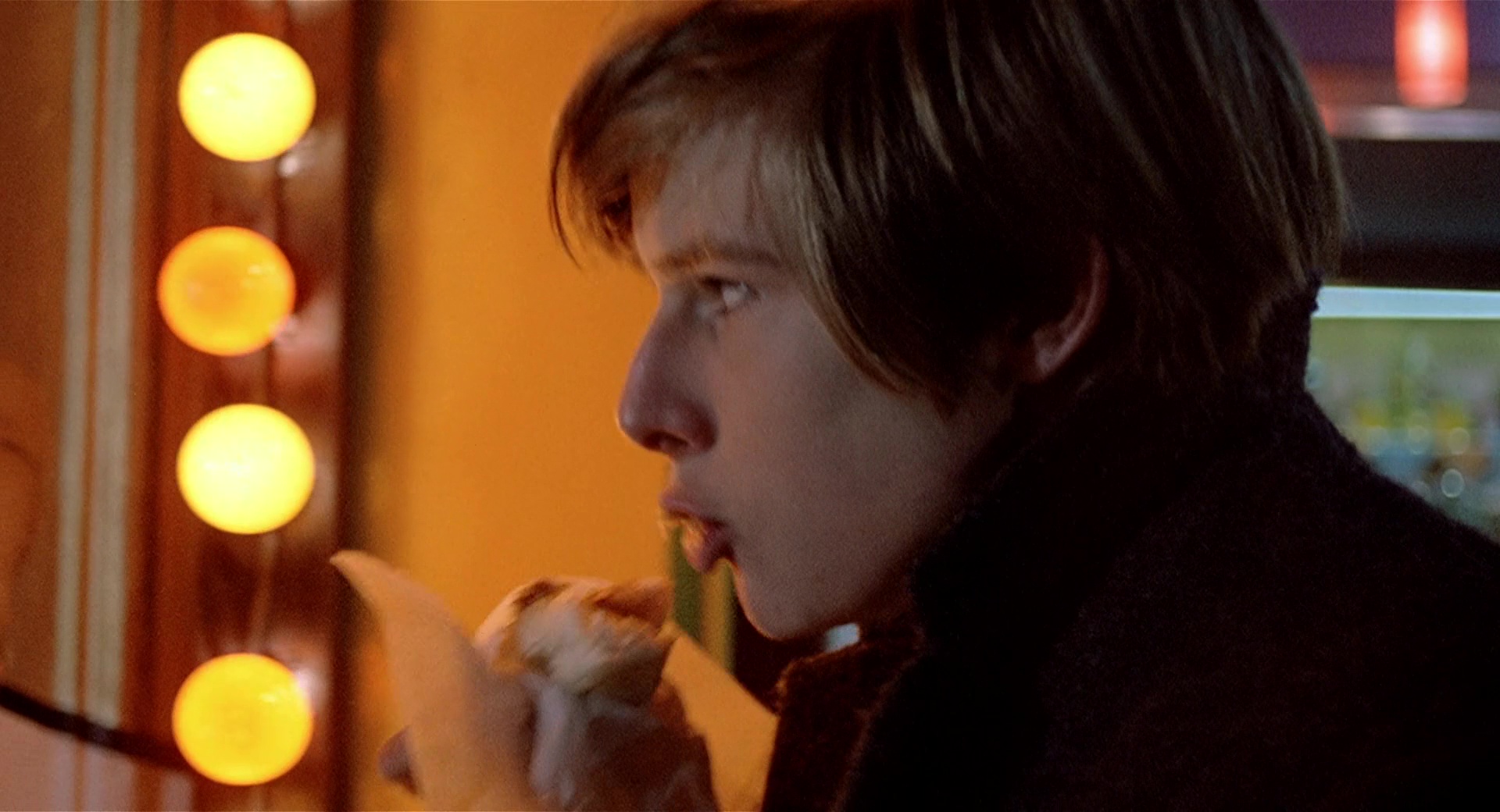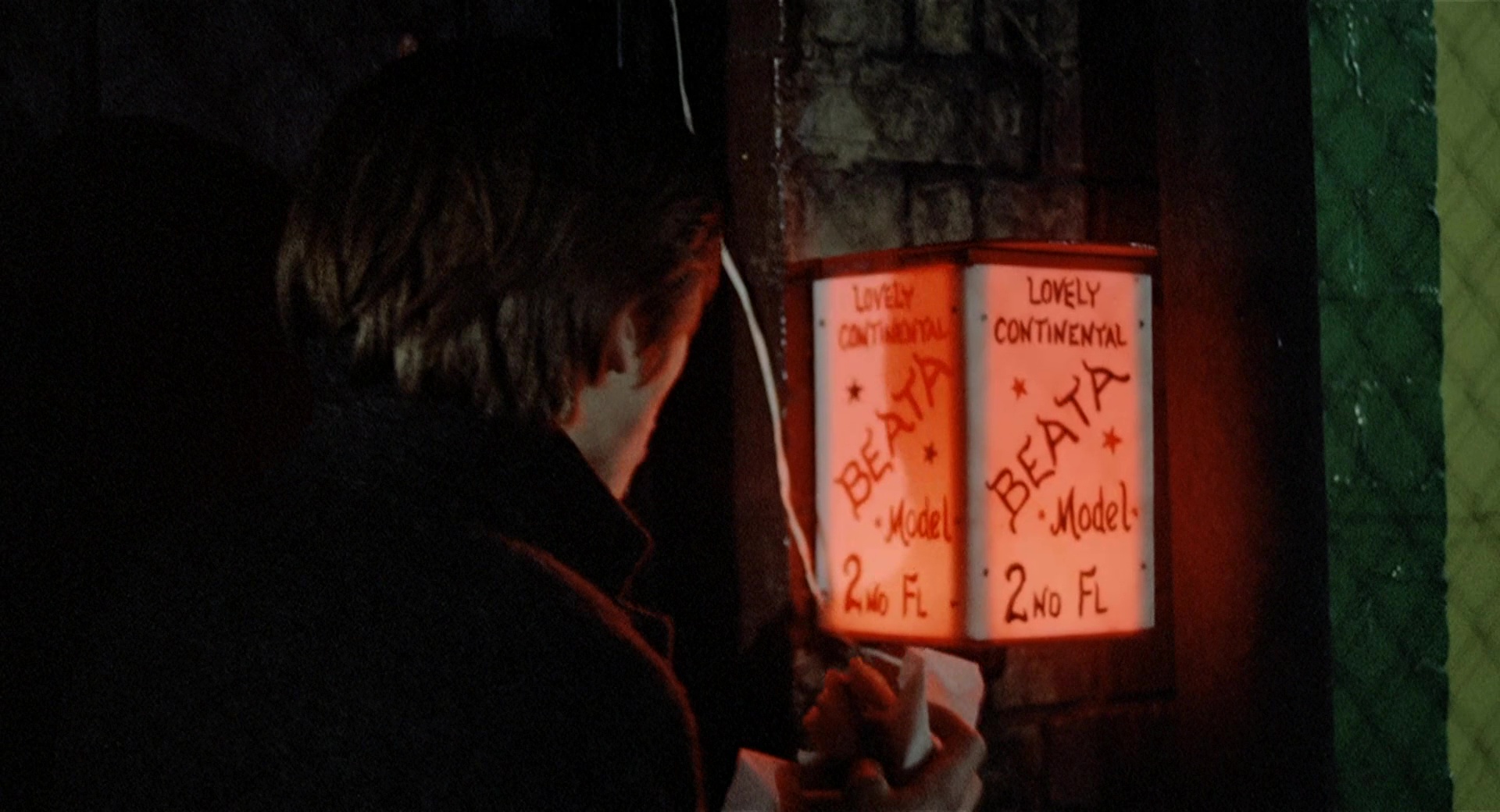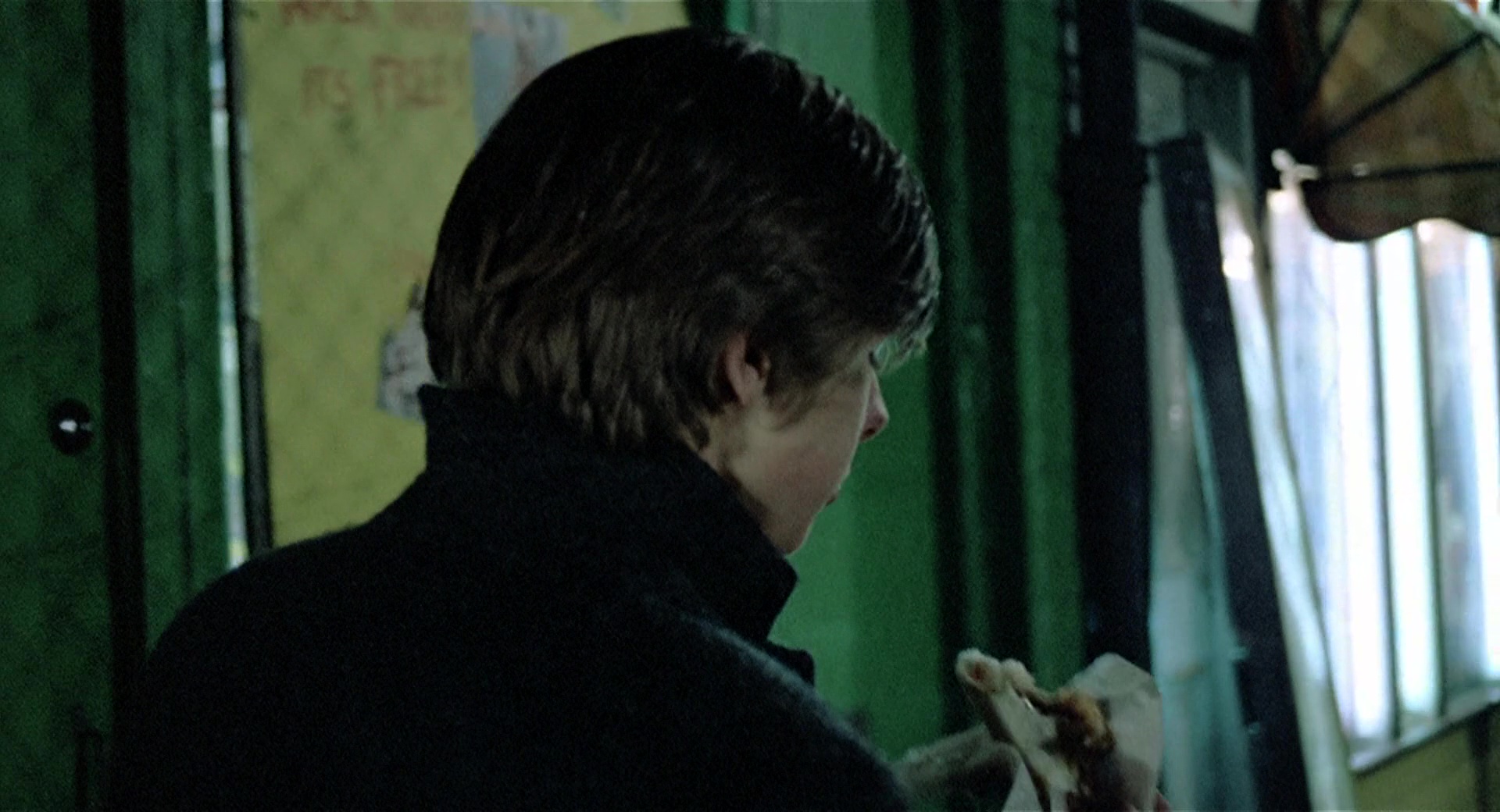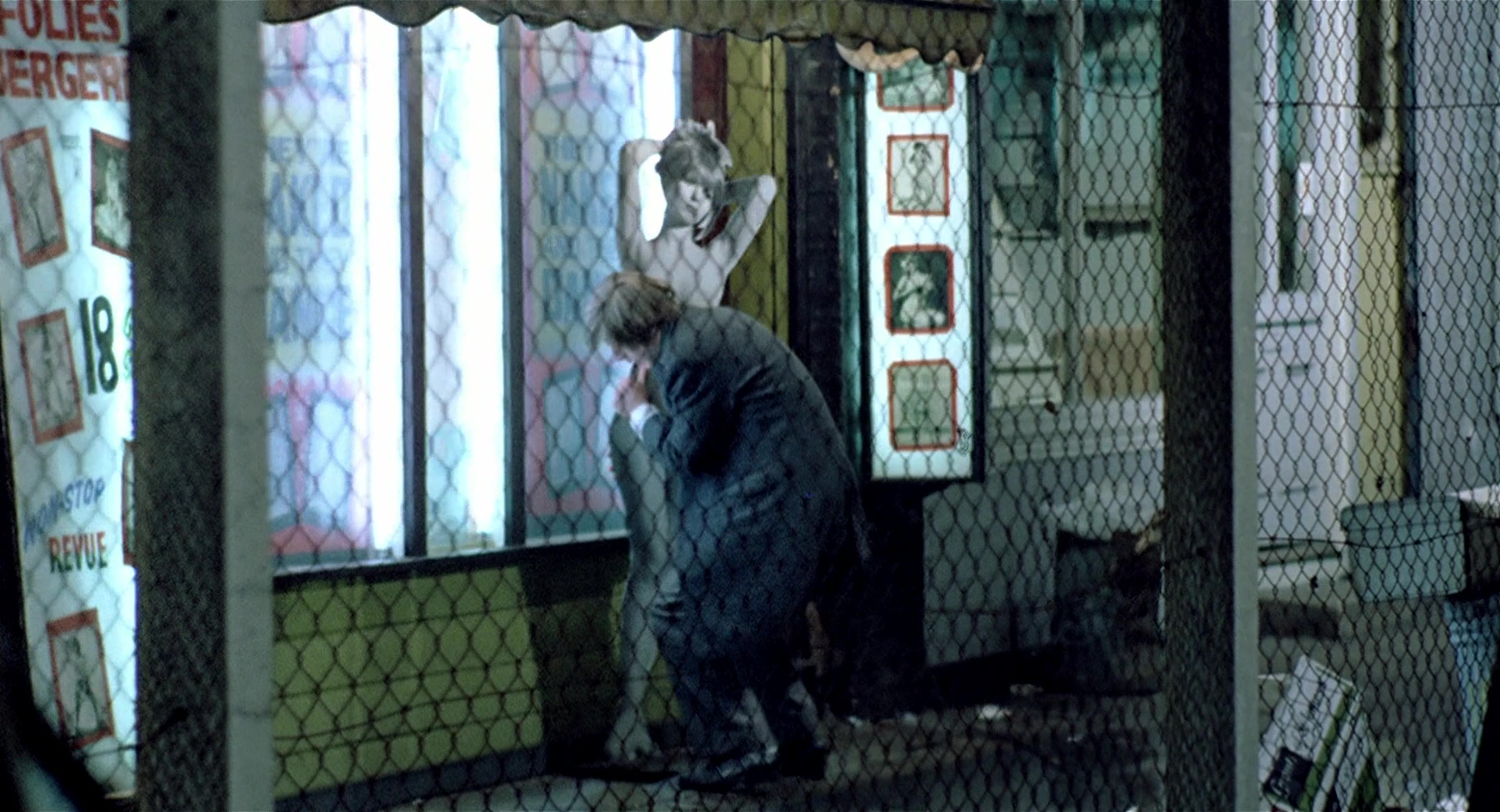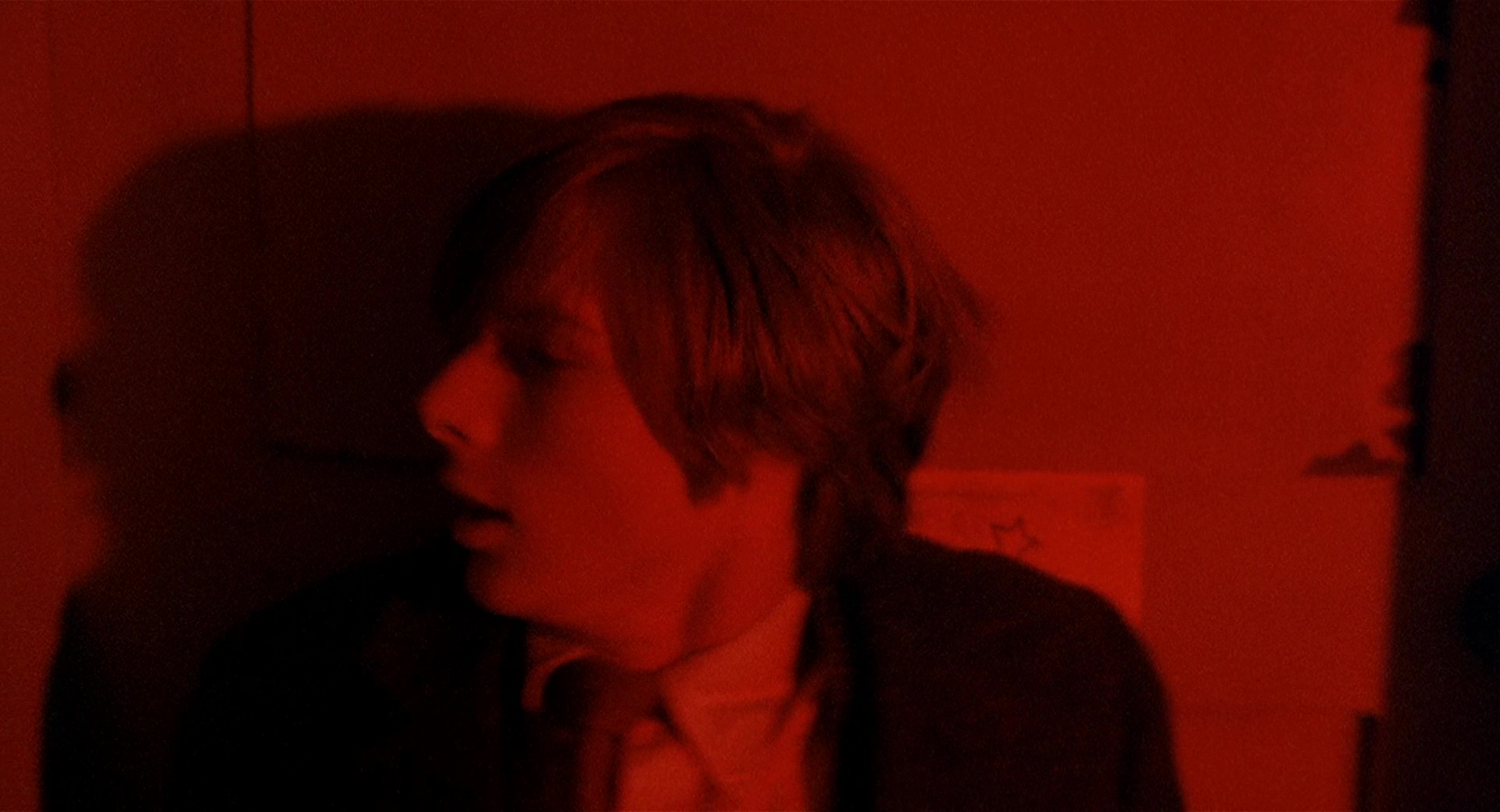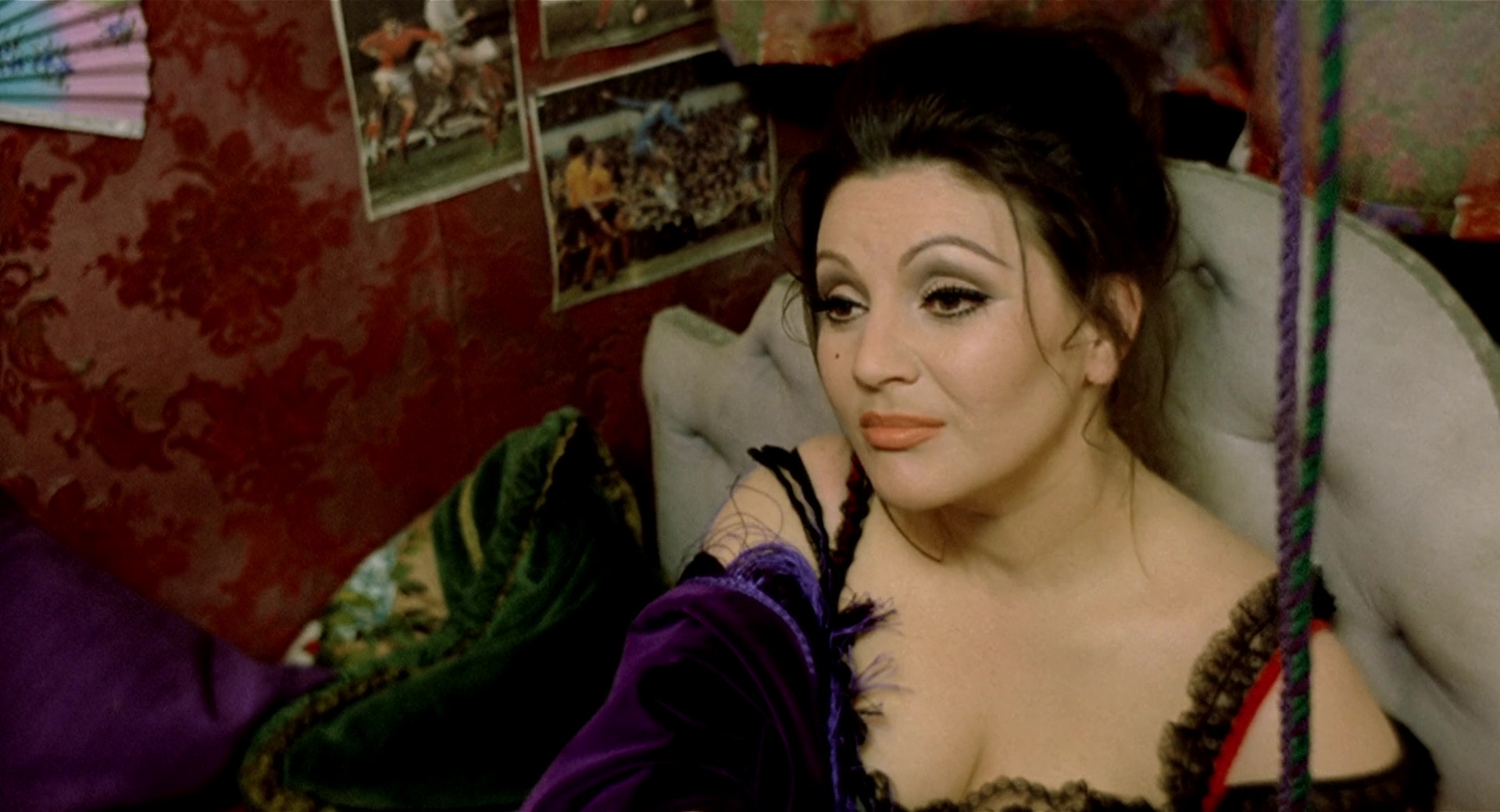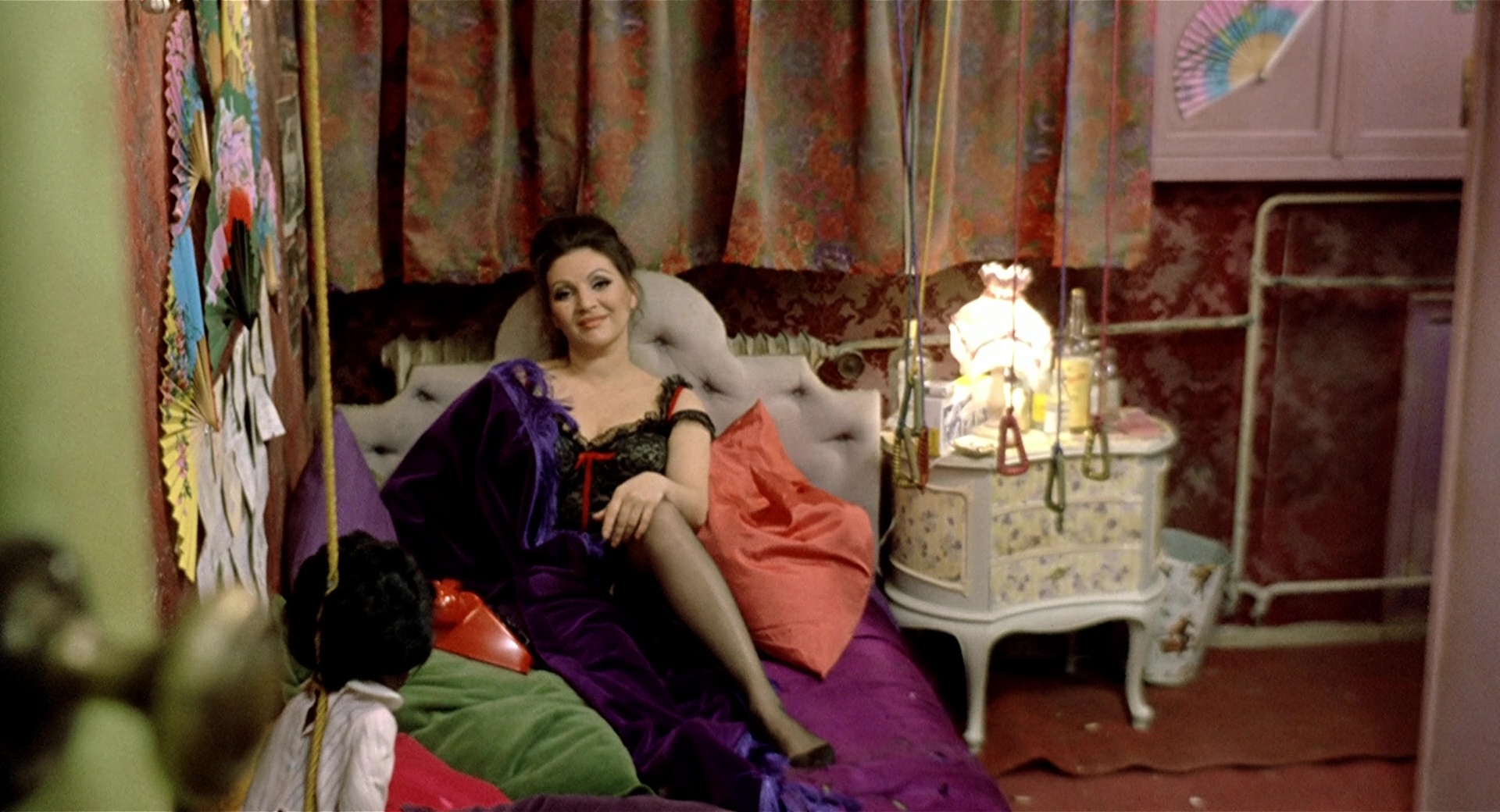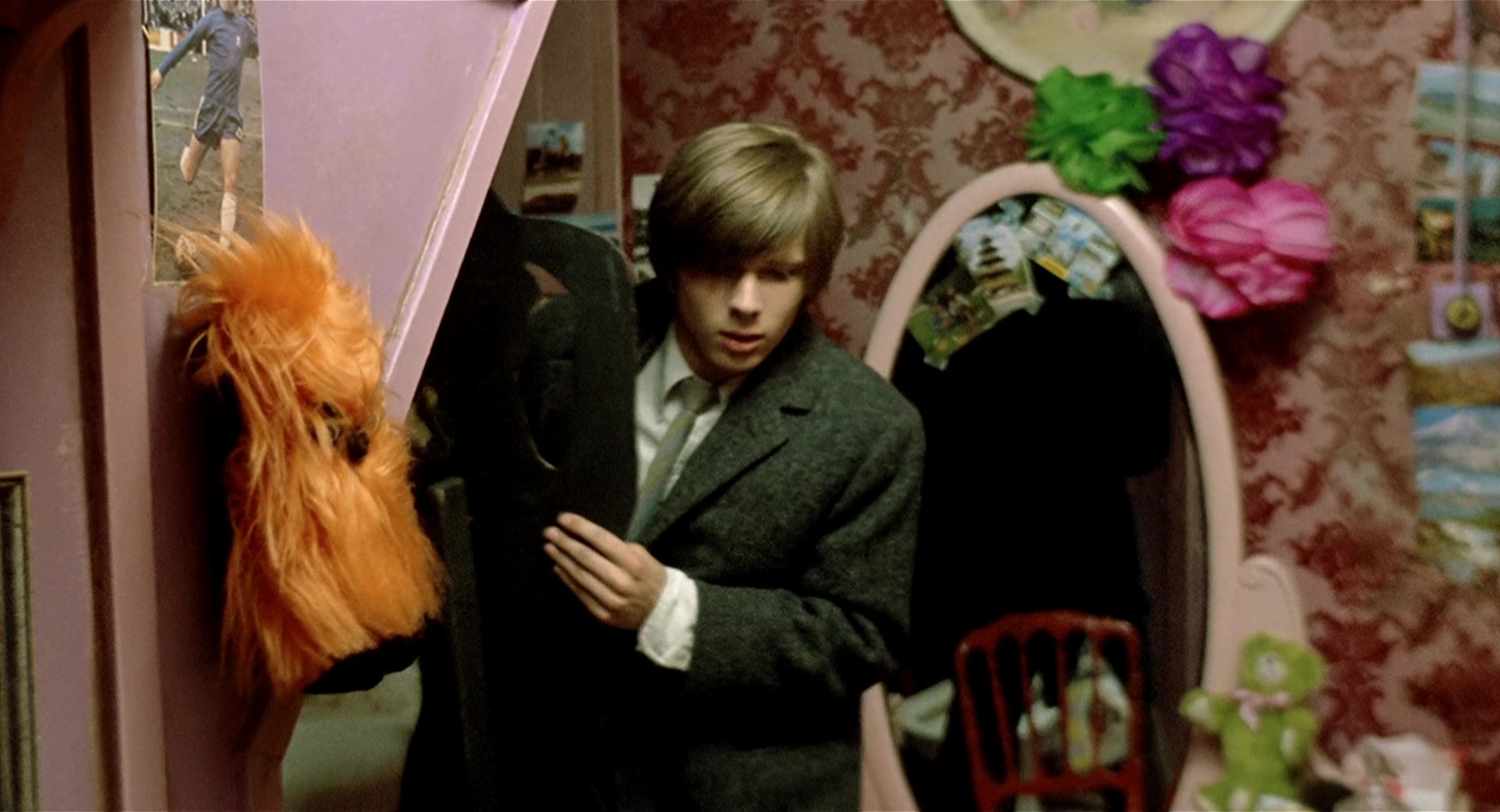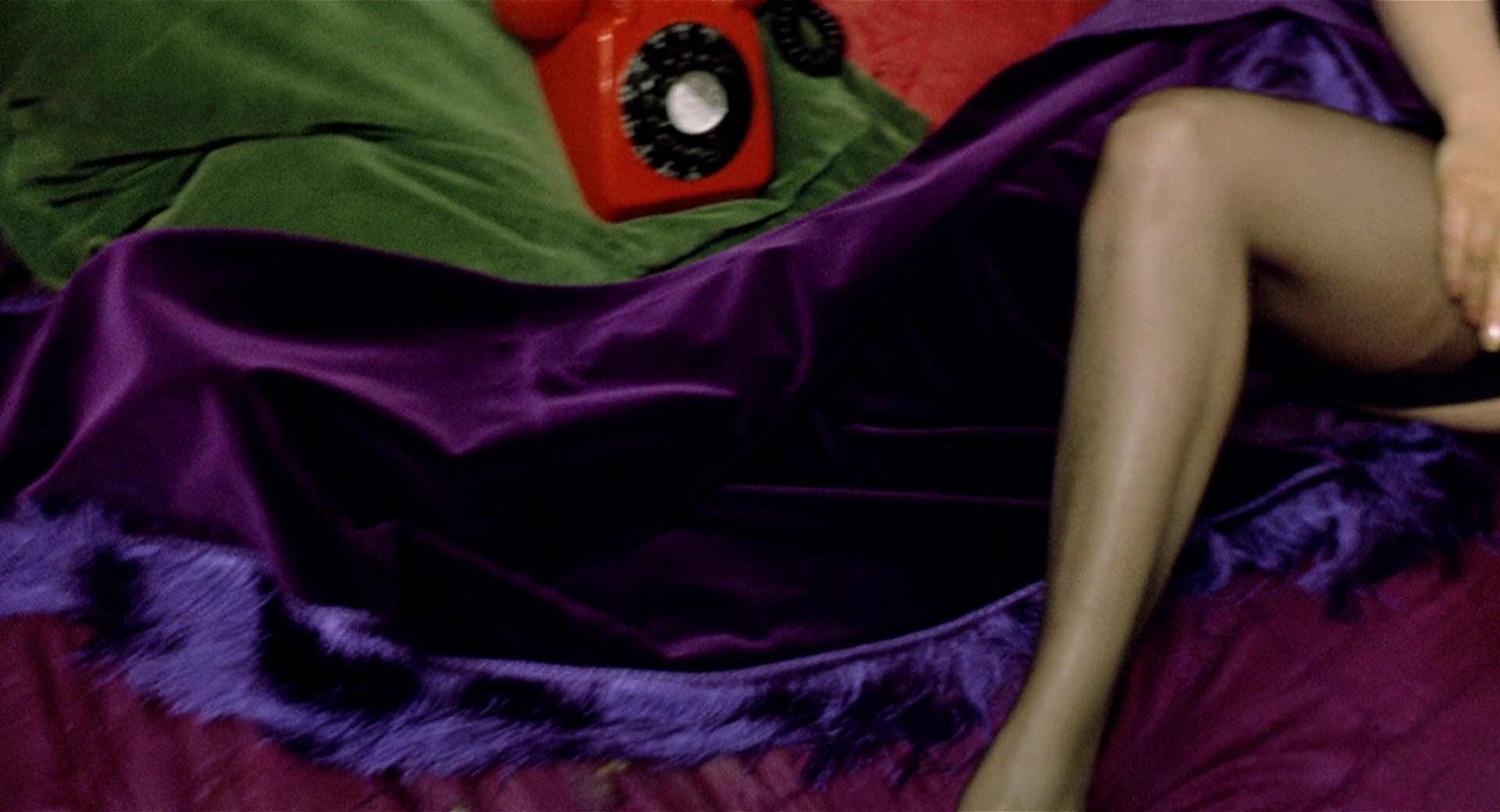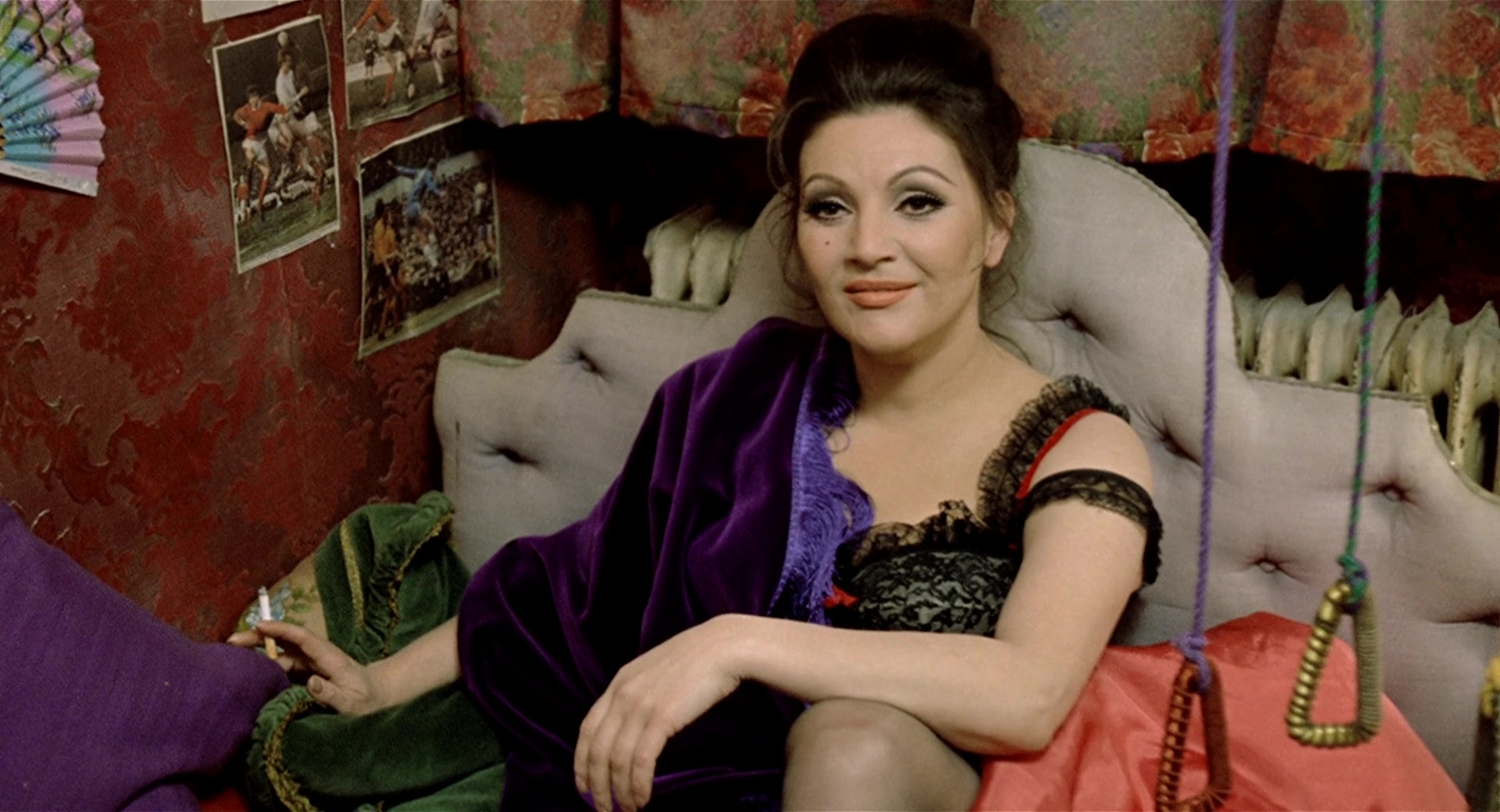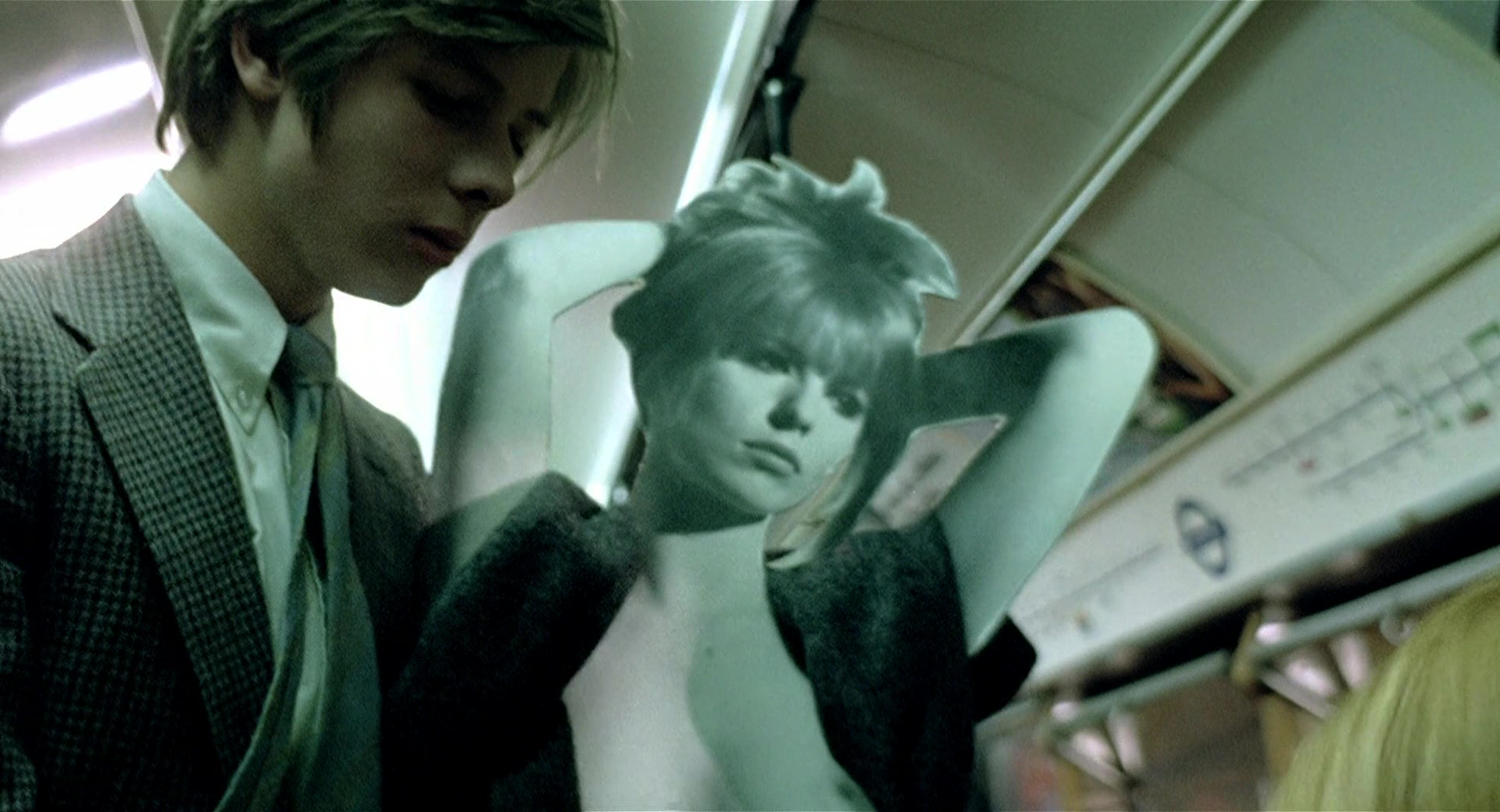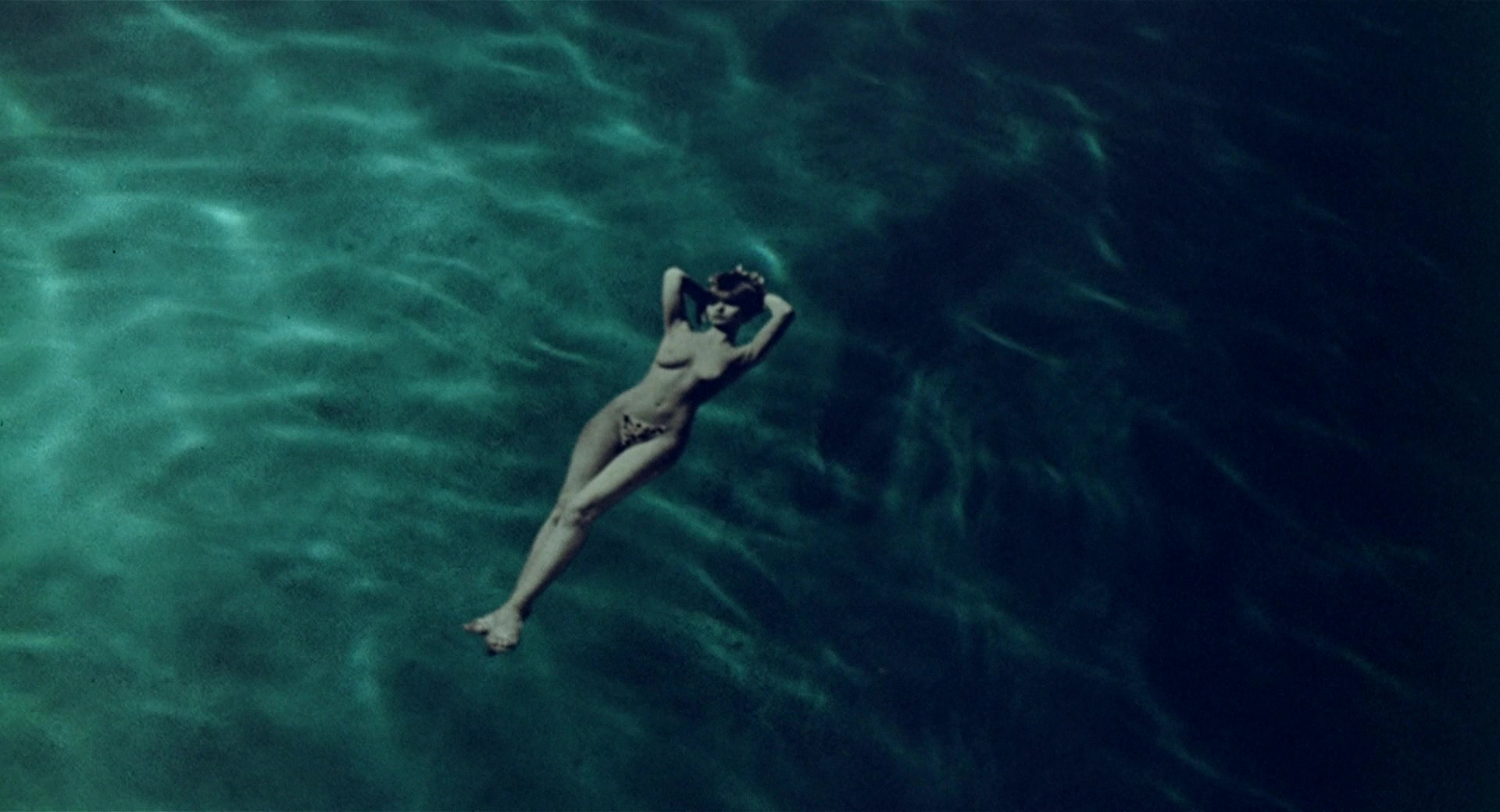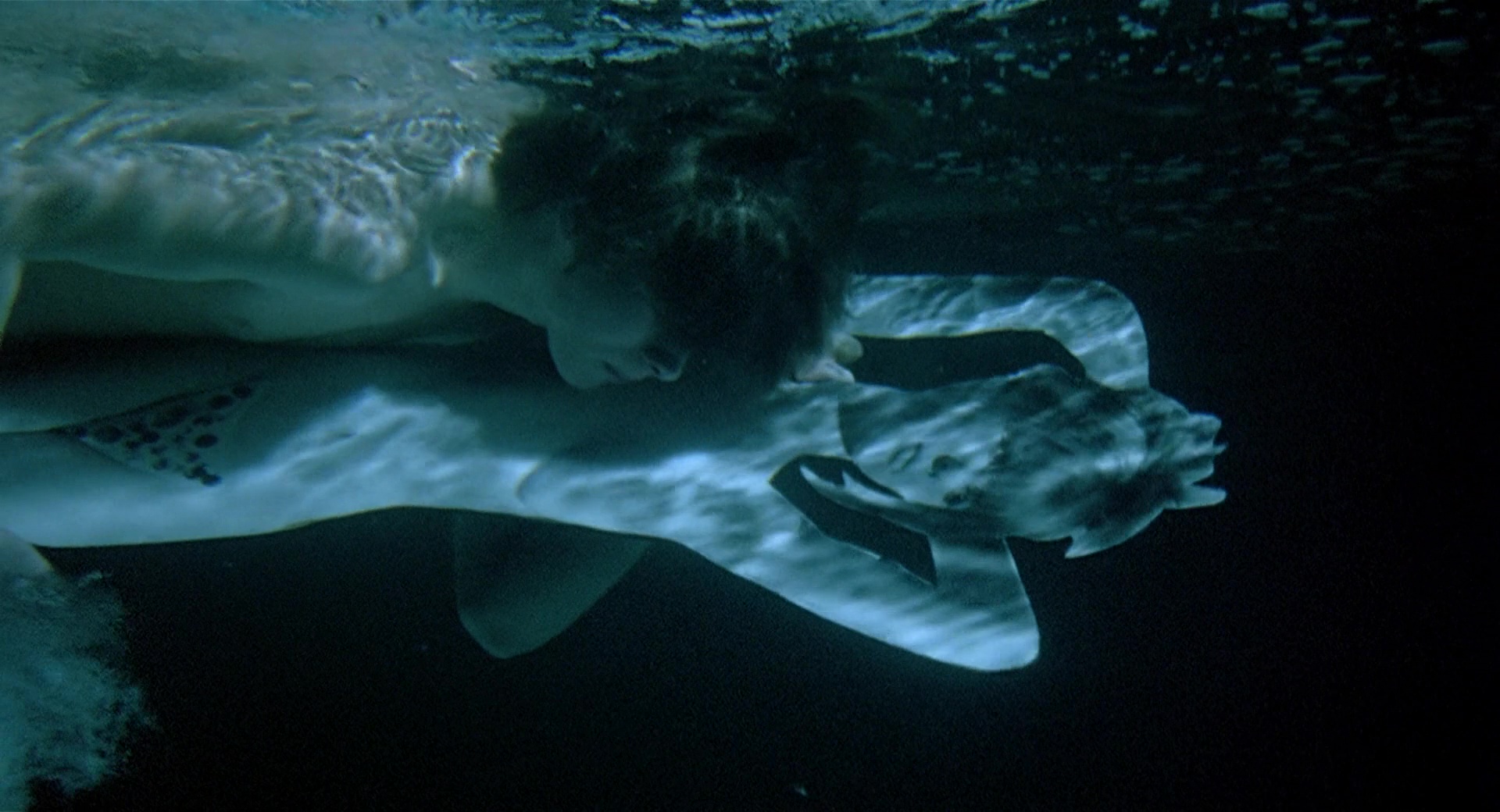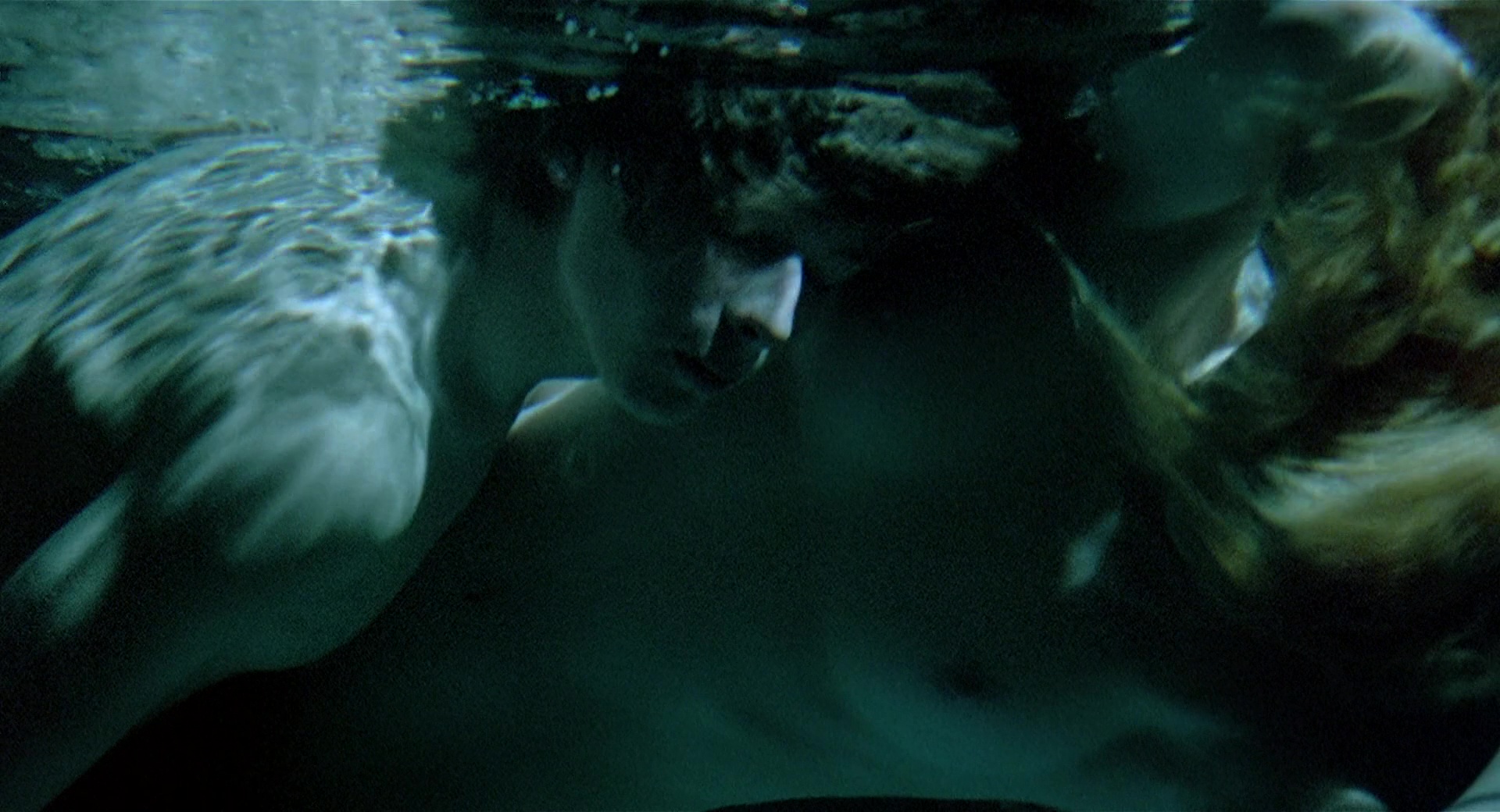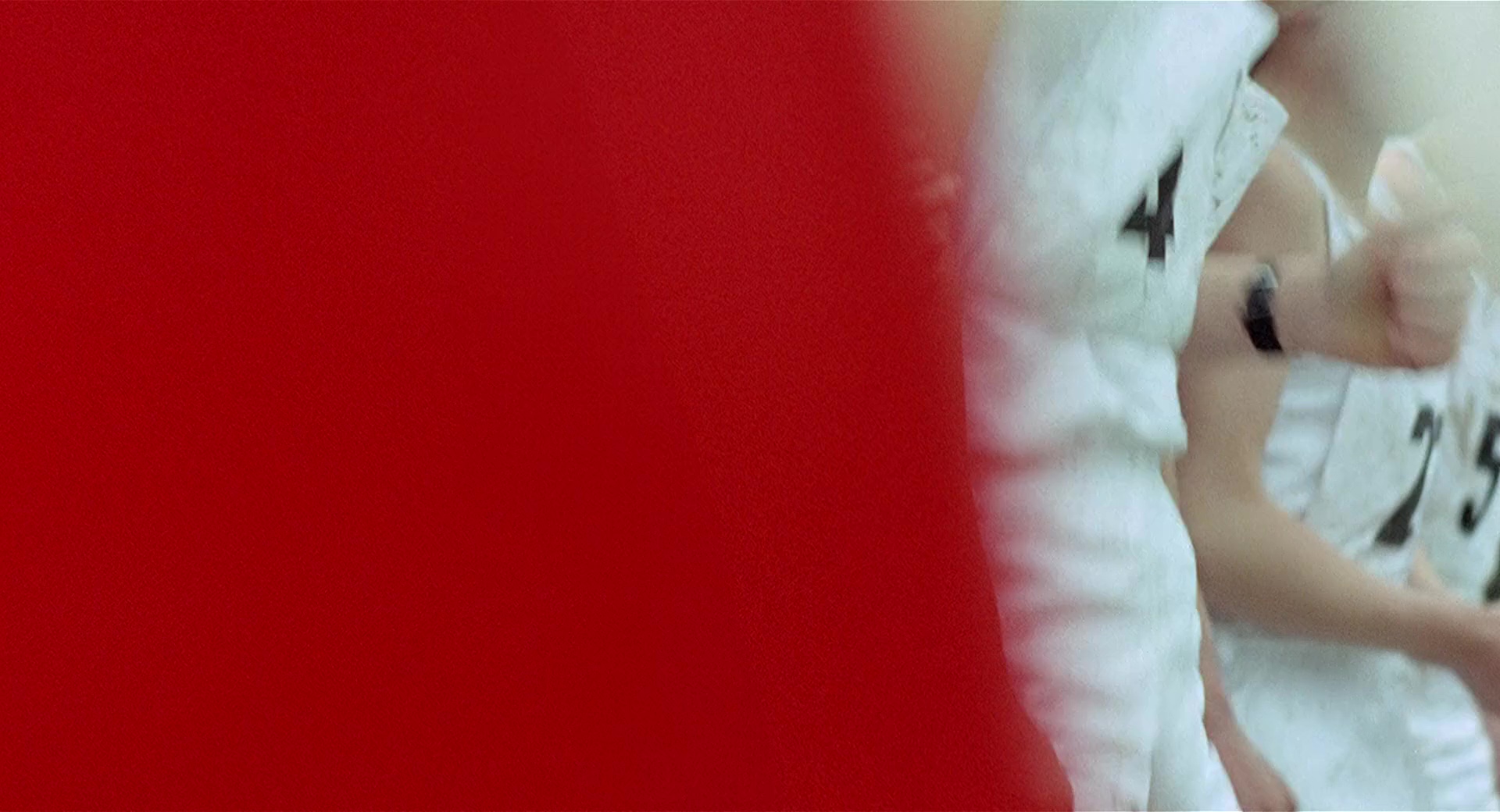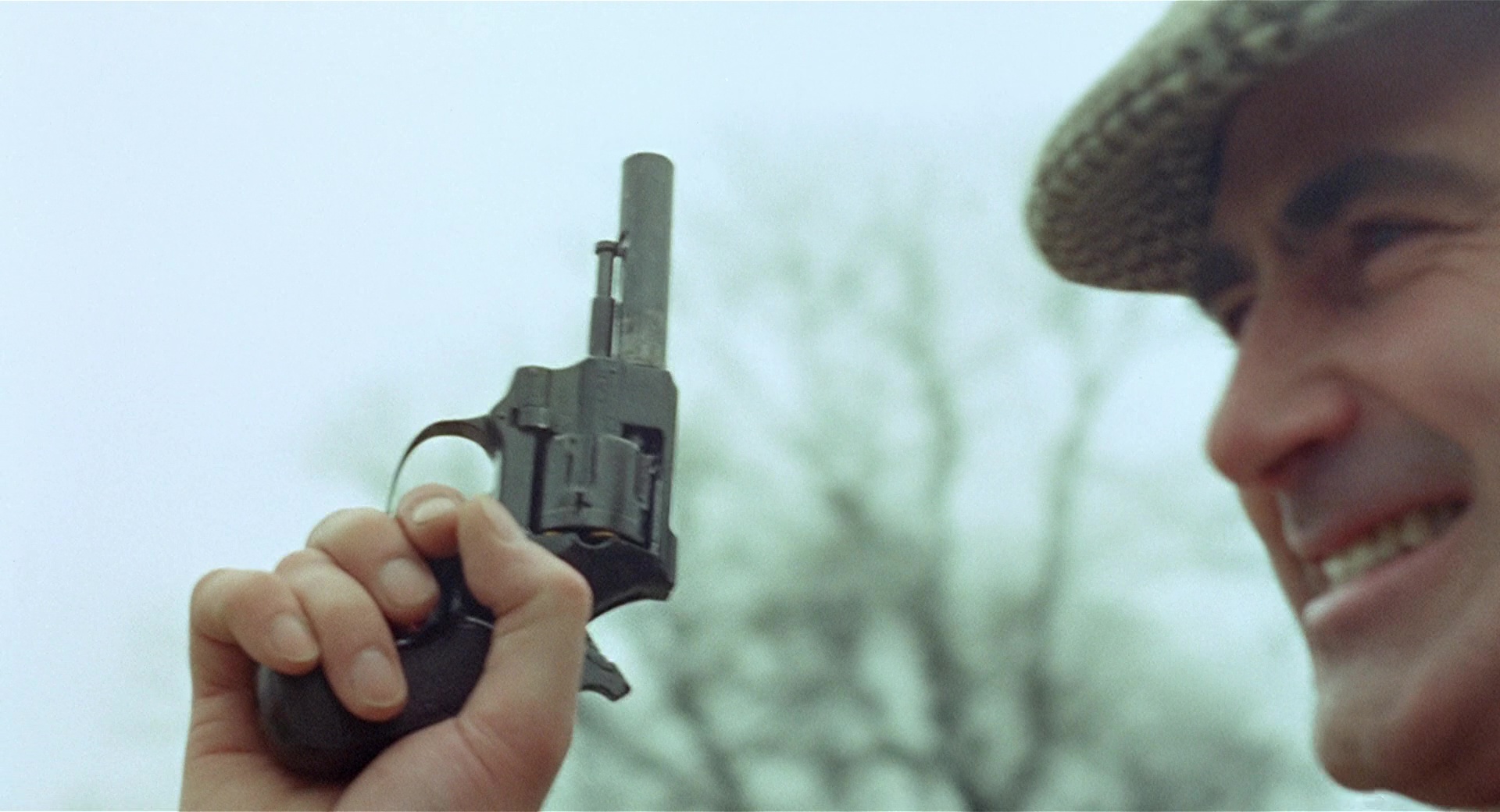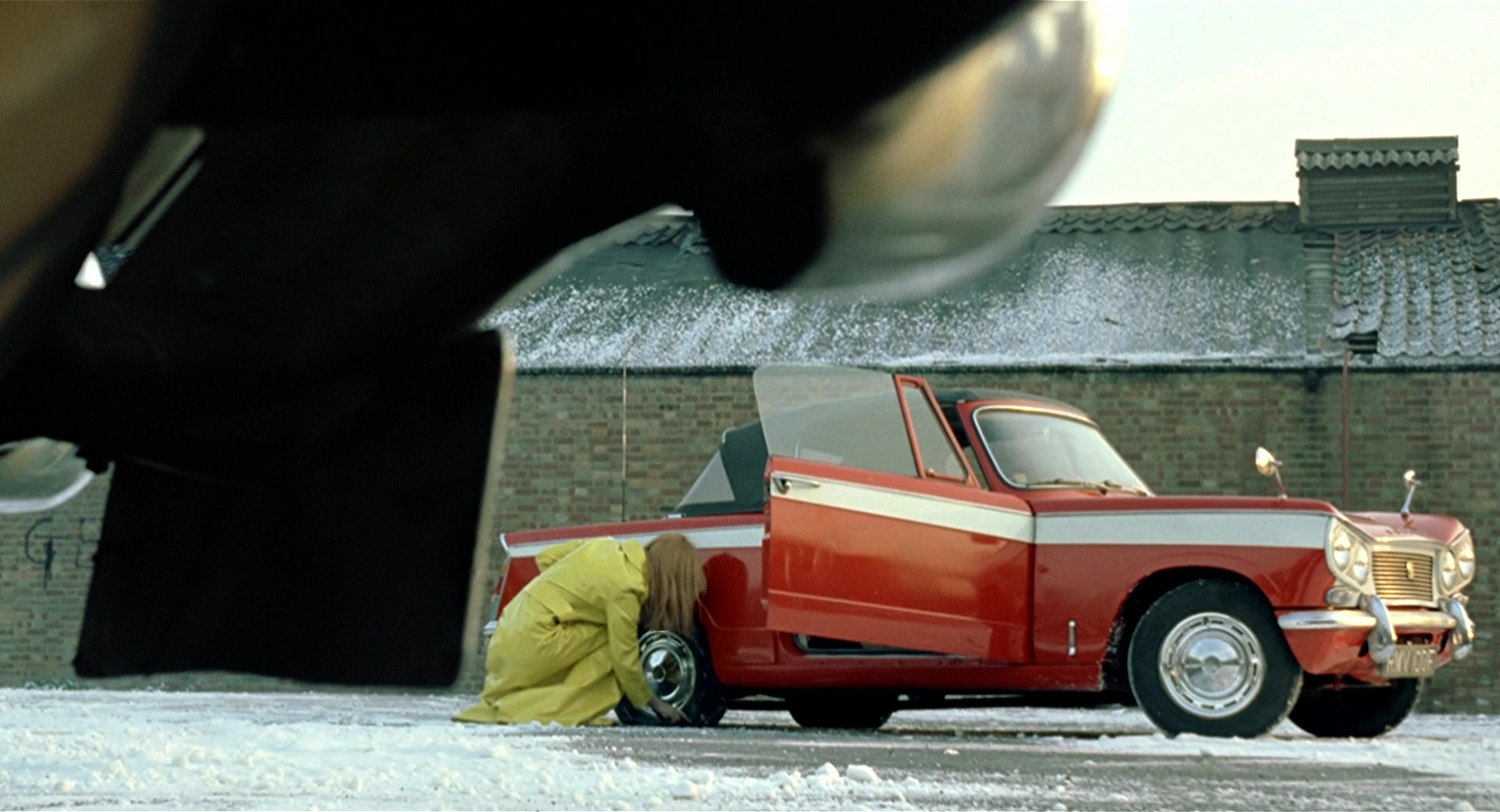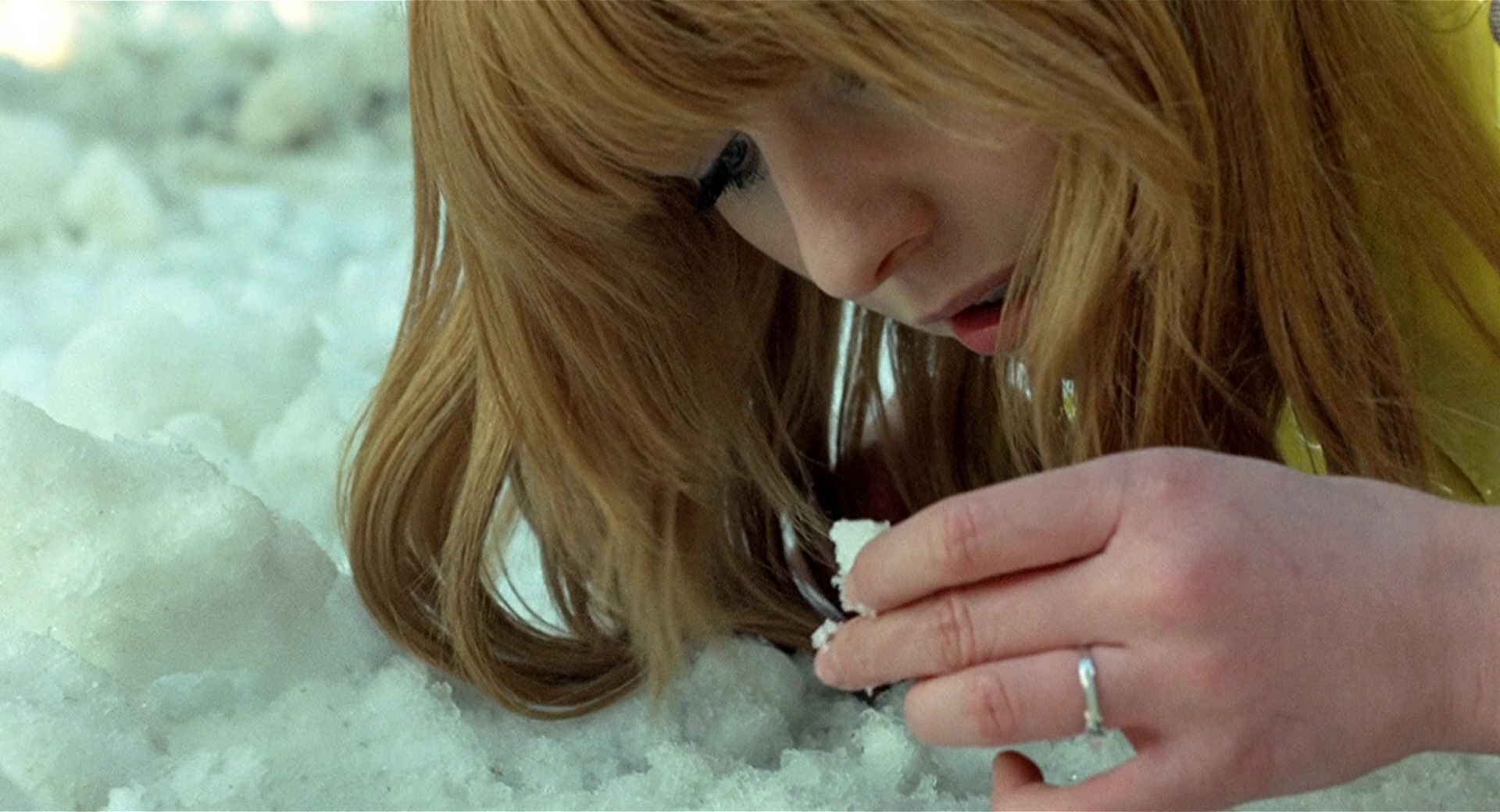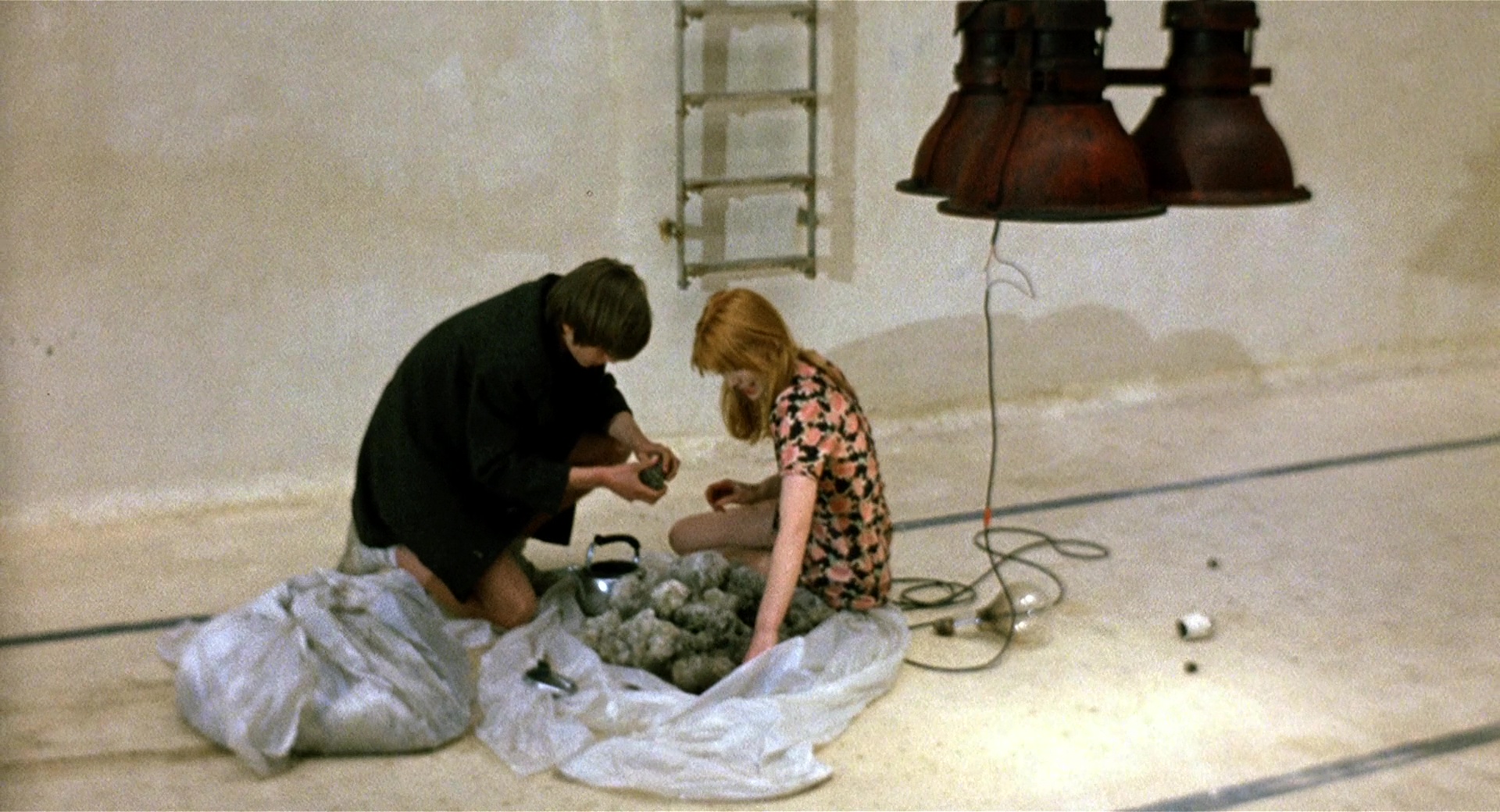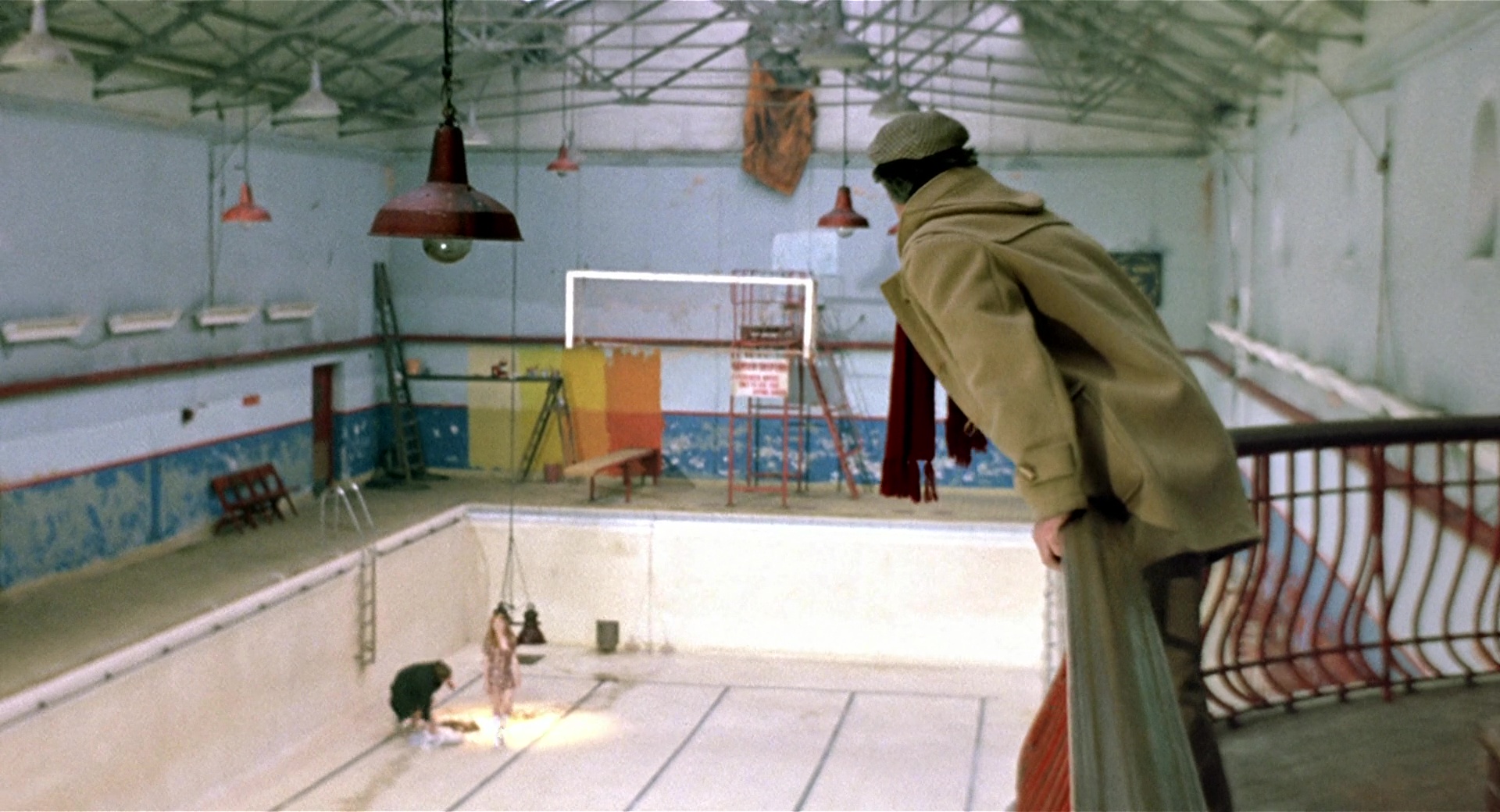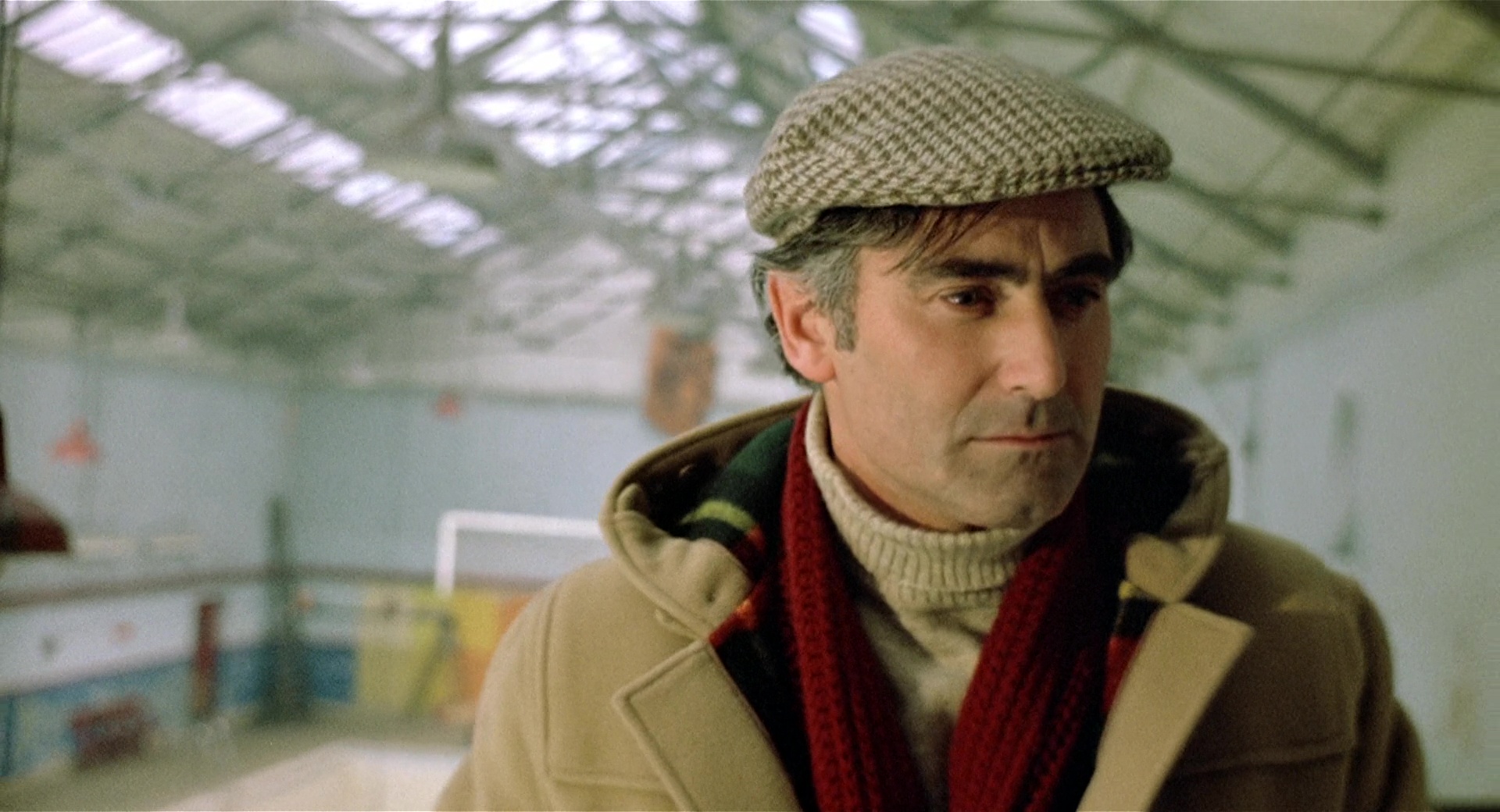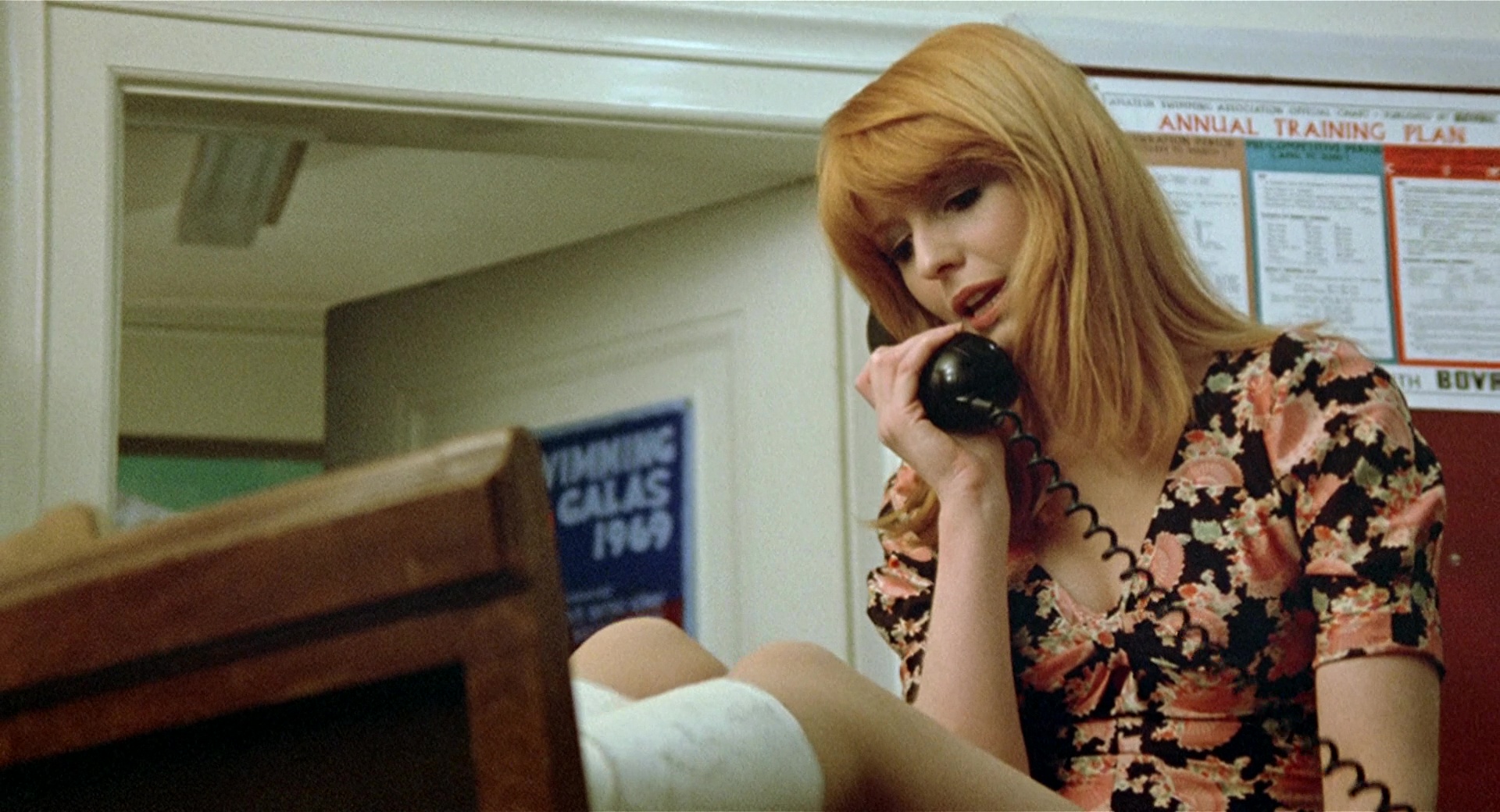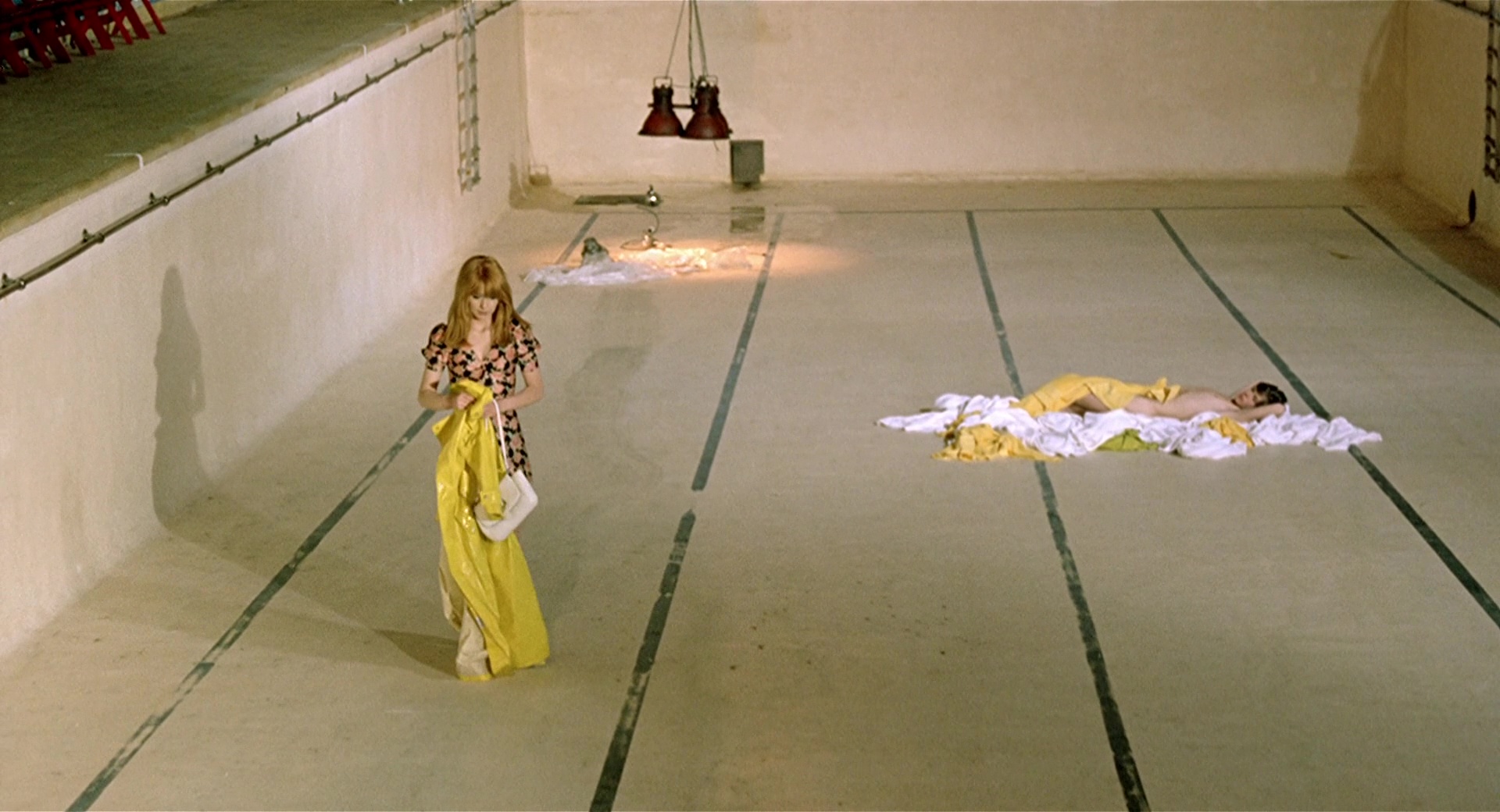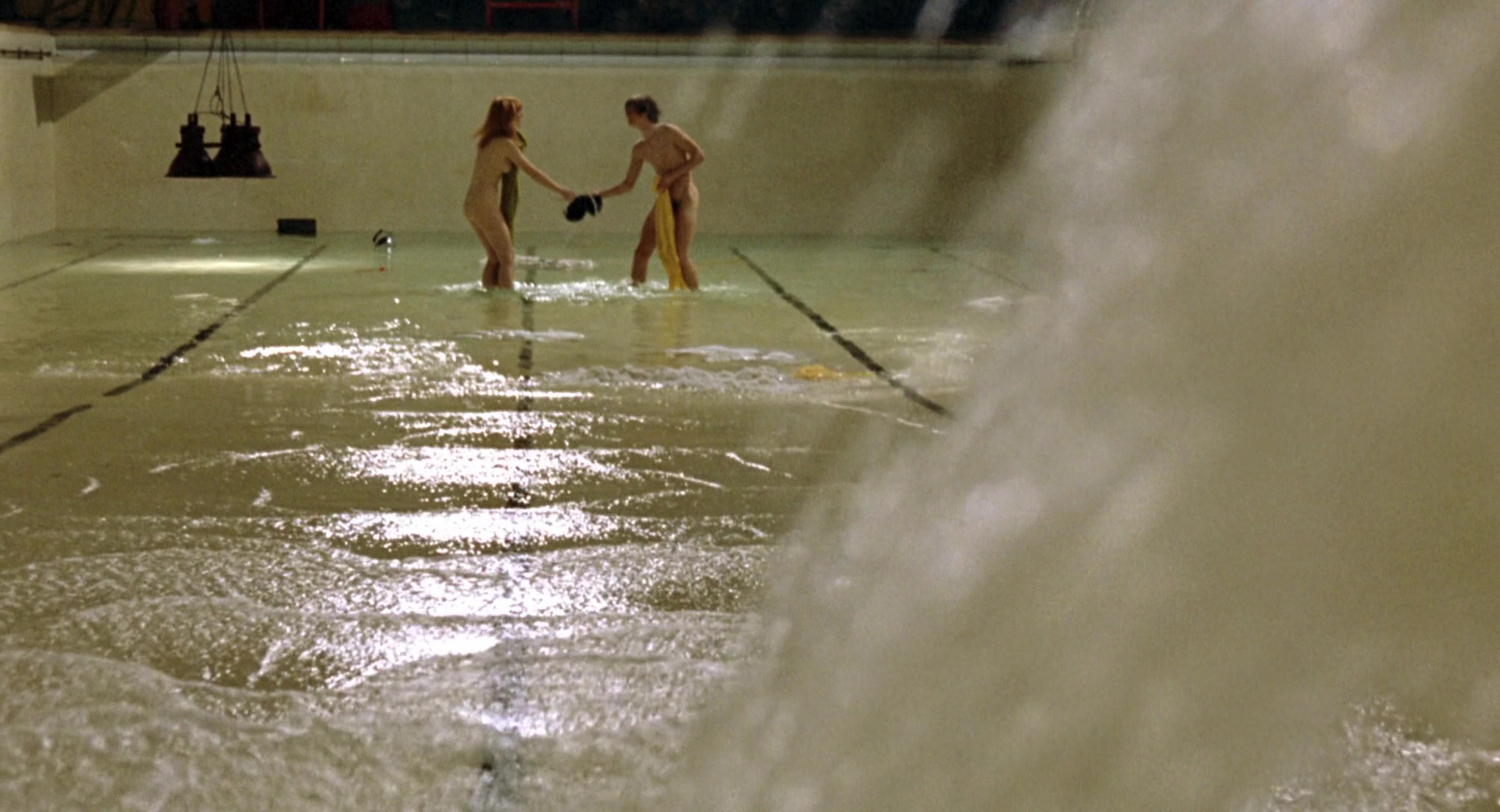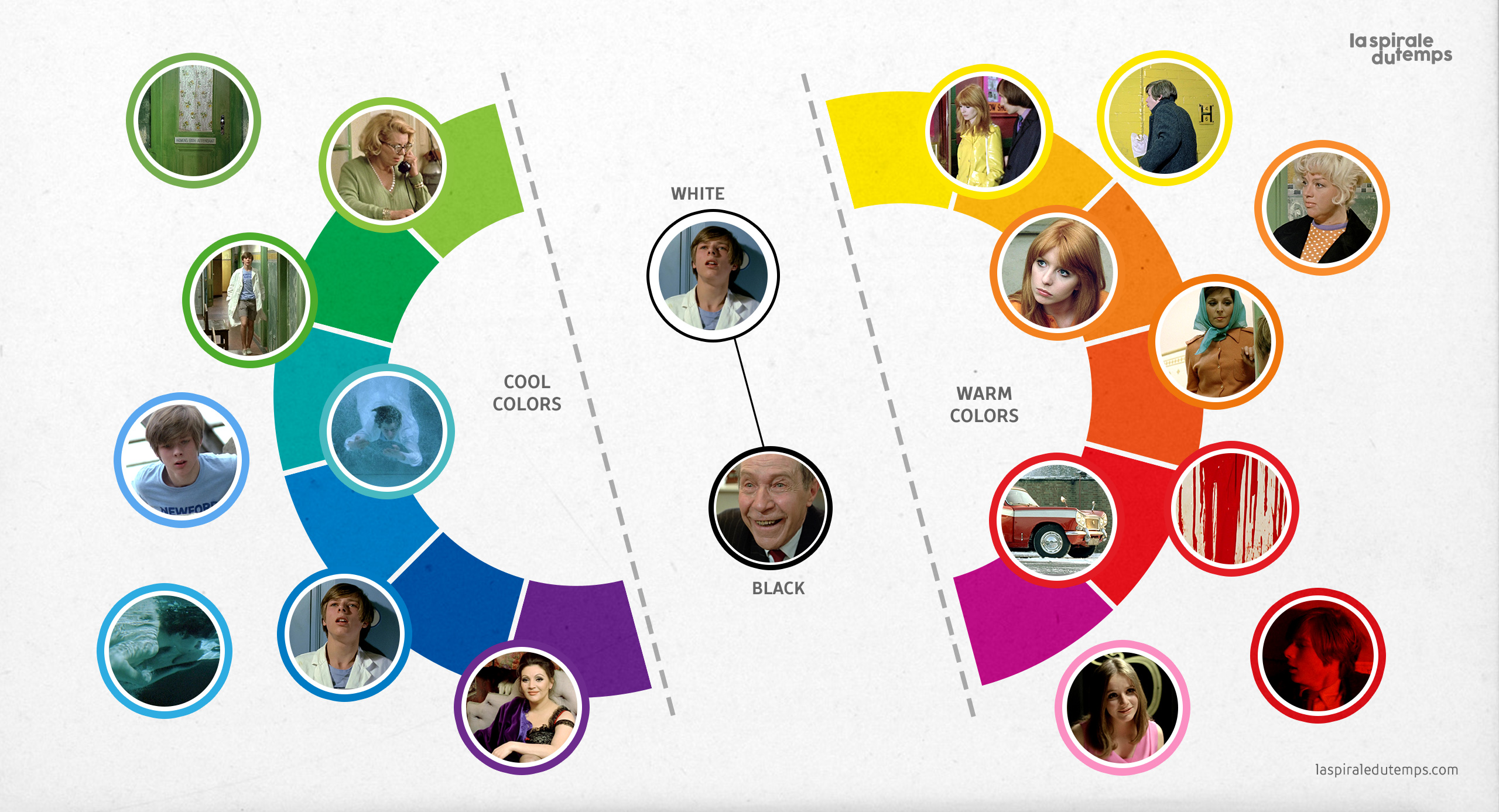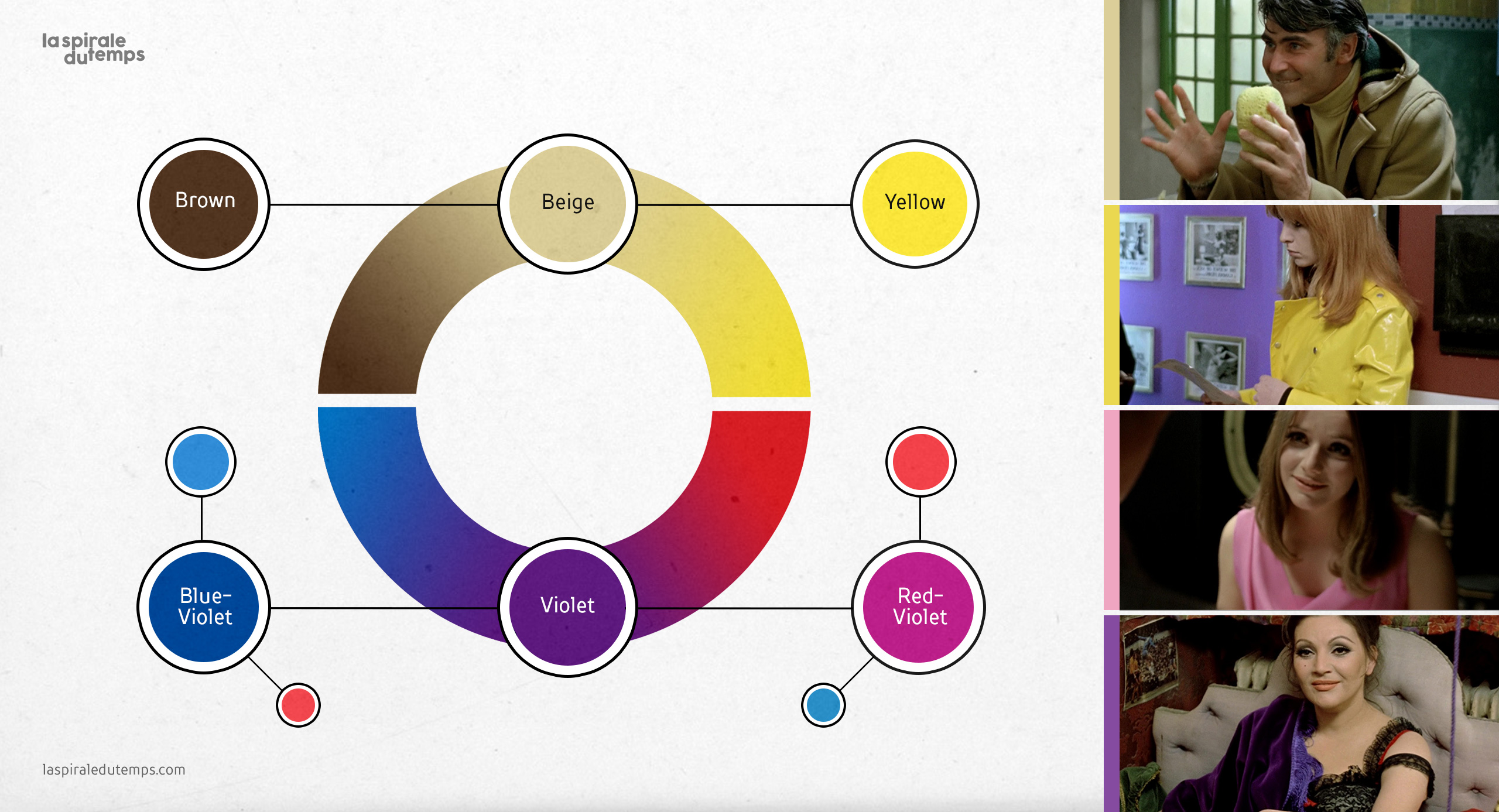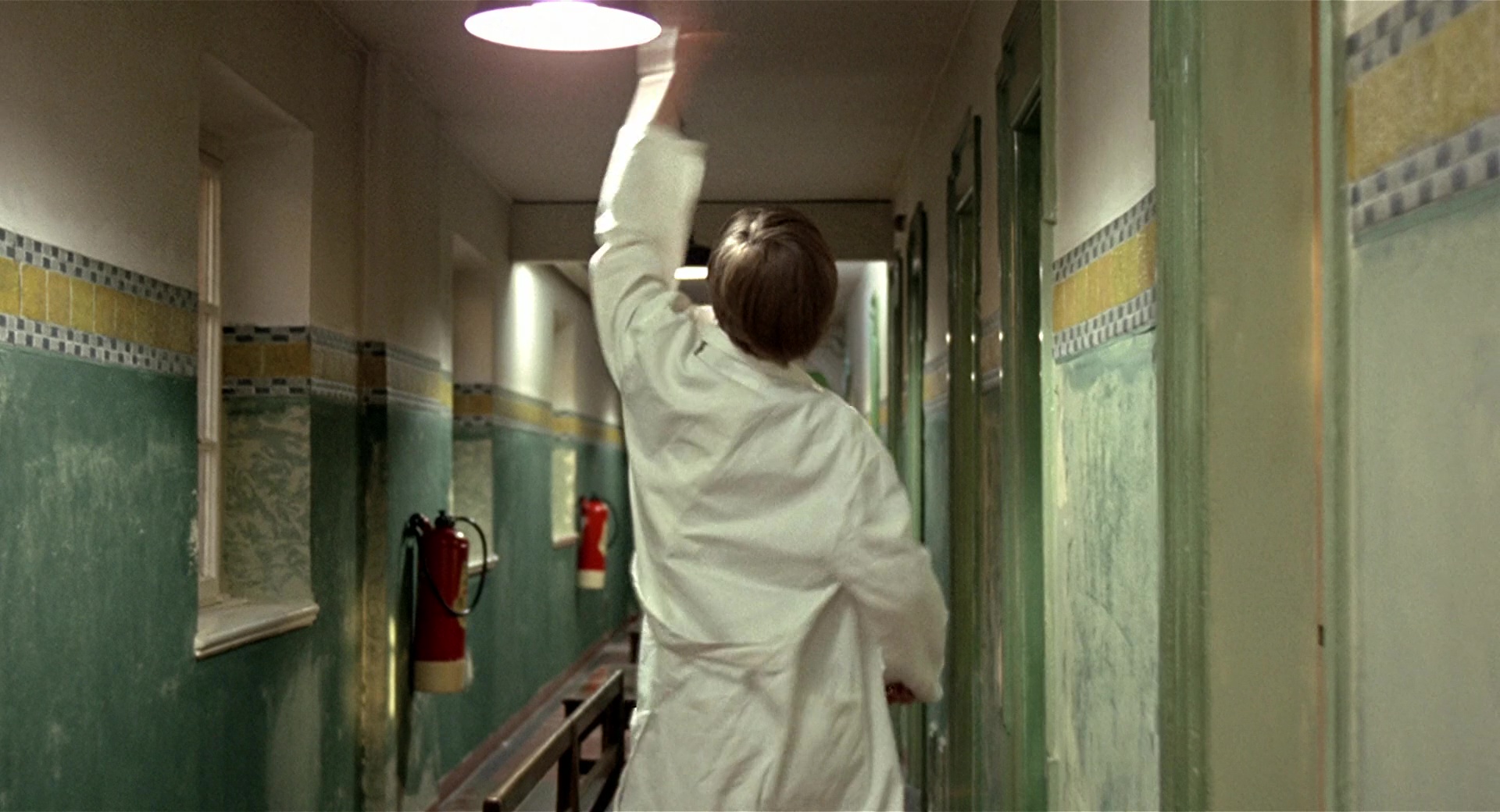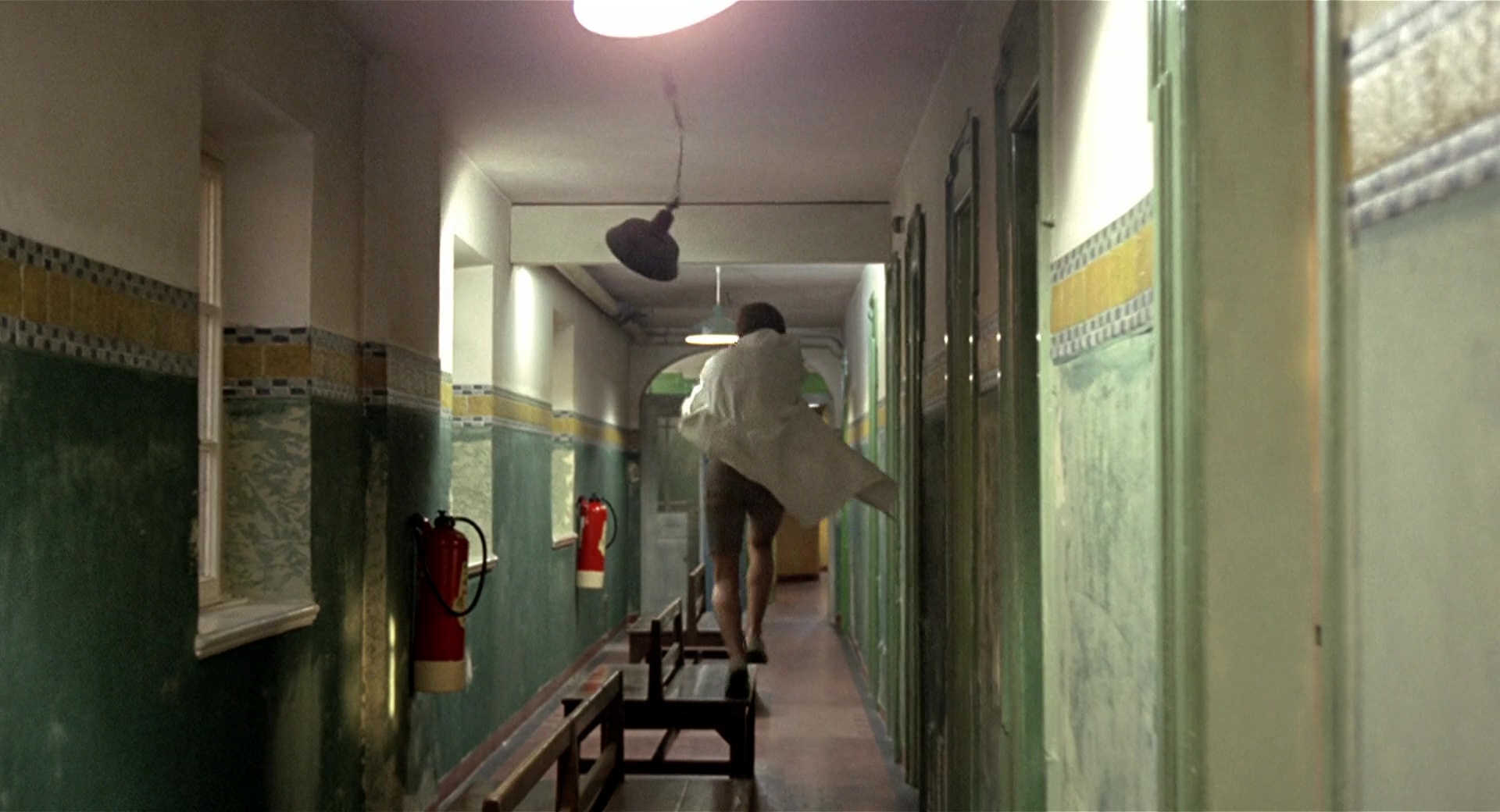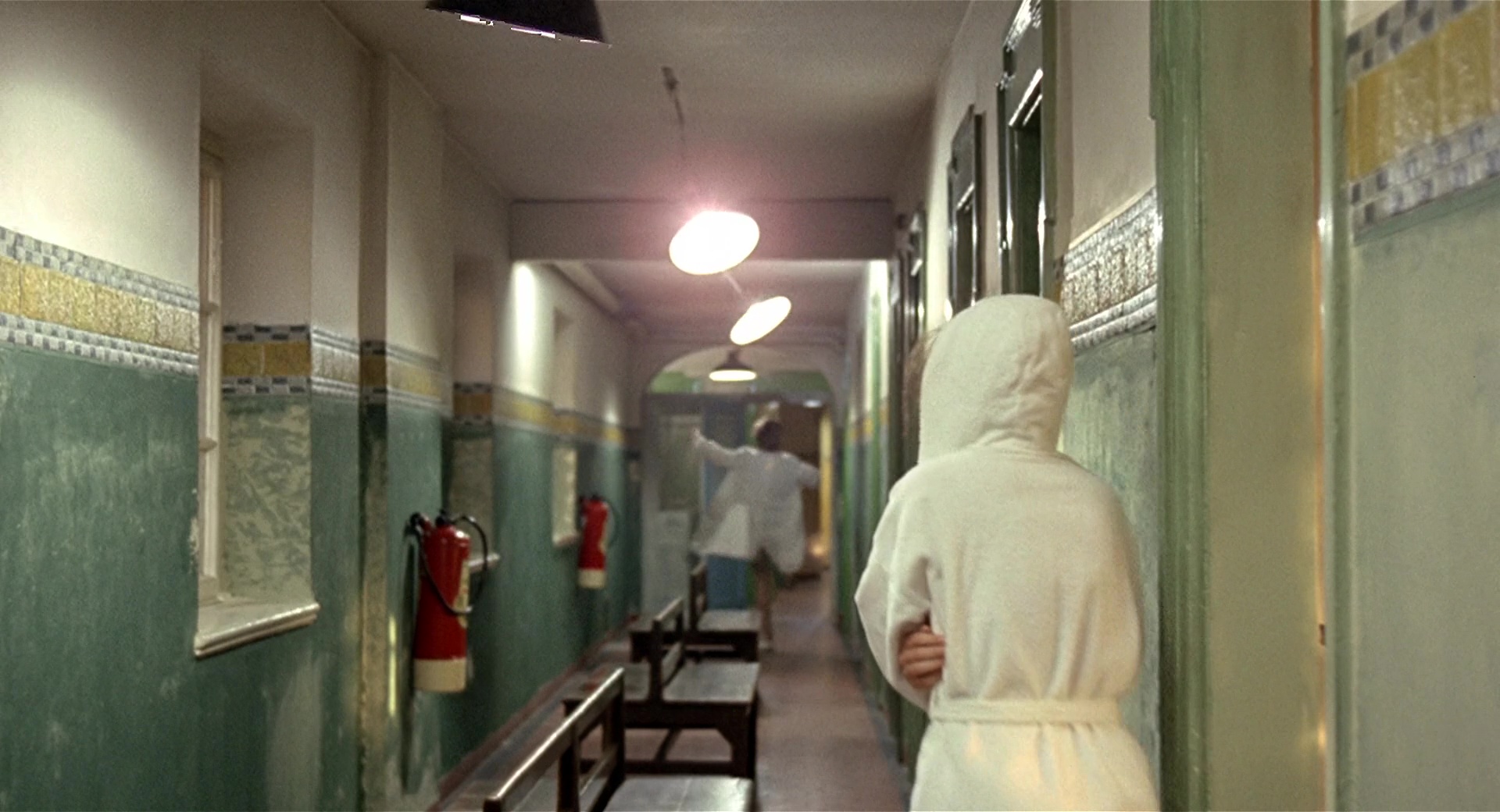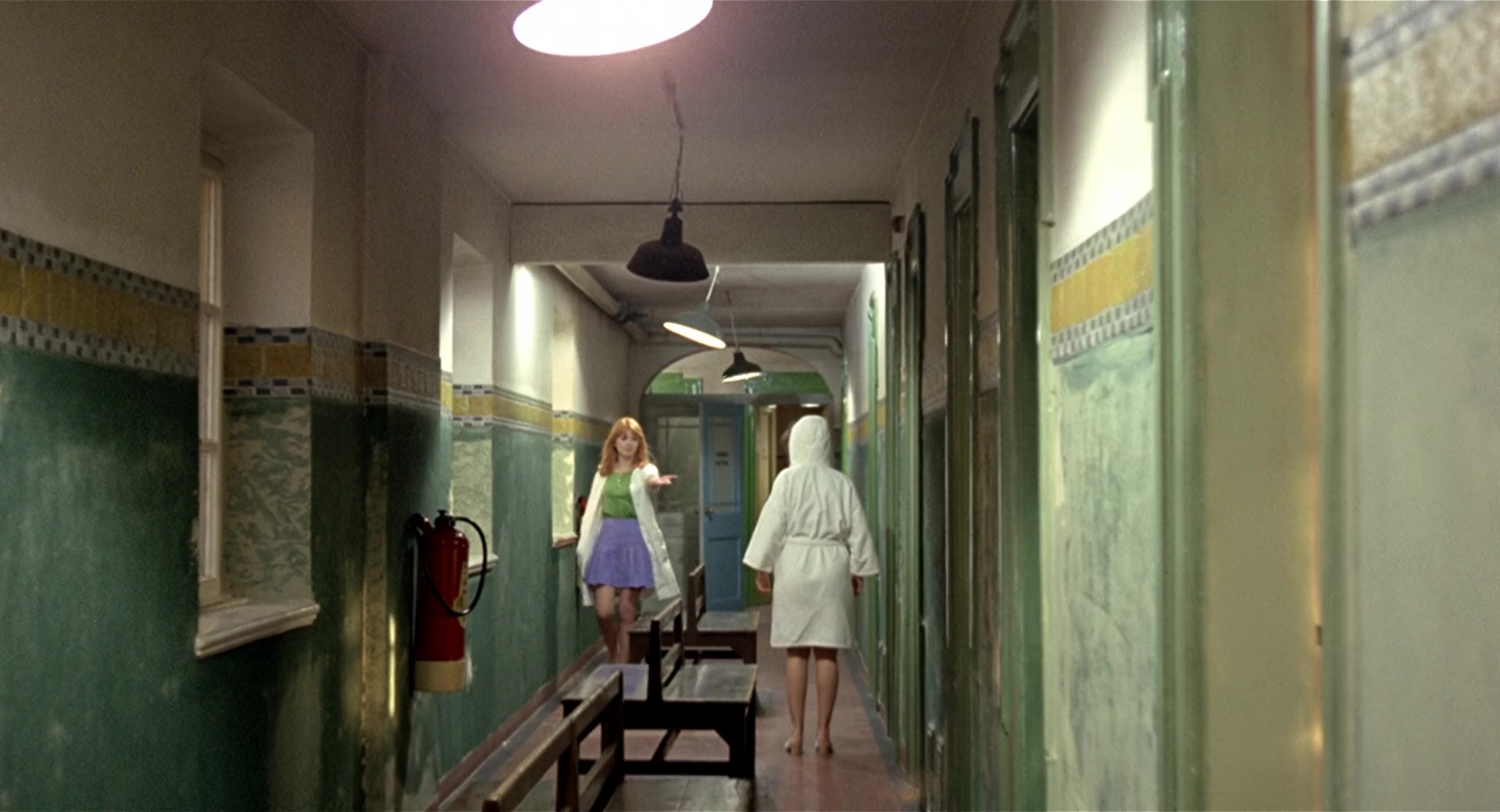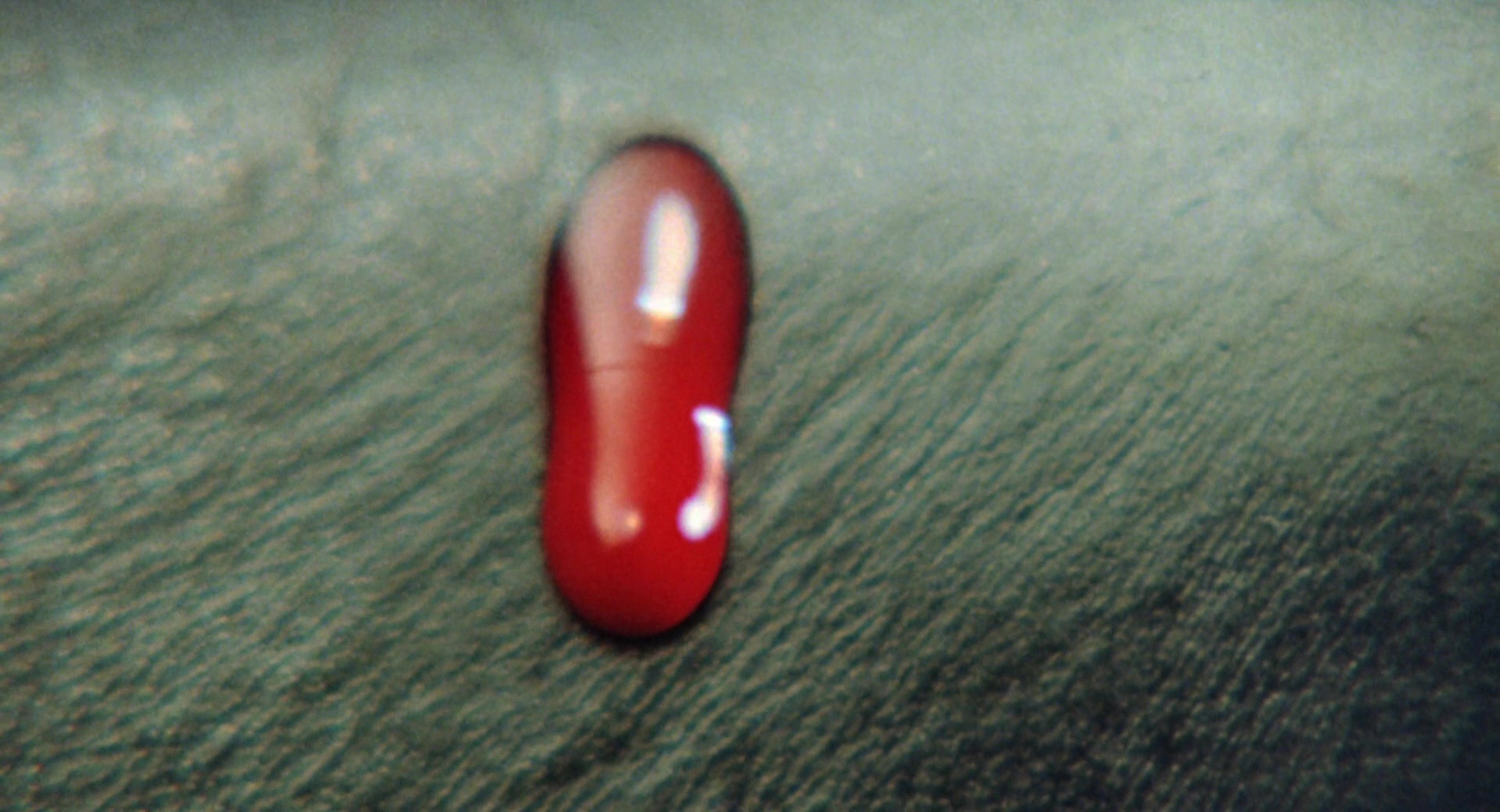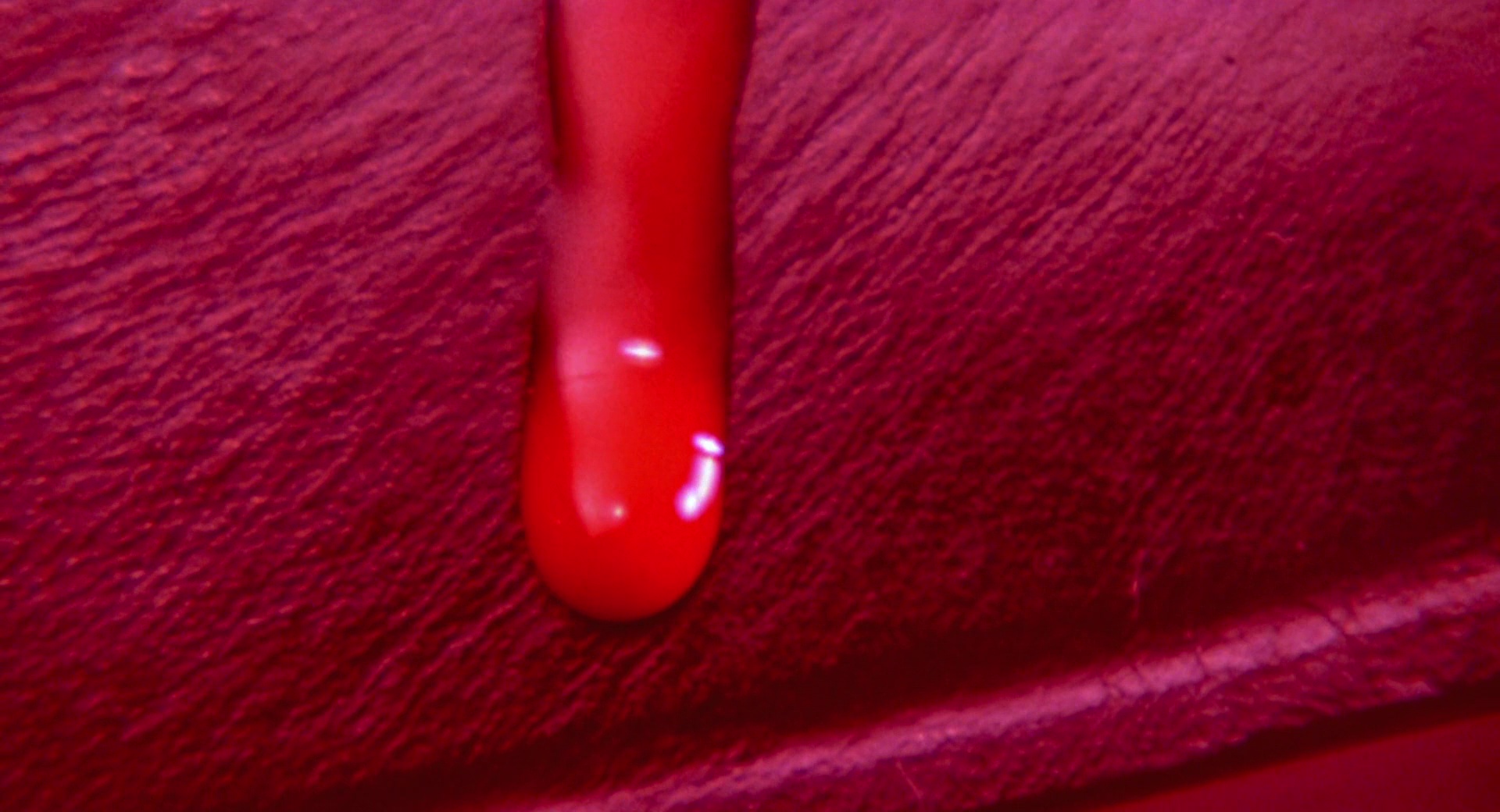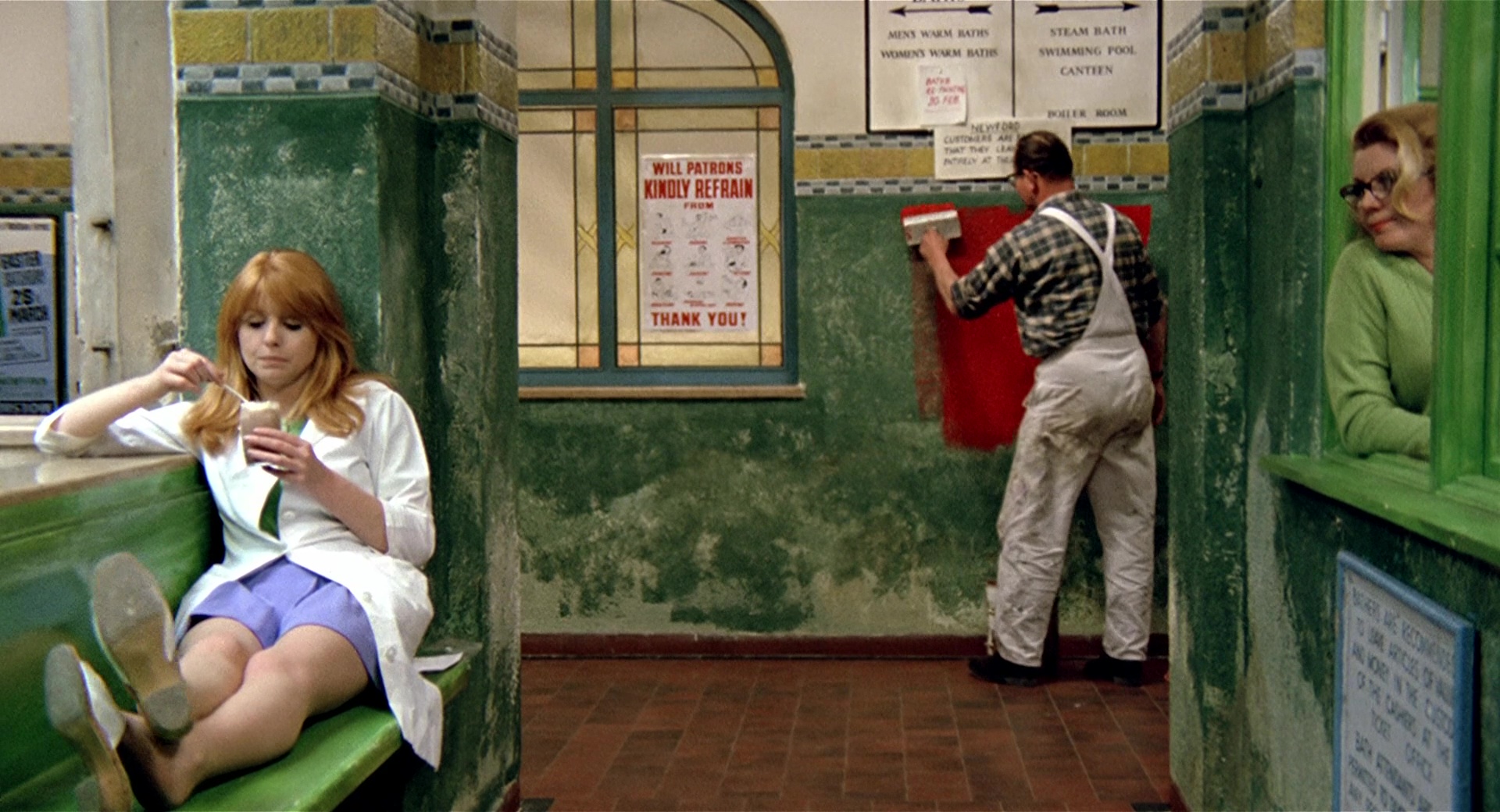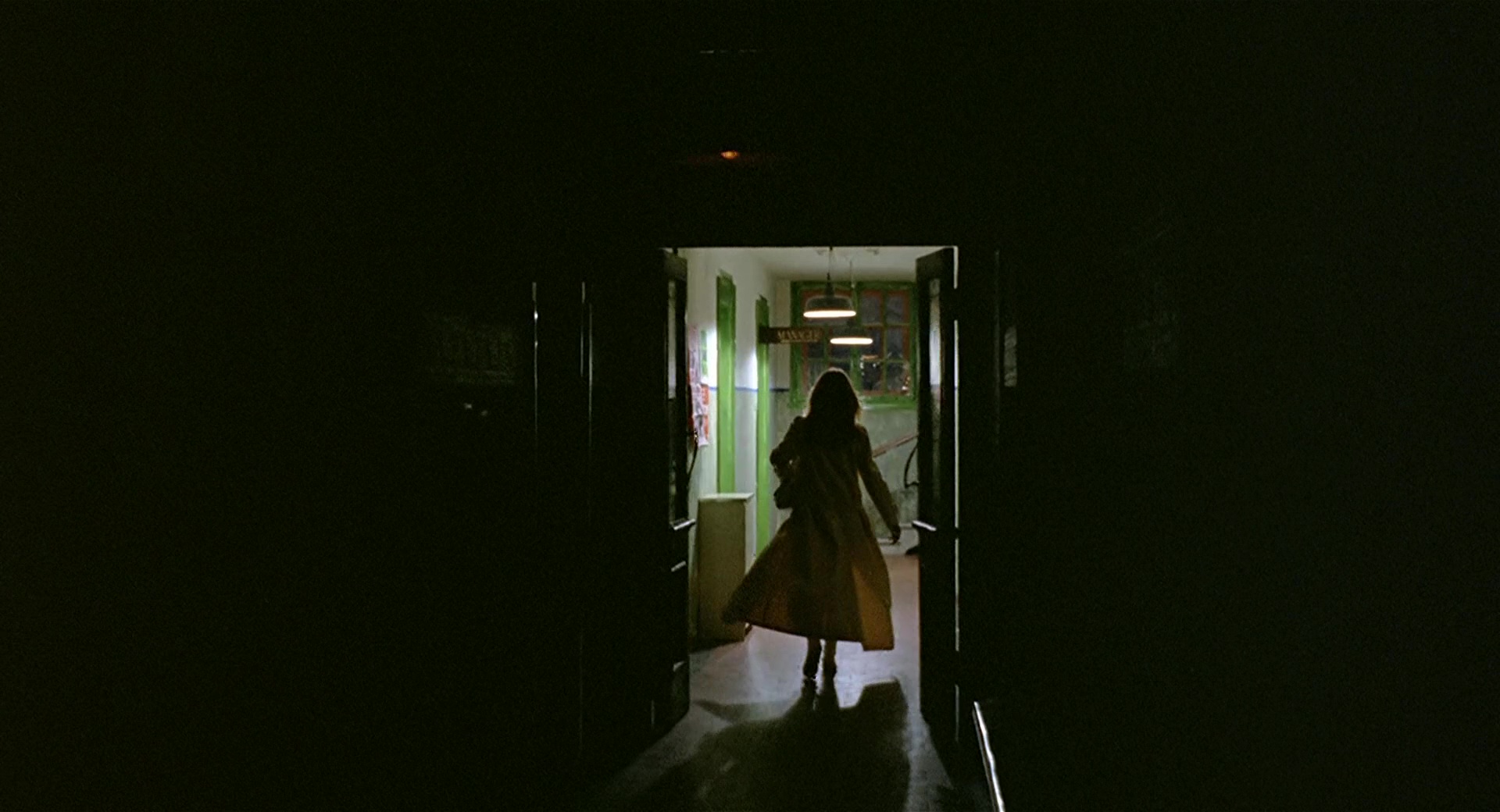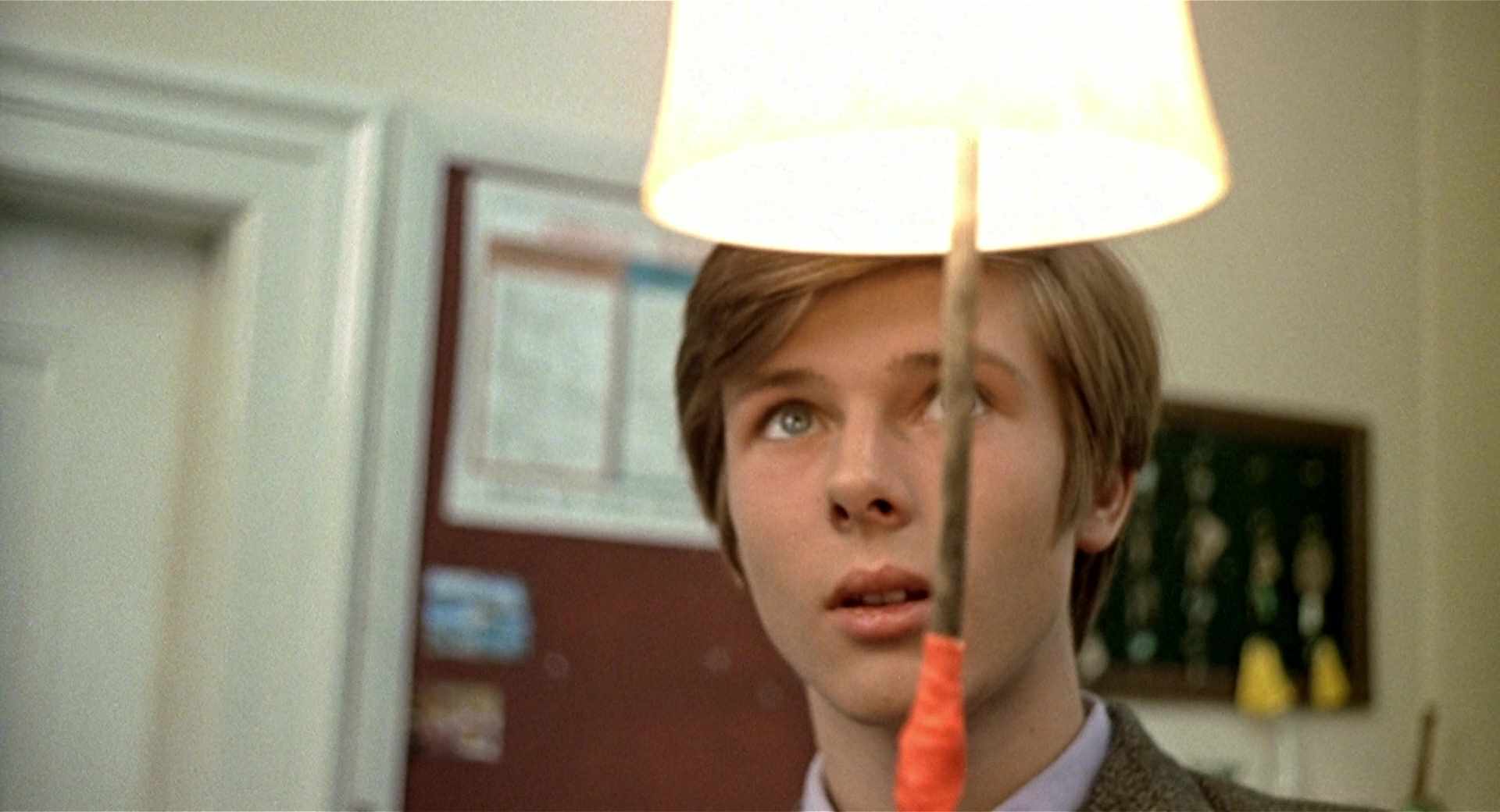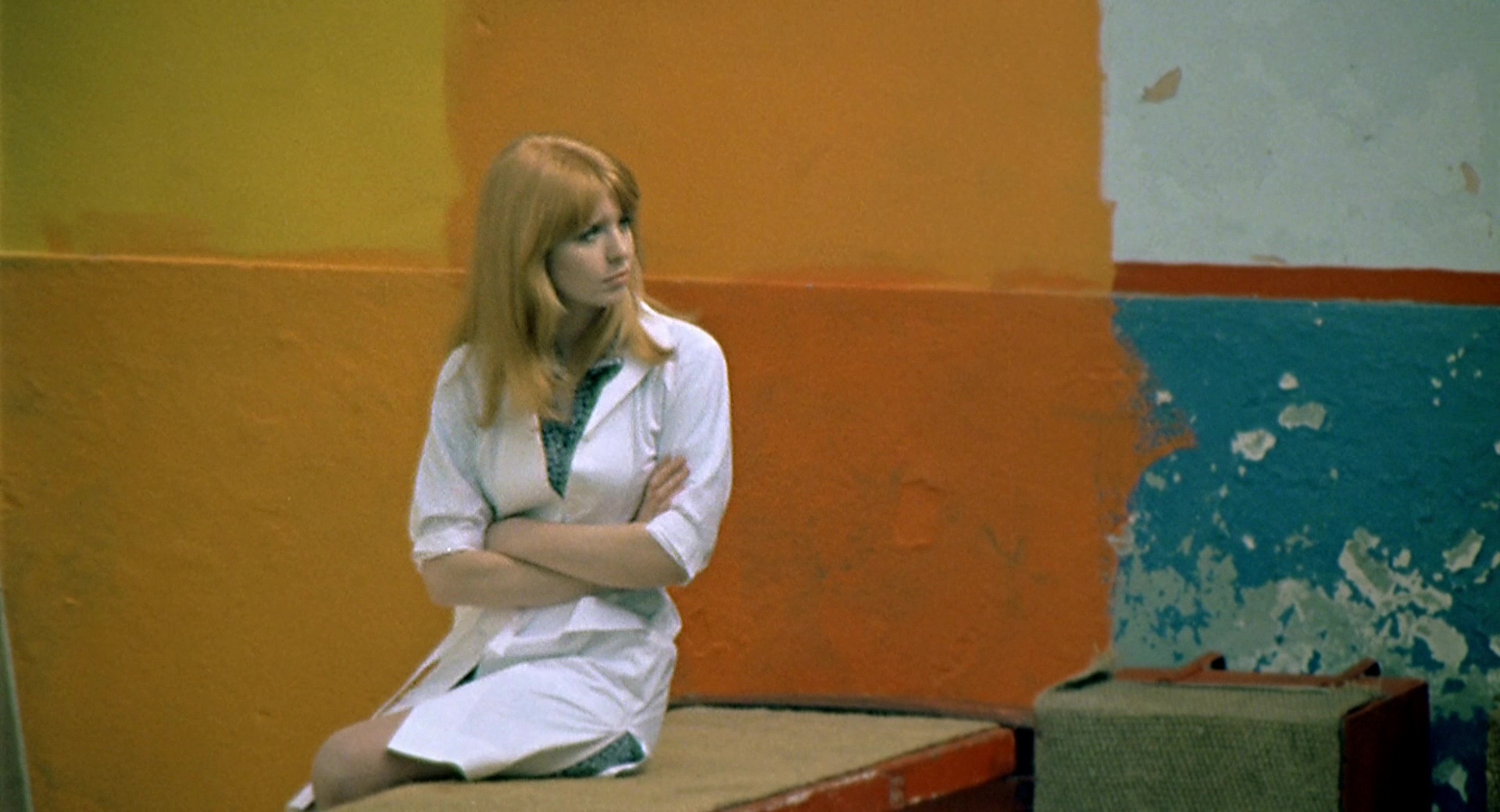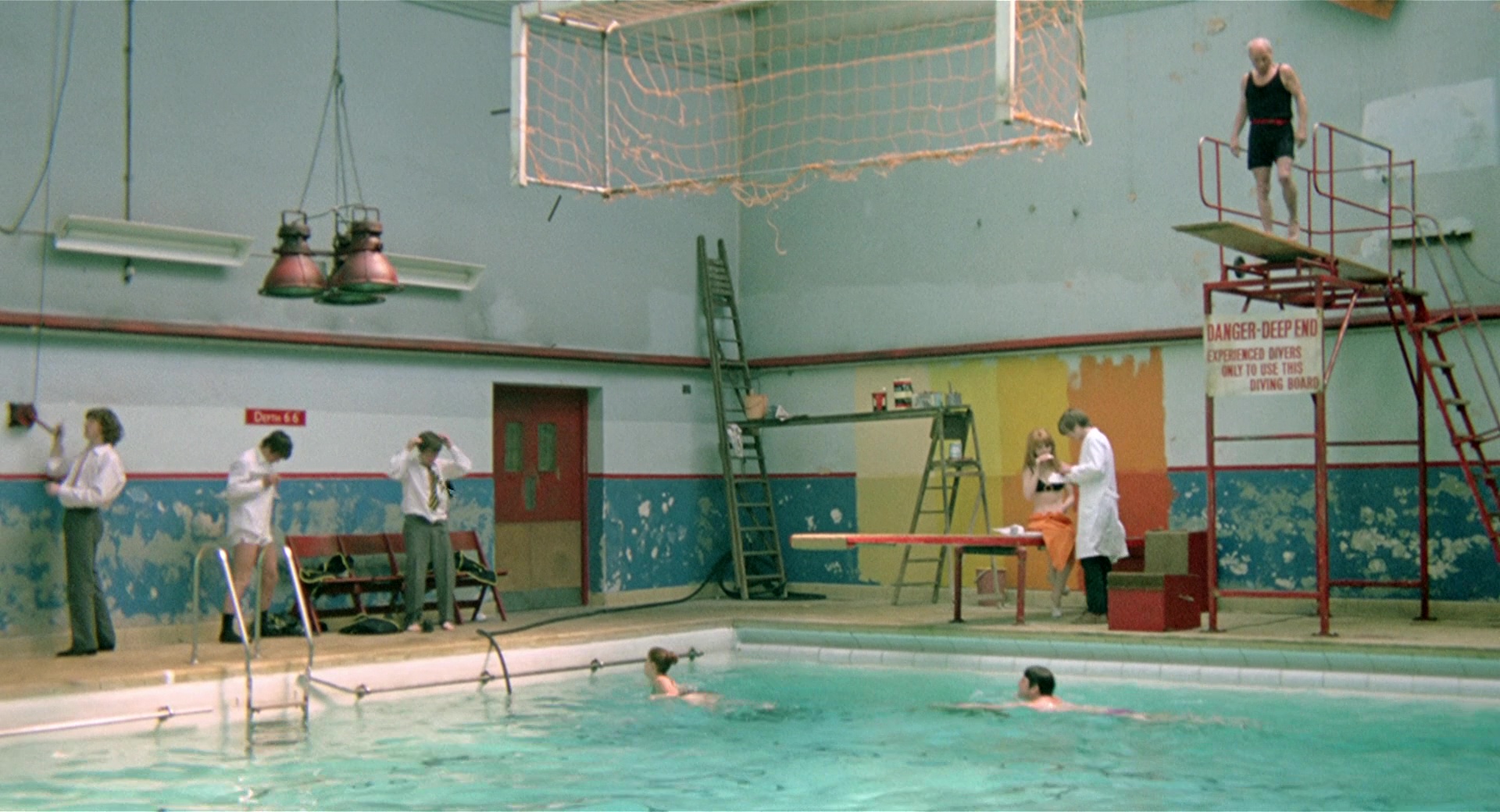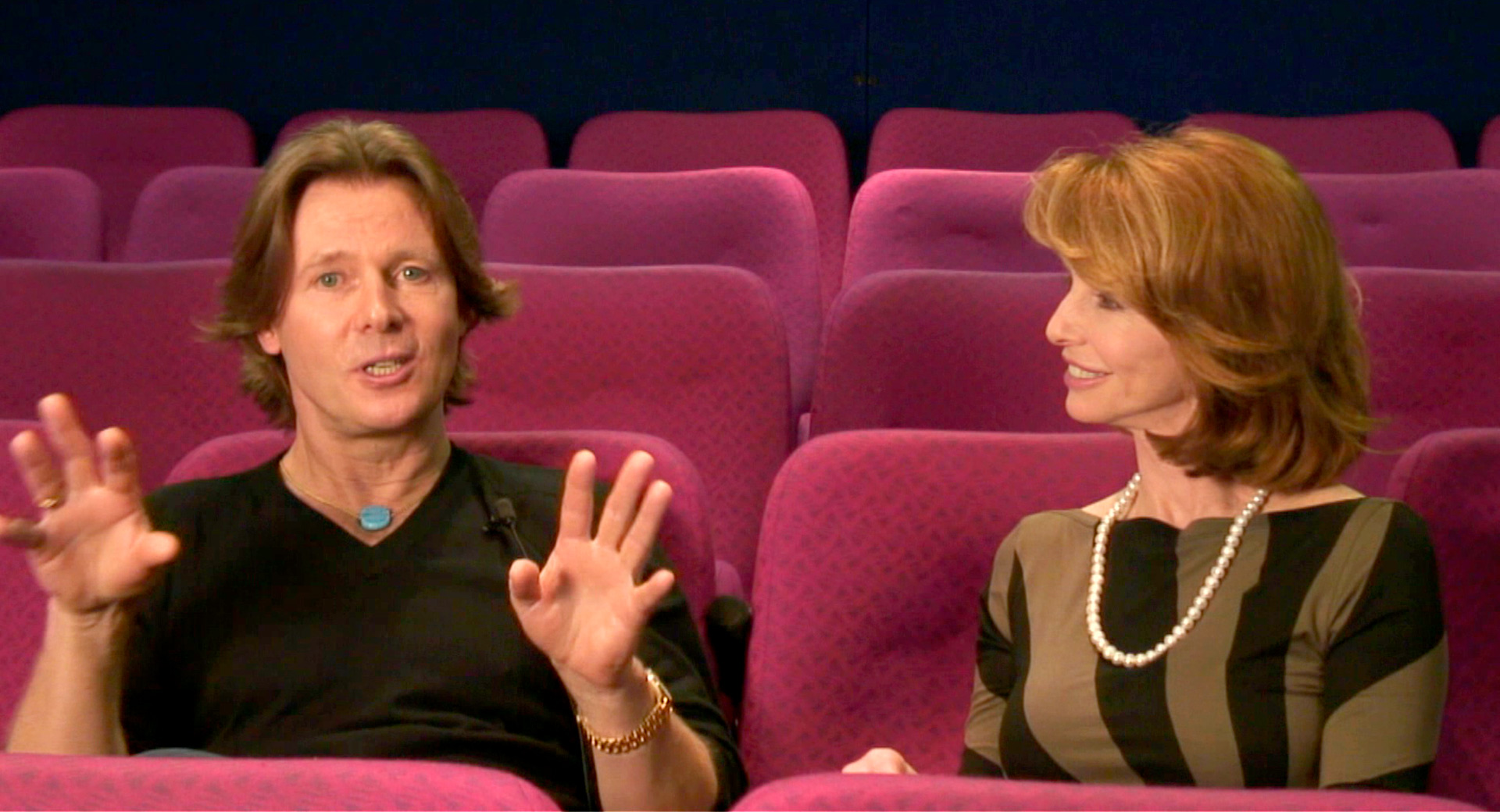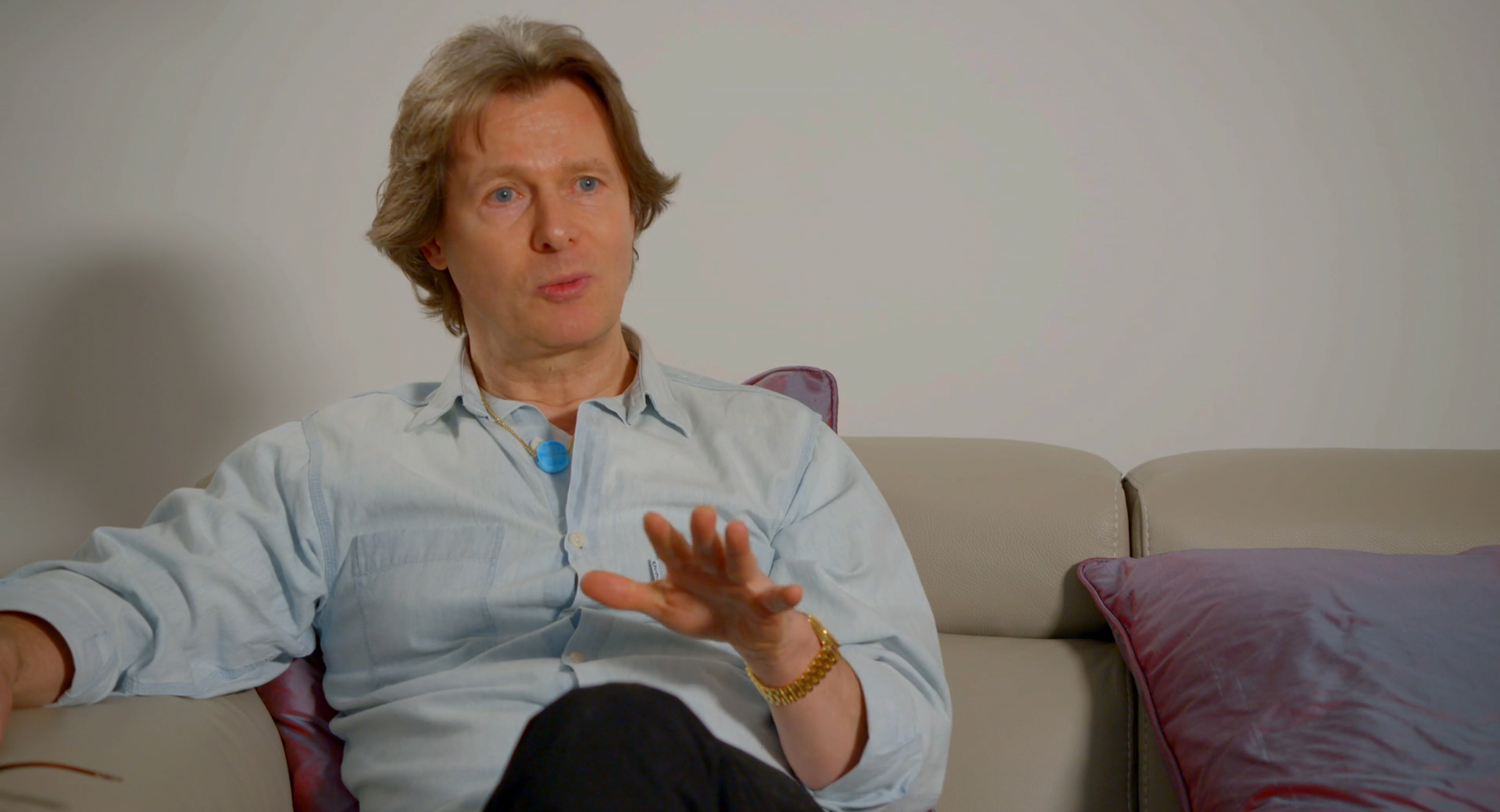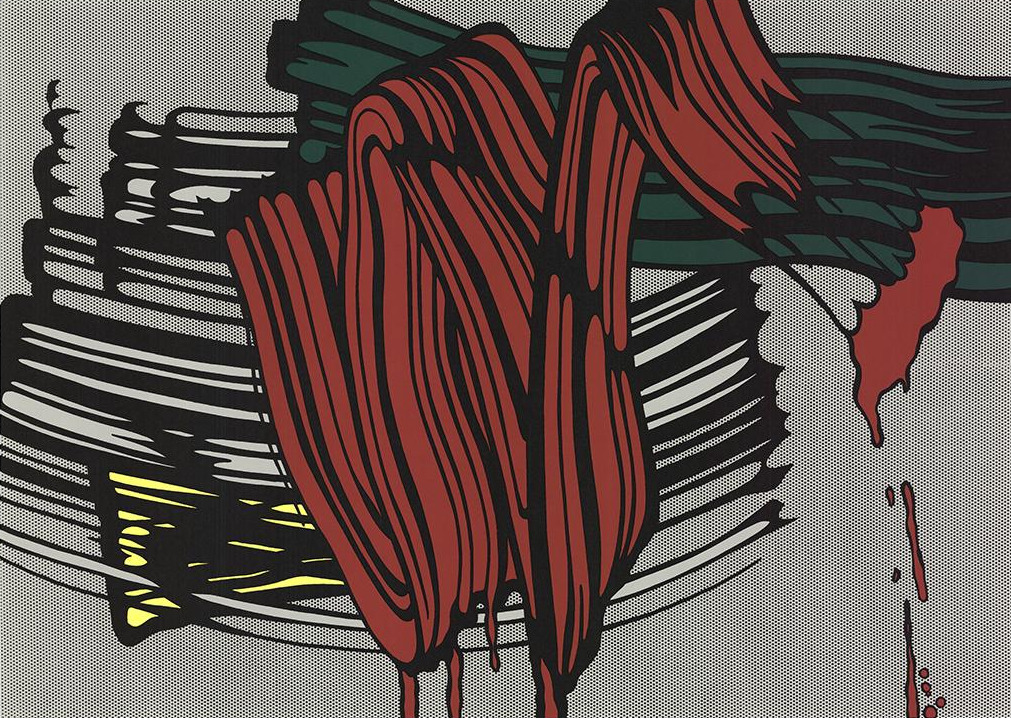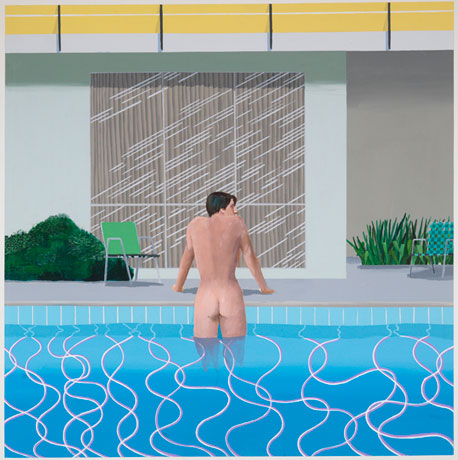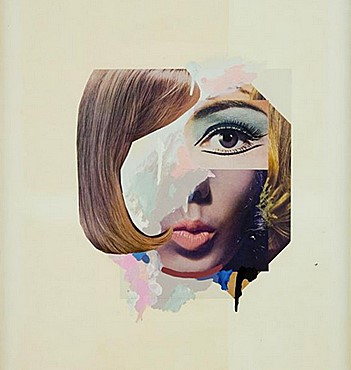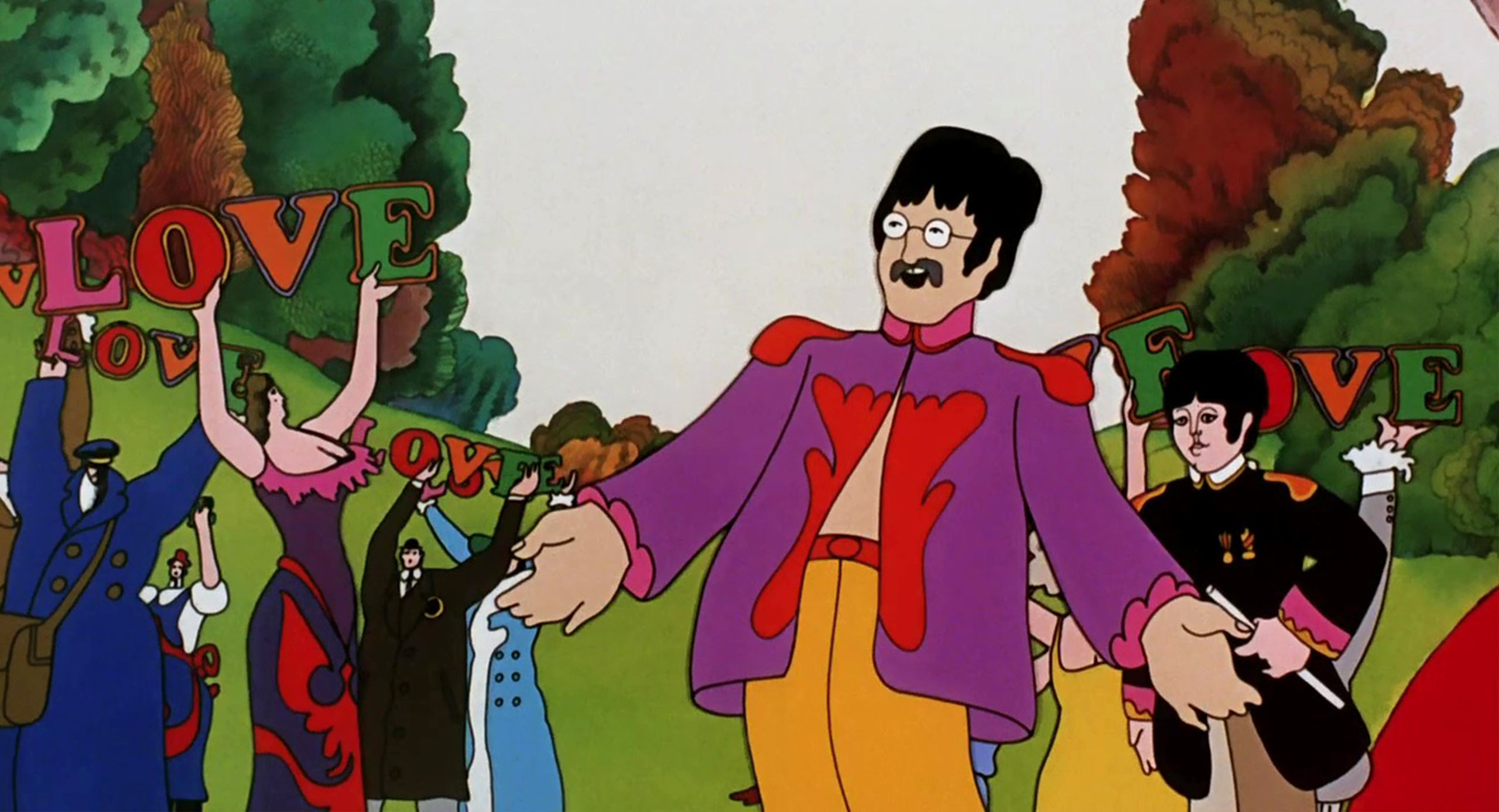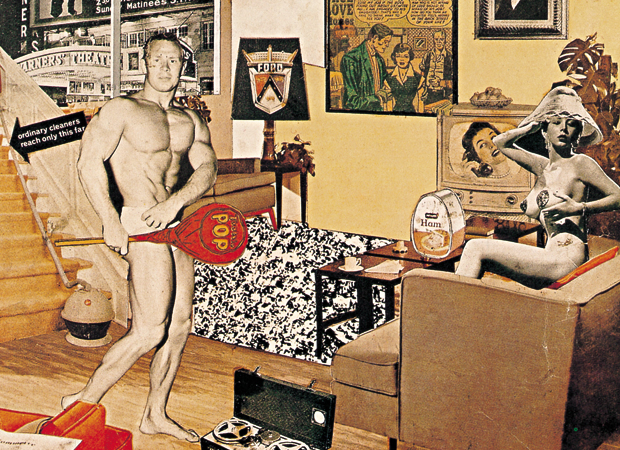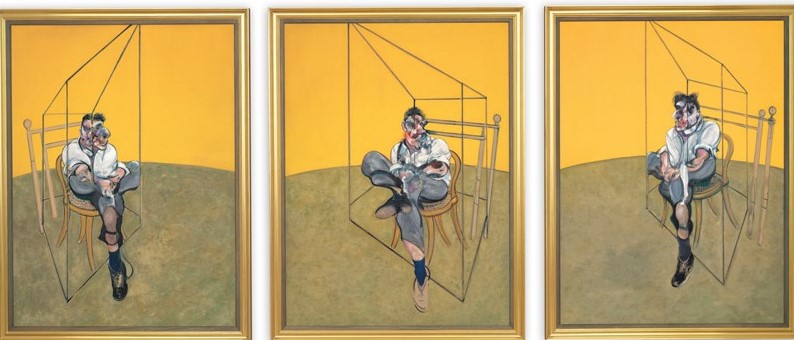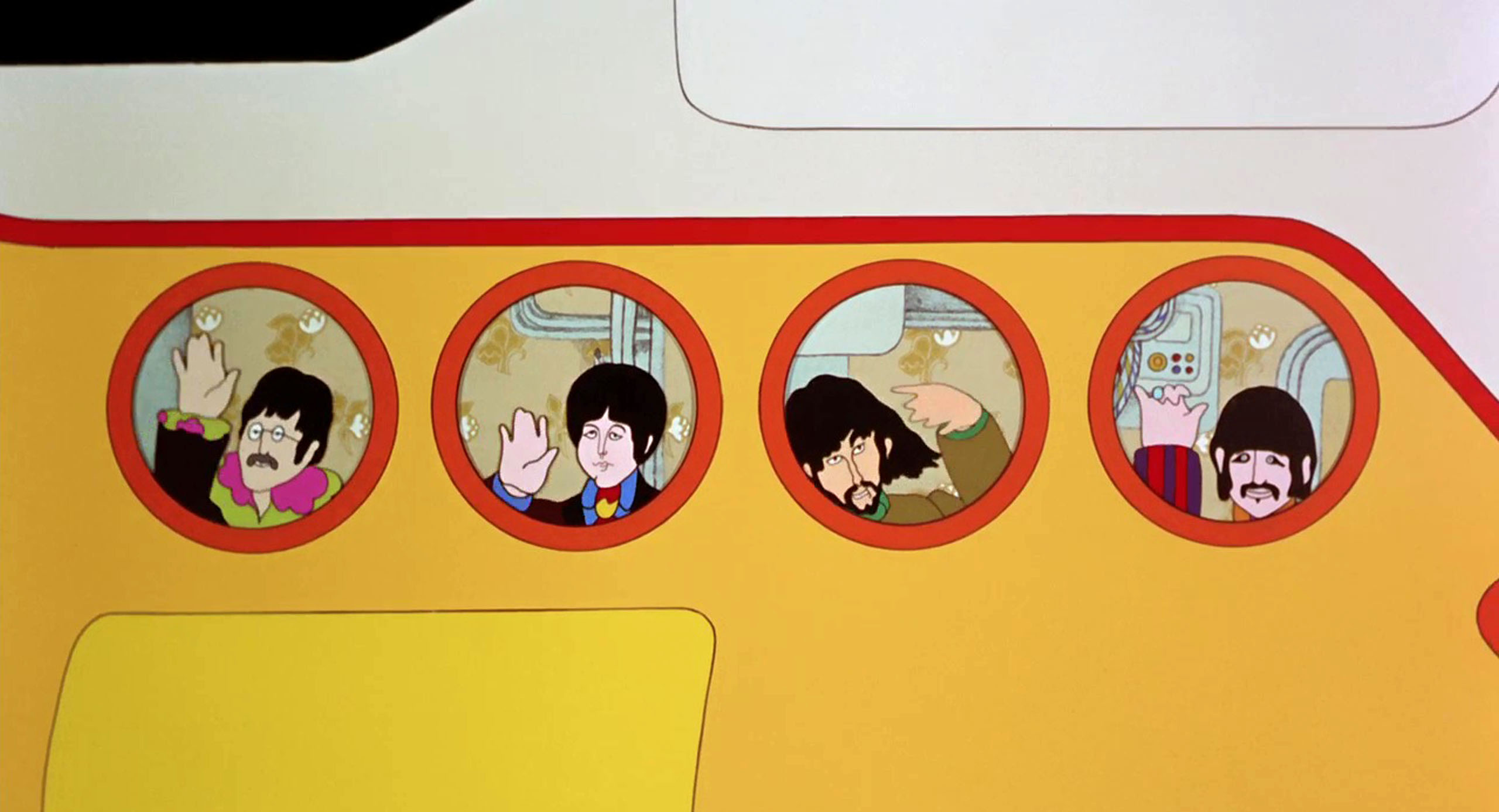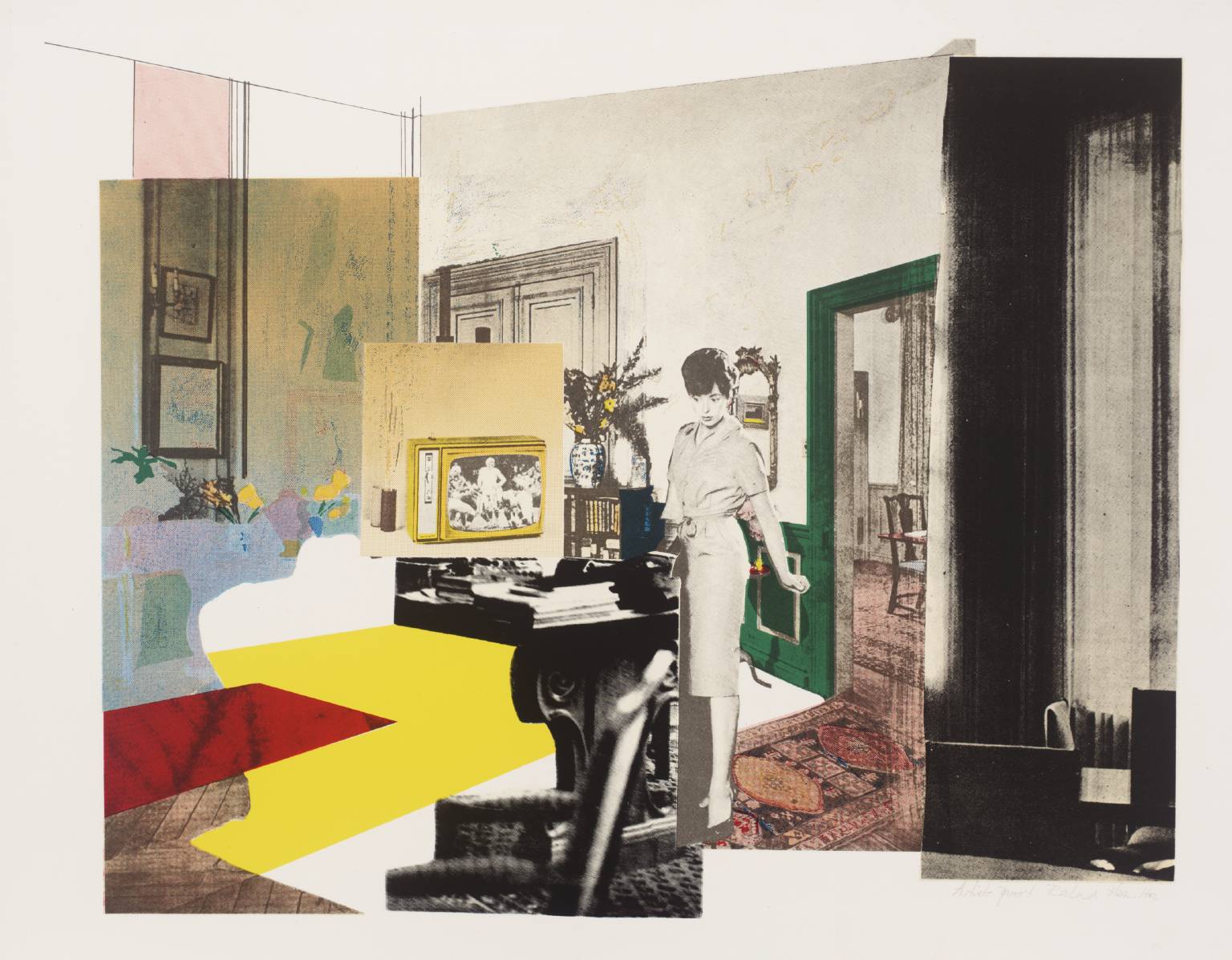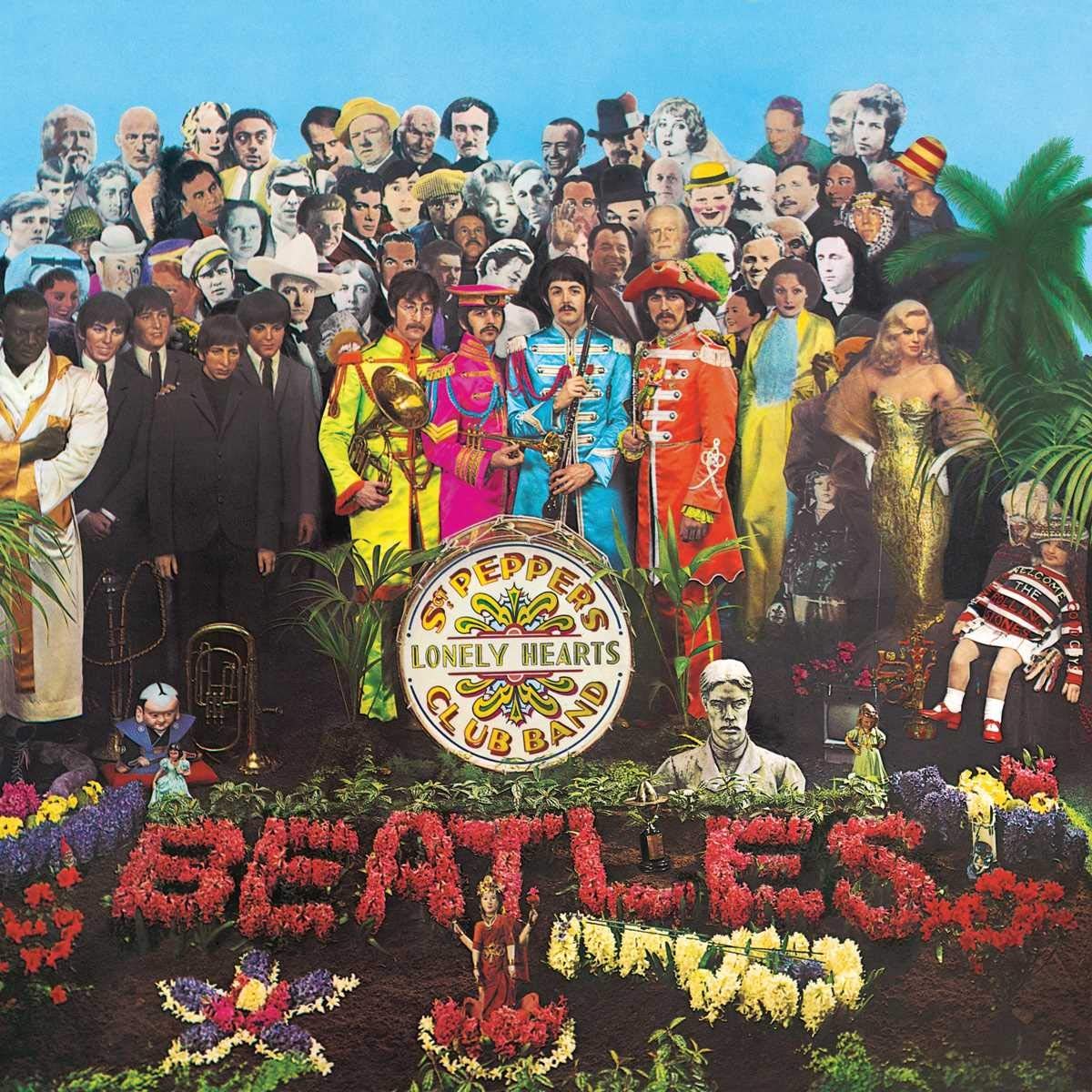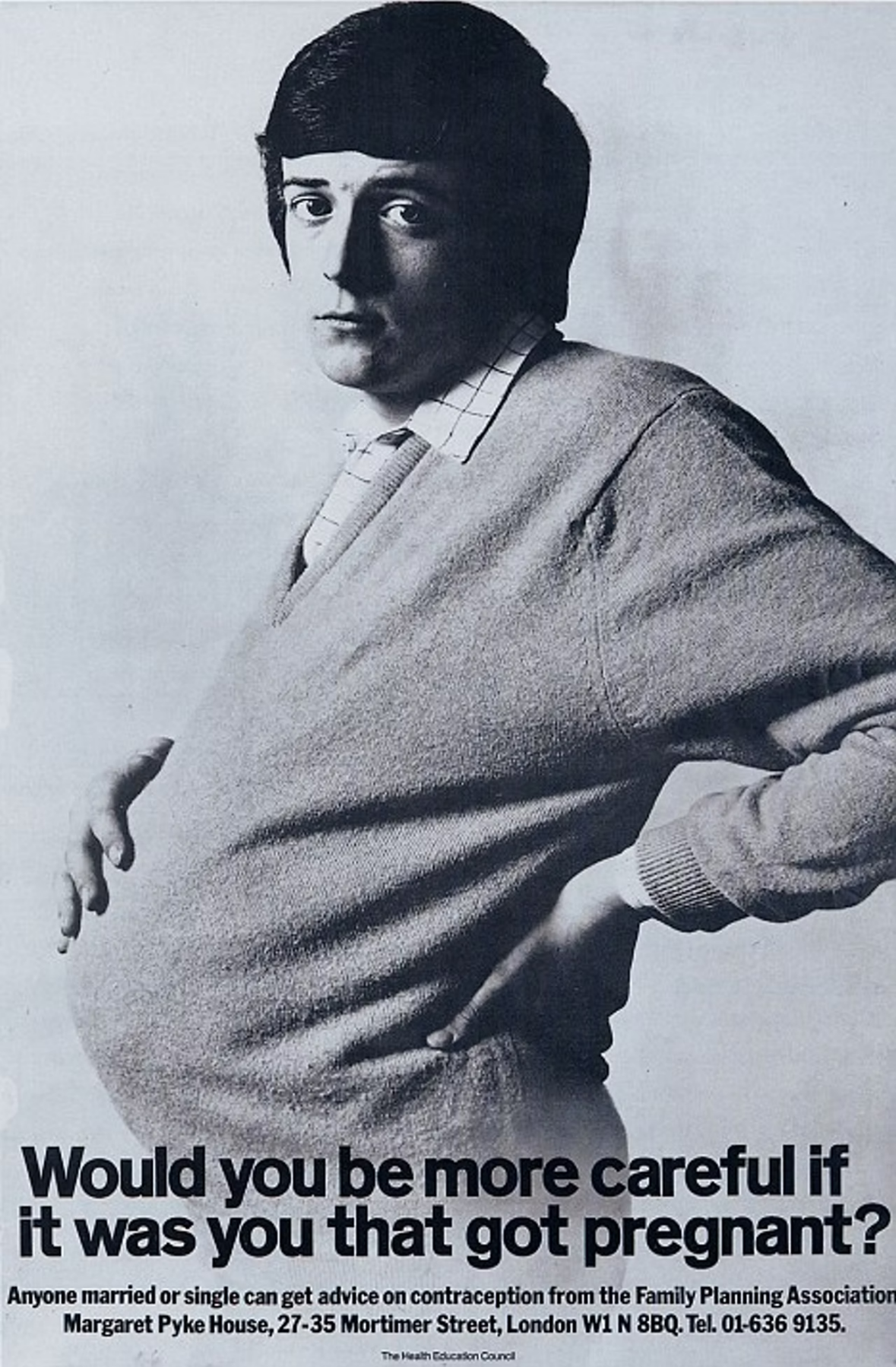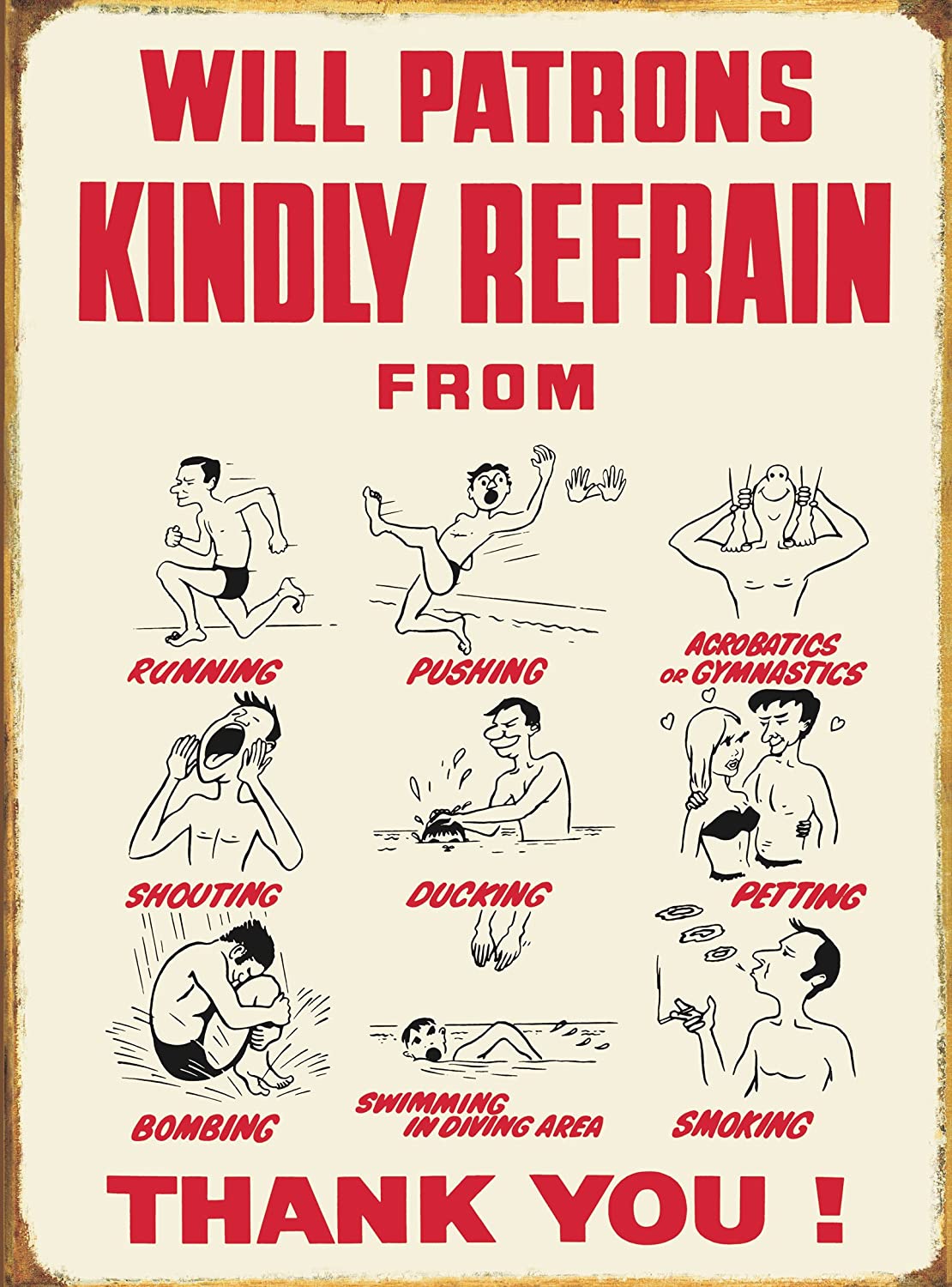Conceptual color development (Part 2)
'There's never been a colour movie I've freaked out over except one: this thing called Deep End' – David Lynch The film Deep End (1970) introduces us to the life of young Michael (John Moulder-Brown) just as he begins to work in the Newford public baths. There he meets his partner Susan (Jane Asher) to whom he feels attracted and will end up becoming obsessed with her rejection. The film is about dealing with sexuality and intimate relationships that took place in the Swinging London, between mid-60s and early 70s, due to the sexual revolution that happened with the introduction of the contraceptive pill in 1964. Taking advantage of the social context and the chromatic explosion of the time, Jerzy Skolimowski uses the screen as if it was a canvas. Through the use of color, he manages to define the characters and the interactions that take place between them, expressing ideas and concepts in a purely visual way.
All excerpts from Deep End BFI Blu-ray edition © 2011 British Film Institute. All rights reserved.
Spoiler Alert: Crucial plot points are revealed in the interest of the analysis.
17. Anger
After the incident at the movies, Michael and Susan seem to have reconciled. There, they kissed. M feels that they are the closest they have ever been. However, she still thinks he's a kid. S remarks to him that she is engaged and is getting married soon. Later, M discovers that S is secretly having sex with the Professor during her shift. This discovery causes him so much frustration that he angrily tears a poster —which lead to one of the most intimate moments between both— and activates the fire alarm in order to immediately interrupt what was happening. As Michael's destabilization progresses, red color has more presence in the sequences. More red elements appear: the alarm, blood, fire extinguisher, ties or the cross on the first aid kit.
18. Instability
Michael discovers that this is not only a betrayal of his feelings, but they have also corrupted his comfort zone, his green and blue routine and familiar world.Activating the alarm causes chaos in the bathrooms. Everyone exits into the hallway, looking perplexed. Colors show this disorder: a man with an orange towel, Susan with a blue shirt and a woman with a purple shower cap.Mike is furious to realize about Susan's relationship with the professor. From this moment, a chromatic variation occurs and will be accompanied by an obsessive increase towards the figure of S.
19. Obsession
Susan leaves work and gets into the Professor's car. Mike disapproves of their relationship, tries to block them out without success and ends up with his bike broken. He has been able to prevent the situation before, but now it is impossible since he has no power (chromatic control) outside the bathrooms. Reds predominate in this scene: the car, the mailbox, the traffic light, the bicycle and the Professor's scarf.
20. White
We get the impression that Kathy and Michael were formerly a couple or had a romantic relationship when they visit Michael in The Baths. The discussion reveals that they desired a sexual relationship, but it was not fulfilled since they were undoubtedly unprepared. Kathy begs for another opportunity, but Michael graciously declines, feeling that he has changed and is no longer the same guy.K offers him the opportunity to try again, to learn together, to start from scratch (in the film: without assigned colors), but M has decided he will continue down the tortuous path of conquering Susan. If the sum of experience, maturity and seniority results in dark or grayish colors, which are those used by the majority of adults; WHITE, therefore, will be associated with youth or lack of experience. Sum of experiences/colors = maturity. Lack of experiences/colors = youth.
21. Youth & maturity
It is important to note that in social environment, young individuals always try to project an image of maturity and adulthood, giving the impression that they are older and more experienced than they actually are. Because of this, young people imitate grownups and hide their puberty —Mike's blue essence, in this case— by dressing in gray or black clothes. The opposition between achromatic colors is completely defined: white-black/ youth-adulthood. When we mix colors using paint, we are using subtractive method, which means that one begins with white (youth) and ends with black (adulthood); as one adds color, the result gets darker and tends to black.
22. Nightlife
Michael receives his first salary. He feels more mature, more adult. He decides to spy into Susan's private life again. He has no experience or knowledge of the nightlife world, so he doesn't quite feel at home. He receives a multitude of incentives that he tries to deal with: private clubs, membership, rules, dealing money, drunk people, fights, strippers, prostitution, Christianity, the Bible, fast food, girls... The overwhelming presence of all colors/chromatic concepts defined in the film serves here to express Mike's inability to assimilate so many external factors. At the same time reflect his progressive emotional destabilization: yellow and green walls of SOHO, orange lights of the entrance to the private club —which perfectly show Mike's obsessive thoughts about Susan, who is still inside the club—, pink, purple, yellow, brown or white clothes of passers-by; or the red, blue and yellow ones of the hot dog stand.
23. Beata
Michael steals a life-size poster/portrait of a nude model who looks like Susan and hides inside a building. There he meets a prostitute (Louise Martini). She ironically calls herself Beata, the name given to those who have been beatified by the Catholic Church for having led an exemplary Christian life, worthy of being remembered and who receives public worship at certain events or places.Beata welcomes Mike into her room. Skolimowski continues working on the idea of bombarding the character with a multitude of colors, although logically violet has more presence here, since Beata personifies the concept of sexuality. He also continues the soccer-sex association through conversation and a room full of posters of soccer players.In the SOHO sequence there are several controversial ideas around sex generated directly by a clash of contrasts: Christianity-night-sexuality, football-sport-sex or prostitution-children's room-game. The rest of the movie has other ideas that challenge our morals and make us reflect: - Adultery and extramarital affairs.- Indecent attitudes and the abuse of power by adults.- Sexual education and awareness through the announcement of male pregnancy.- Sexual relations between young people and adults during working hours.- Fetishistic sexual relations with Susan's poster and Beata's body.
24. False blue
Mike's actions become increasingly embarrassing and confusing. In a small cameo inside the subway car, Skolimowski looks at him strangely.Mike's idealization of Susan clashes with reality. They argue about whether she is a billboard model. M criticized her for her carefree, free, and lewd attitude towards her love life. Her nude posed portrait is giving concrete form to the idea of this behavior. Mike take shelter to the pool, it is the only place where its chromaticity remains intact ans shares the same blue essence. Only in the pool, in this dreamlike space, can he bring his ideal Susan to life. He dives into water with the billboard to “color” it blue. M's deepest wish is that S love him and have the same blue nature as him. This scene shares a series of echoes with the final scene of the film: life-death, full-empty, cold-warm. And it is where Skolimowski takes the opportunity to include small doses of poetic, suggestive and evocative images that takes us on the border, between the feasible and the unusual, between the recognizable and the alien.
25. The end
Michael wants to boycott and win the race to show Susan that he is better than the Professor and wants to rebel against, but he ends up being disqualified for leaving early. This scene has a hostile atmosphere that creates a certain unease. Big red spots invade the screen, a gun moving up and down, red coats, coldness, pushiness and obtrusion. When Susan gets into the Professor's car, the tire bursts because Mike put a glass on it. After a strong fight, the diamond from S's engagement ring falls and disappears into the snow. To find it, they decide to collect all the snow around them, take it to The Baths and try to melt it. The progression of events has led to increasingly uncomfortable and embarrassing situations. When they enter The Baths, all elements reflect this emotional disorder. The concepts have been altered: the pool has no water, Michael does not wear blue, Susan wears yellow in the work space and, in the absence of other colors, reds have a greater presence in the frames; even in the discussion between Susan and the Professor, red is used in expressions such as, “your bloody cap" or "you're so bloody hopeless", which also foreshadows the ending. Susan returns from calling her fiancé and finds Michael naked, he has recovered the diamond, but he doesn't seem to have any intention of returning it. S broke up with the Professor and also had a fight with his fiancé, so he decides to end the situation and M's game. She takes off her clothes and stretches next to her. The scenes are chaotic, fragmented, and full of detailed shots taken with a macro lens. Everything leads to a failed experience and S decides to leave. Mike, frustrated, wants to talk about what happened and try to fix the situation. Susan calms him down and tells him everything is fine and there is no need to worry. Colors are still not where they should be: the boy covers himself with a yellow towel, she with a green one, and the water is not blue. M wants to prevent S from leaving, they begin to argue and the tension increases —the threatening presence of water, electrical cables and the echo of voices— until tragedy occurs.
26. Structural relationships of the color wheel (II)
As a summary, color oppositions presented in the film can be broadly divided into two categories of color temperature: Warm and Cool. Warm colors are colors that tend to be dynamic, expansive and more active, unlike cold colors that tend to be static, contraction and more passive.Within this scheme we also find other groups of opposites: Complementary Colors // Bright- Dull Colors // Achromatic Colors (Black-White).To complete the entire color conceptual scheme of this film, we need to add a few more points about violet and beige colors: On the one hand, Violet, which is associated with the concept of sexuality, can cause confusion because it belongs to cold colors range and falls within the spectrum of colors associated with Michael’s character. The peculiarity of Violet is that it changes into a cold or warm range depending on whether you apply more blue or more red. Similarly, sexuality can have cold or warm aspects, depending on whether it is treated with more indifference and distance, or with more passion and devotion. Violet could therefore be perceived as rejection or attraction, and this helps to emphasize the film's critique of how late 1960s British society deal with sexuality. On the other hand, the color Beige acts as a link between the Professor and Susan. It is a bridge between Brown and Yellow, but it can also generate some confusion, since there are more characters apart from P who also wear Beige. Beige is a color closer to white than black, so perhaps it is due to a more immature adult attitude. Even so, it remains slightly undefined.
27. Premonitions
Skolimowski warns us from the beginning, with the blood-spattered opening credits, that the story will have a bitter tone. In fact, the film is delimited —it begins and ends with stained frames— by red paint and blood. Throughout the film there are several tonal incursions: the darkness of the spaces, the repeated appearance of hanging lamps or the progressive relevance of the color red. The key scene that announces the final tragedy (also here in the form of an echo) when Mike hits the lamps in the hallway, while shaking and generating intermittence between light and darkness on Susan's face. This lead to the next scene where the wall is painted in red behind her while she is eating breakfast. SKOLIMOWSKI: «I’ve always admired T.S. Eliot. He is my favorite poet of the whole history of poetry. The poetry which I was writing in my youth taught me the use of metaphor. That’s visible in my films, and in my paintings as well» (Sachs, 2011).
28. Screen-Canvas
Skolimowski usually frequents painting and for a time even left directing aside to dedicate himself exclusively to painting. In Deep End he transfers this passion to the film and organically integrates in his frames elements related to painting: a painter, paint cans and painted walls. He consciously wants to show us that a picture is a palette for mixing colors, and a film screen is a canvas on which they can be applied.
29. First sequence
According to Skolimowski, the film was not well received by the public. The audience of the time did not understand the film. Possibly they did not accept the tragic ending with the absence of a happy ending. They wanted the film to be seen as a love story, rather than an invitation to reflect about how to deal with sexuality and relationships in the midst of a sexual revolution. A clear example is that Skolimowski knows very well what he wants to tell and how he wants to tell, it is the (announced) tragedy that closes the story. The ending takes the viewer by surprise because it has accepted that no character in the film has done anything to prevent the ending. It confuses us and a sense of uncertainty hits us. We believed this behavior was acceptable and the audience must face that something they considered banal has become crucial. Another example of his narrative mastery is the first sequence in which he uses all the colors and already concentrates several elements that are the protagonists of the plot conflict: hanging lamp, teapot, adult and feminine figures.
30. Some years later
A curious anecdote is that John Moulder-Brown (Michael) appears in several interviews wearing blue necklace and shirt.On another occasion, when he is interviewed with Jane Asher (Susan) he appears surrounded by violet seats, a funny fact if we know what this color means to Michael.By the way, now they are adults and can safely wear black and brown.
Excerpt of Starting Out: The Making of Jerzy Skolimowski’s Deep End. © 2011 Bavaria Media. All rights reserved.
Excerpt of The King’s Brother: John Moulder-Brown on Luchino Visconti’s Ludwig. © 2017 Bavaria Media. All rights reserved.

